Annual Report – 2017
Annual Report – 2017
2017 ANNUAL REPORT
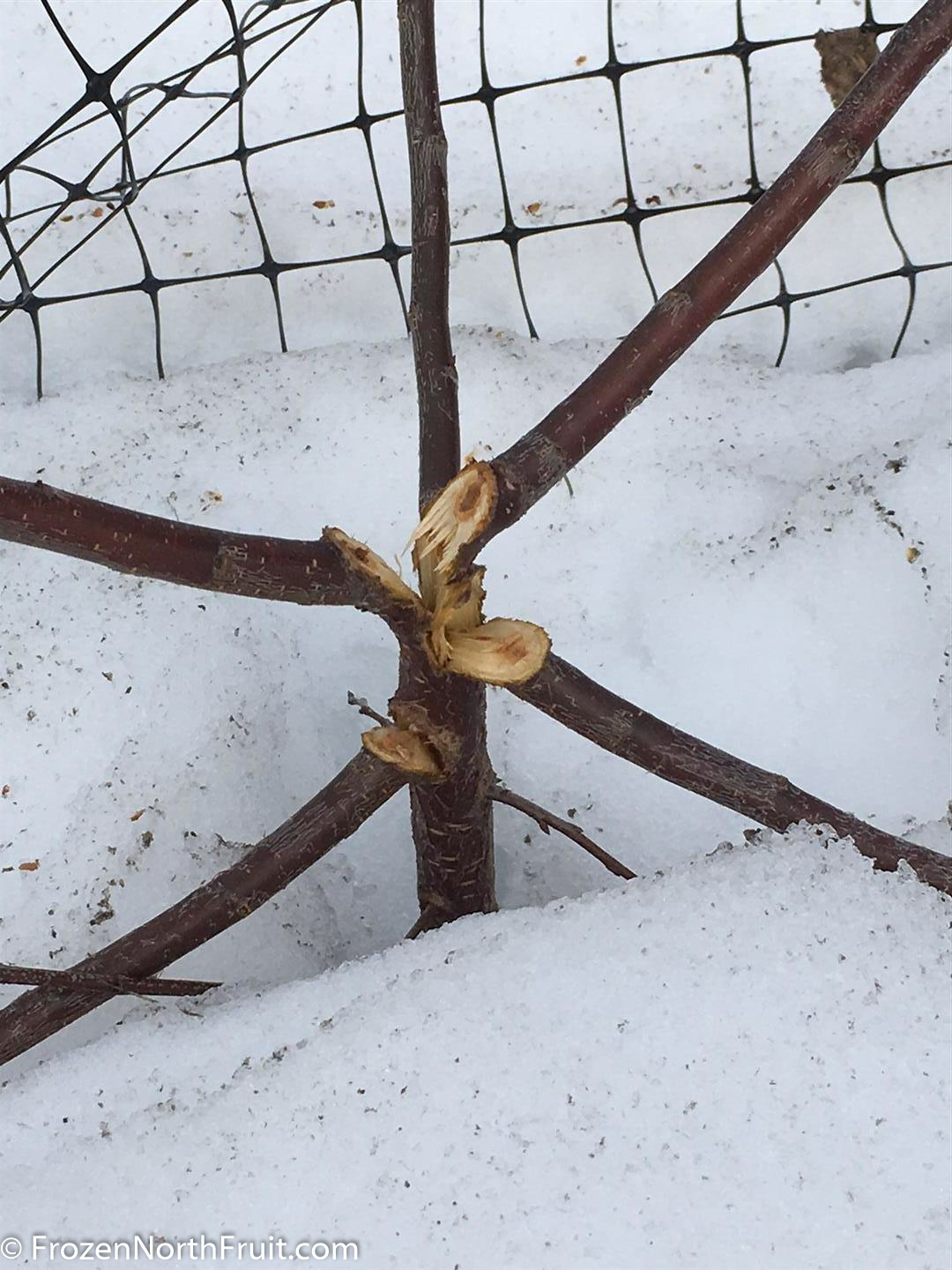
Final melt was April 11-12 which was 2 weeks later than 2016 (near full melt April 1, 2016 but then 1 foot snow April 9 with final melt April 12-13, 2016.
Crocuses started flowering April 15 which was 2-3 days later than 2016.
One thing different this spring is the amount of rain. April had 147mm of rain, nearly 6 inches! By May 7 we are anticipated to have over 100mm of rain (4 inches) in the first week of May! I have a great deal of standing water around so I guess I am going to see truly how collar rot resistant my trees are. While they are in raised mounds, by now 90% of the roots are probably deep enough to be swimming.
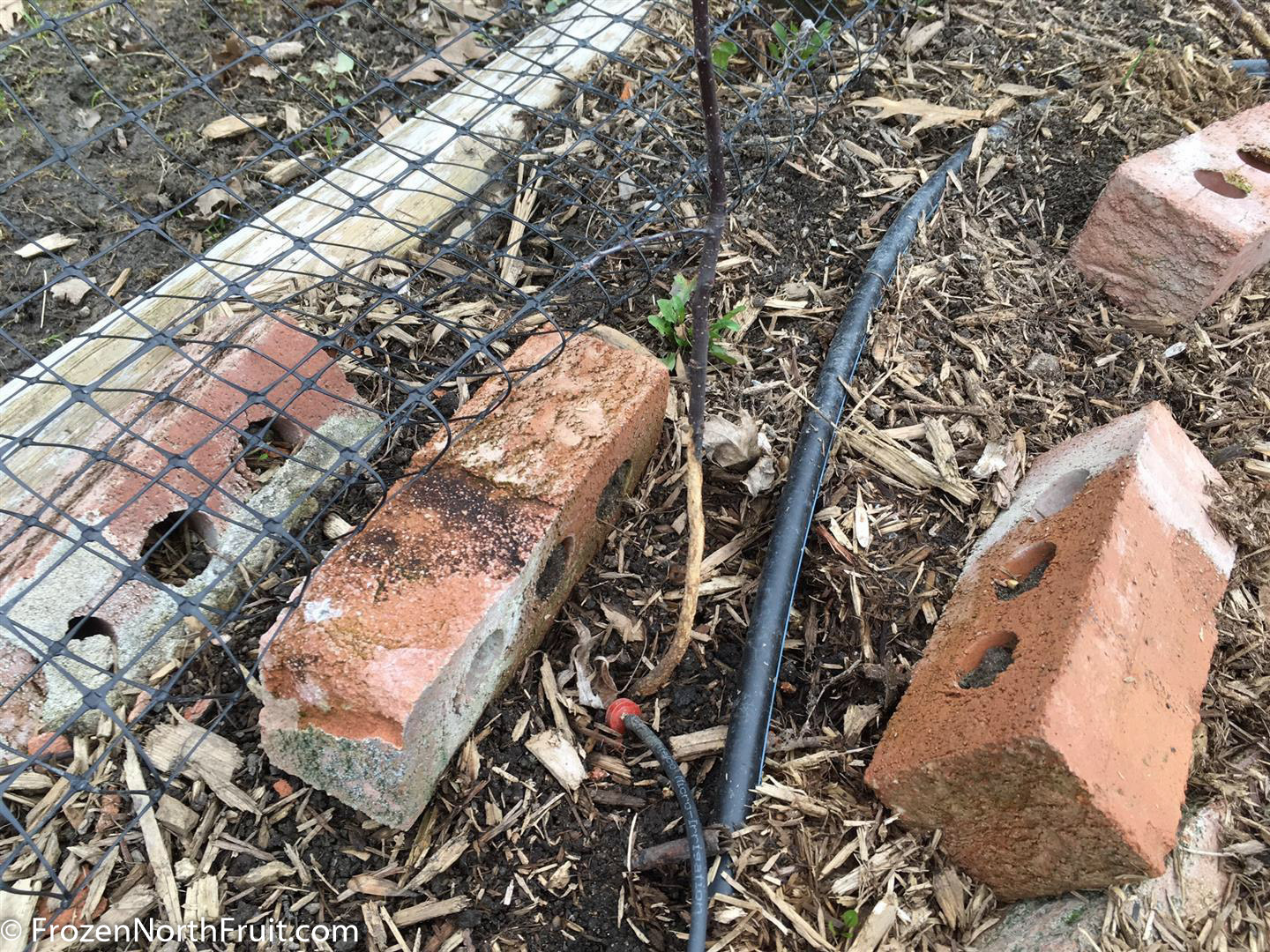
2017 Plant additions
Apples
Carroll
Chestnut
Scarlet O’Hara
Summer Red – found apple
Sweet 16
Trailman
Yellow Reinette – found apple
Apples (zone 2)
Altari mountain – applecrab
Amber – applecrab
September Ruby
Sunnybrook
Redstar (perhaps Red Mike)
Euro pears
Beedle
Golden spice
Harrow Sweet
Harvest Queen
Julienne
Krasnobokaya
Krazulya
Lucious
Patten
Dome – found pear
Vekovaya
Asian pears
Kikusui (or seedling of Kikusui)
Olympic
You China
Plums
Alderman
Brook Gold
Brook Red
Damson white
Green Gage
Gypsy Chum
La Crescent
Mirabelle
Opal
Petite de la Sour Mont Royal
Red star
Sinikka
Skiba
Sprouts Sunshine
Apricots
Riley apricot
Riley seedling apricot
Westcot apricot
Debbies Gold
Peach
Harrow Diamond
Vulcan
Chinese
Grapes
Brianna
Canadice
Einset
Himrod
Kay Gray
Montreal Blue
Prairie Star
Roland
Skookum
Swenson white
Trollhaugen
Persimmon
Seedlings
Haskasp
Boreal Blizard
Boreal Beauty
Mulberry
Illinois Everbearing
Grafting
Last year was my first experience with grafting and it was so easy and successful that I may have gone a bit overboard this year with grafting with over 100 grafts. Main reason for this is that I have reached a ceiling limit for the number of trees my spouse will let me plant so to add varieties I need to graft them. That and the fact that I would rather have a dozen or two of fruit from a grafted branch picked and eaten at the perfect time as opposed to having to find things to do with a whole tree all ripening at once.
It was nearly 2 solid weeks of planting and grafting every day after work and on the weekends.
Here is an example of my crazy grafting – voila my new Frankenpear! Yes some of the scaffolds are too close but I had too much scion wood and not enough places to graft so I am going to nursery them this year and then cut the cramped branches back this fall and re-graft next spring on wood that grows this year.
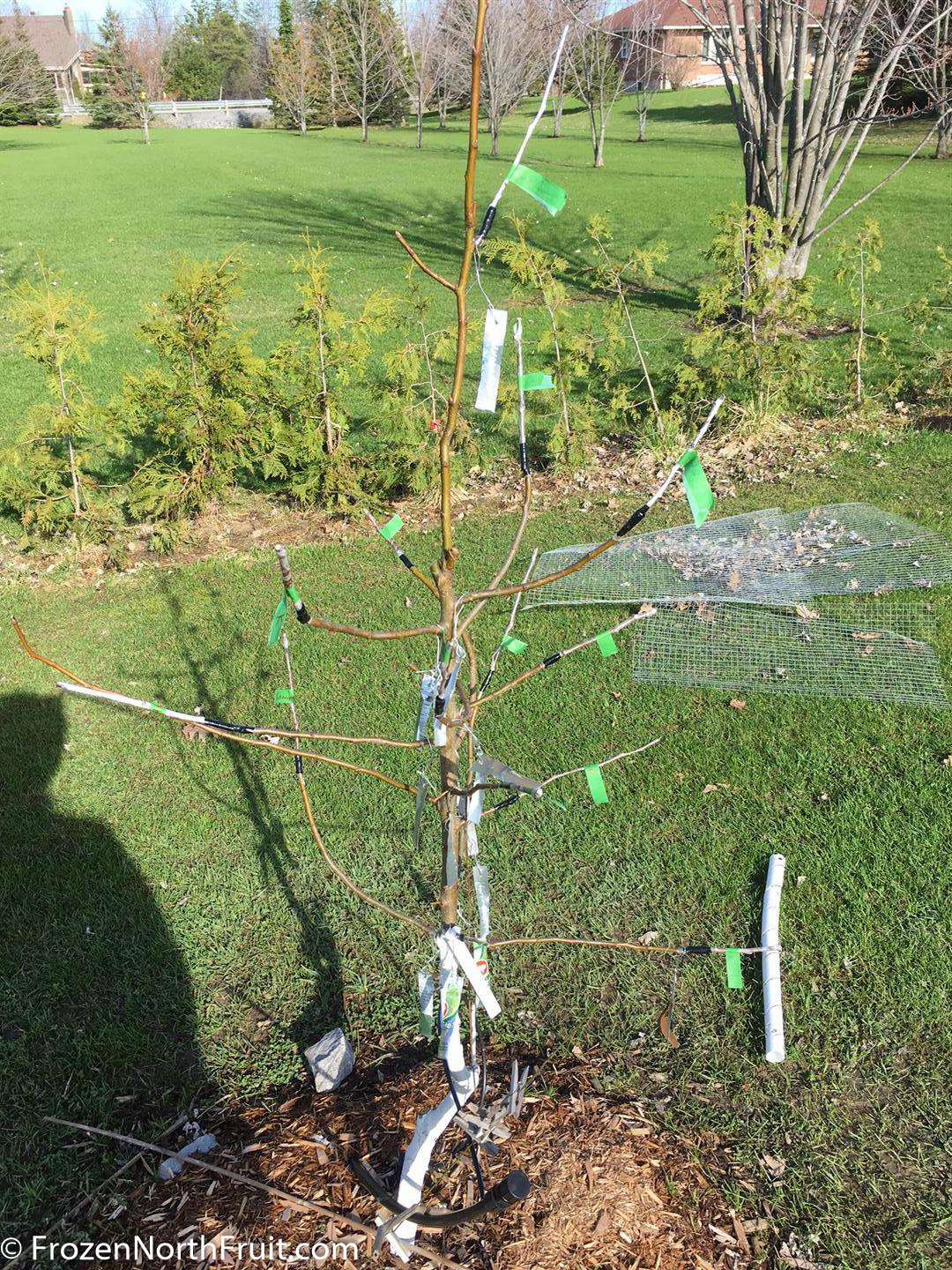
Orders
Purchases this year were from:
Treetime.ca
Whiffletreefarmandnursery.ca
Hardyfruittrees.ca/
Silvercreeknursery.ca
Vigneschezsoi.ca
I have not received my order yet from Silvercreek or Vignes chez soi but was happy with what I received from the other 3.
Yet again Whiffletree impressed with the size and roots. I can’t recommend them enough.
The 2 bundles to the left are Antonokova and OHFX97 root stocks, then 3 persimmon seedlings then 2 Debbies Gold apricot on Mustang and then La crescent plum.
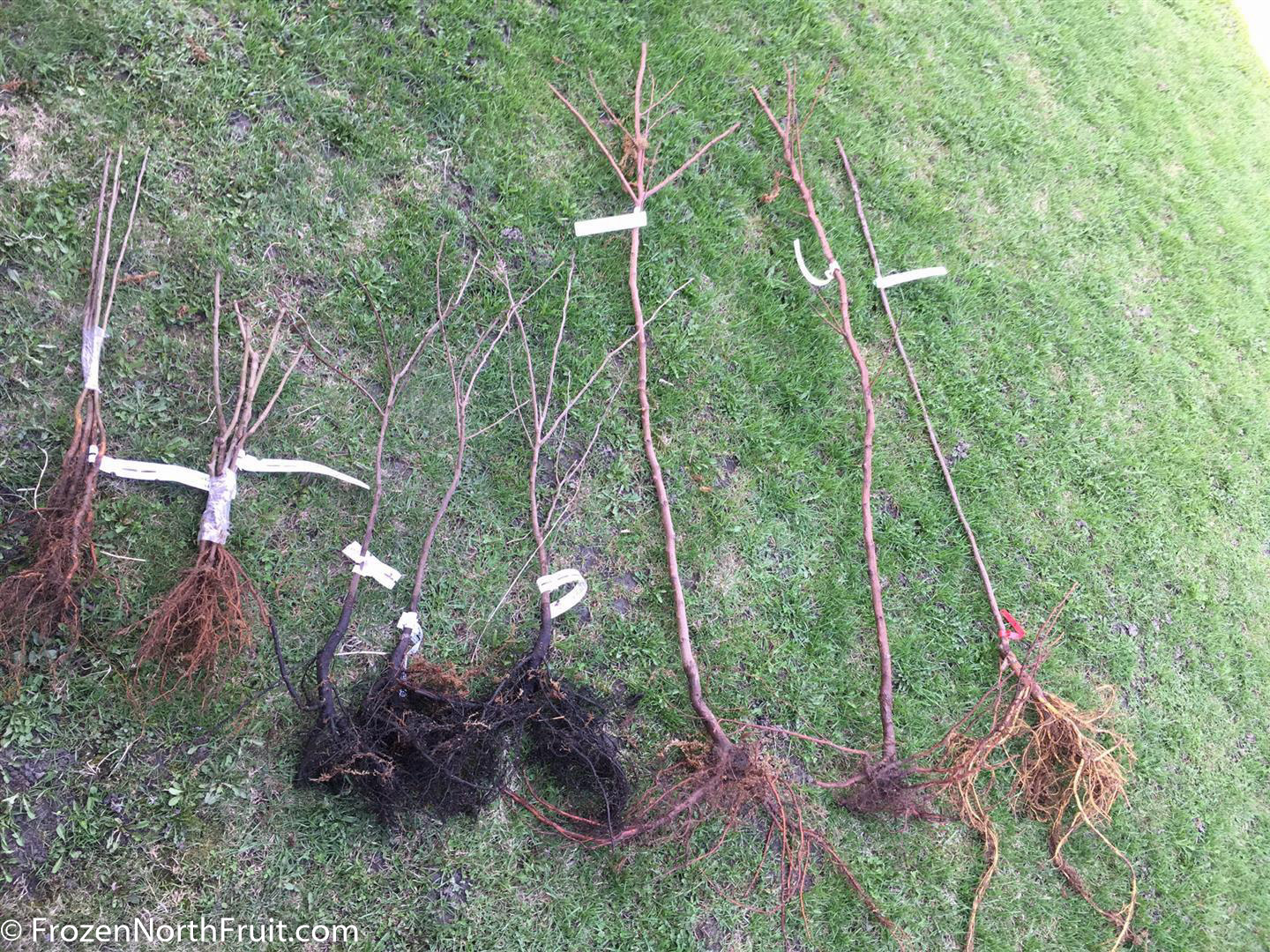
Flowers
It is a bit early still to tell but things are looking VERY good for this year. Last year I got berries and 4 apples (Liberty, Macfree, Redfree and Crimson crisp). No pears nor plums. This year I see A LOT of what look like flower buds on all my planted apple tree, most of my grafts that took last year and all my plums and chums. I am really crossing my fingers for no late frost this year so I can really start tasting more stuff!
Pest protection
Only 1 spray of dormant oil so far. I have neem oil that will probably paint on my trunks for borers. I will continue to bag my apples and grapes. I want to try spraying Surround on my plums (I had a couple plums that pollinated last year but all aborted from PC worms). Problem is that while Surround is classified as a class 4 pesticide here and should not require a certificate to purchase or use the local vendor calls it a class 3 and won’t sell it to me. As I only want to buy 1 bag it is not like I have incentive for him to more closely look at their restrictions. So I am reading a textbook and will take an exam to get my pesticide license just so I can buy stupid powdered kayolin clay that is less harmful than powdered concrete. We will see if I can get this done in time for fruiting!
So there you go. Spring report done. I’ll be back later in the summer/fall to fill in on how it goes.
Fall 2017 Report
As mentioned in my spring 2017 post this winter was long lasting
156 days with over 10 feet of cumulative snowfall but with a rapid warm up in April.
So for example while 2015 rhubarb crown break was May 1, in 2016 May 10th, and this year was April 17! Grapes had first leaf 2015 of May 9, in 2016 it was May 21 and this year was May 18.
Last frost was May 9th vs May 17th in 2016. That means from first to last frost, winter lasted 211 days in 2017 vs 214 days in 2016. First frost was Oct 1st vs Oct 11 in 2016. That gave a frost free season of 146 days in 2017 vs 148 days in 2016.
With the super wet spring I saw nearly NO regular honey bees. Fortunately I have planted Muscari and Daffodils which heavily attract Bumble bees which were my main pollinator (well and the fact that I hand pollinated most of my apples to make 100% sure). I also really think Haskasps have a role in every garden, not just for the fact that they are the earliest fruit to ripen but also that they bring pollinators like Bumblebees into the garden very early in the season and keep them around for a significant period of time.
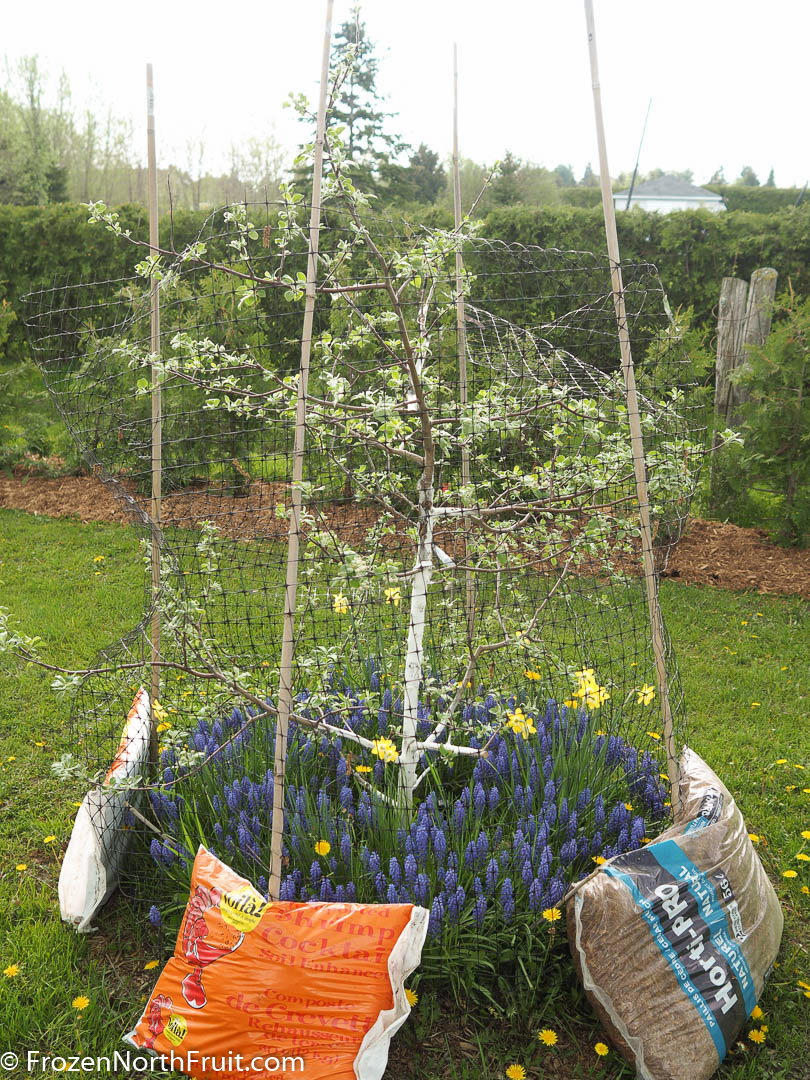

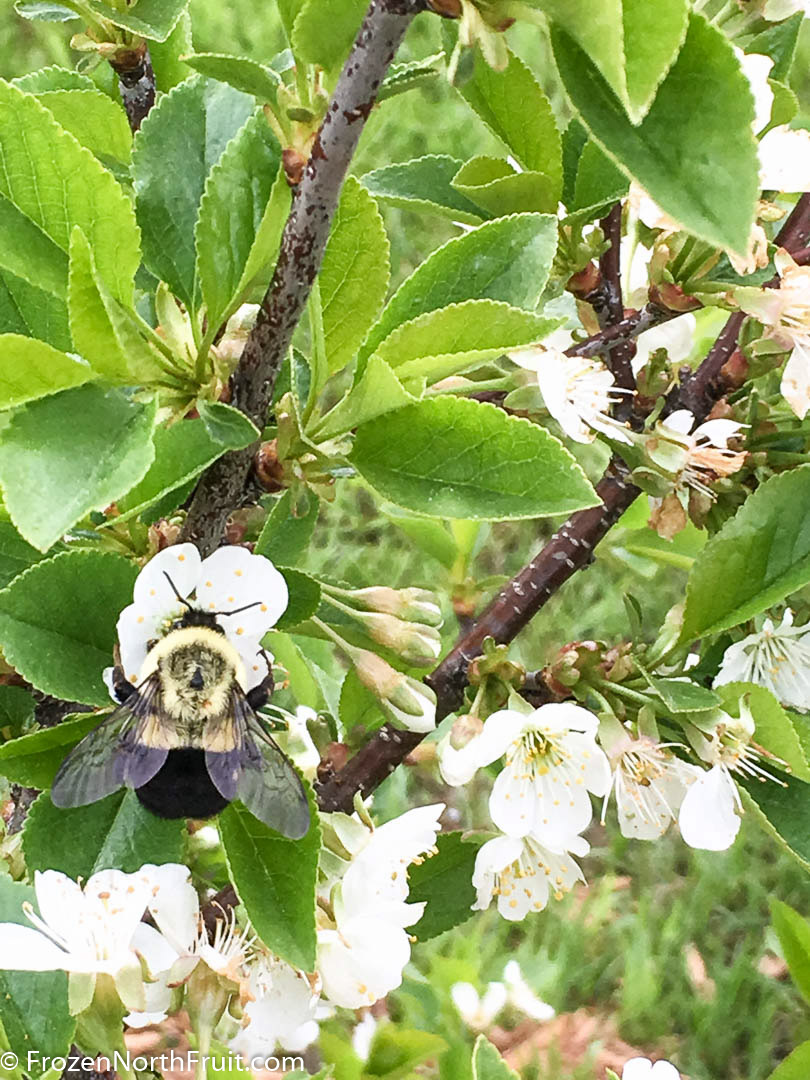
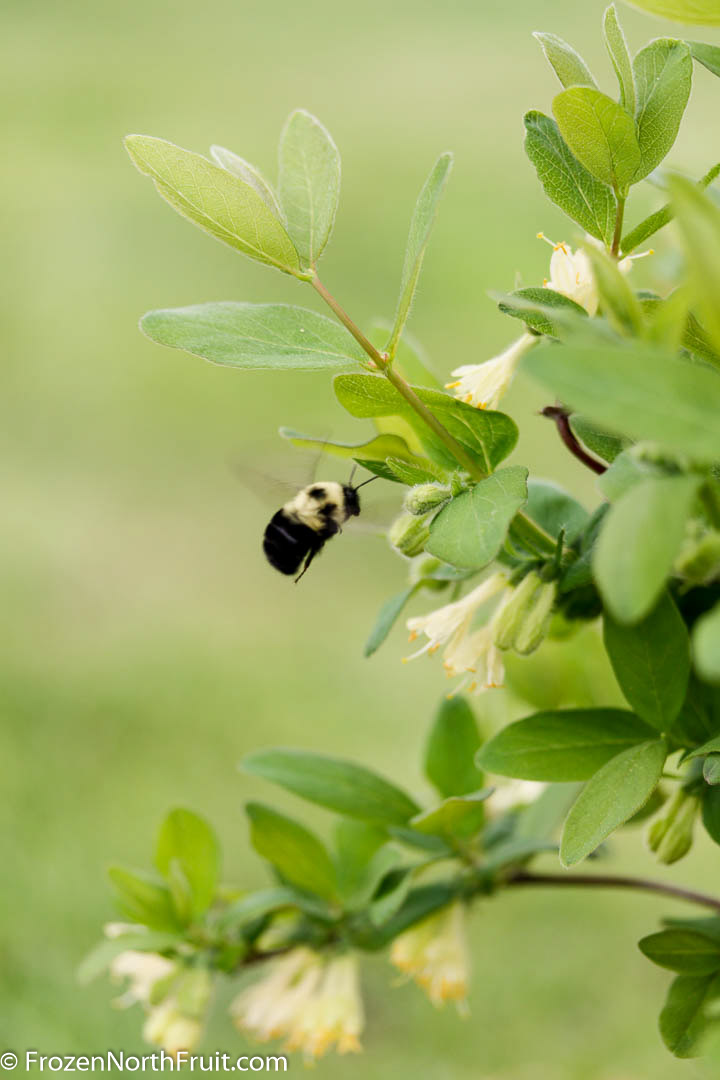
Now that aside onto the fruit!
Apples – This photo is not all my apples. Just the ones from a tasting I held at work. The favorite by far was Crimson Crisp with Liberty slightly edging out Macfree in 2nd place. Egremont Golden Russet in 3rd. 6 weeks in the fridge, no one liked Pristine. No one liked Ashemead Kernel.

From left to right: Pristine, Macfree, Liberty, Norkent, Ashmead Kernel, Egremont Golden Russet, Crimson Crisp.
Apple – Pristine Bud9- DR (Planted May 2015 from Whiffletree) – Survived. No dieback. Flowers started May 18 and peaked May 27. First fruit was obtained August 15th with mostly brown seeds. By August 20th the fruit was beginning to drop. They are very attractive apples being golden yellow with a rose blush. Hint of golden delicious flavours but as time went on a very strong floral note became predominant. Sweet tasting with brix ranging from 11 to 14 brix. Refrigerated apples became WAY to floral for my taste. Not sure I will keep them. (87 days from flower to fruit).
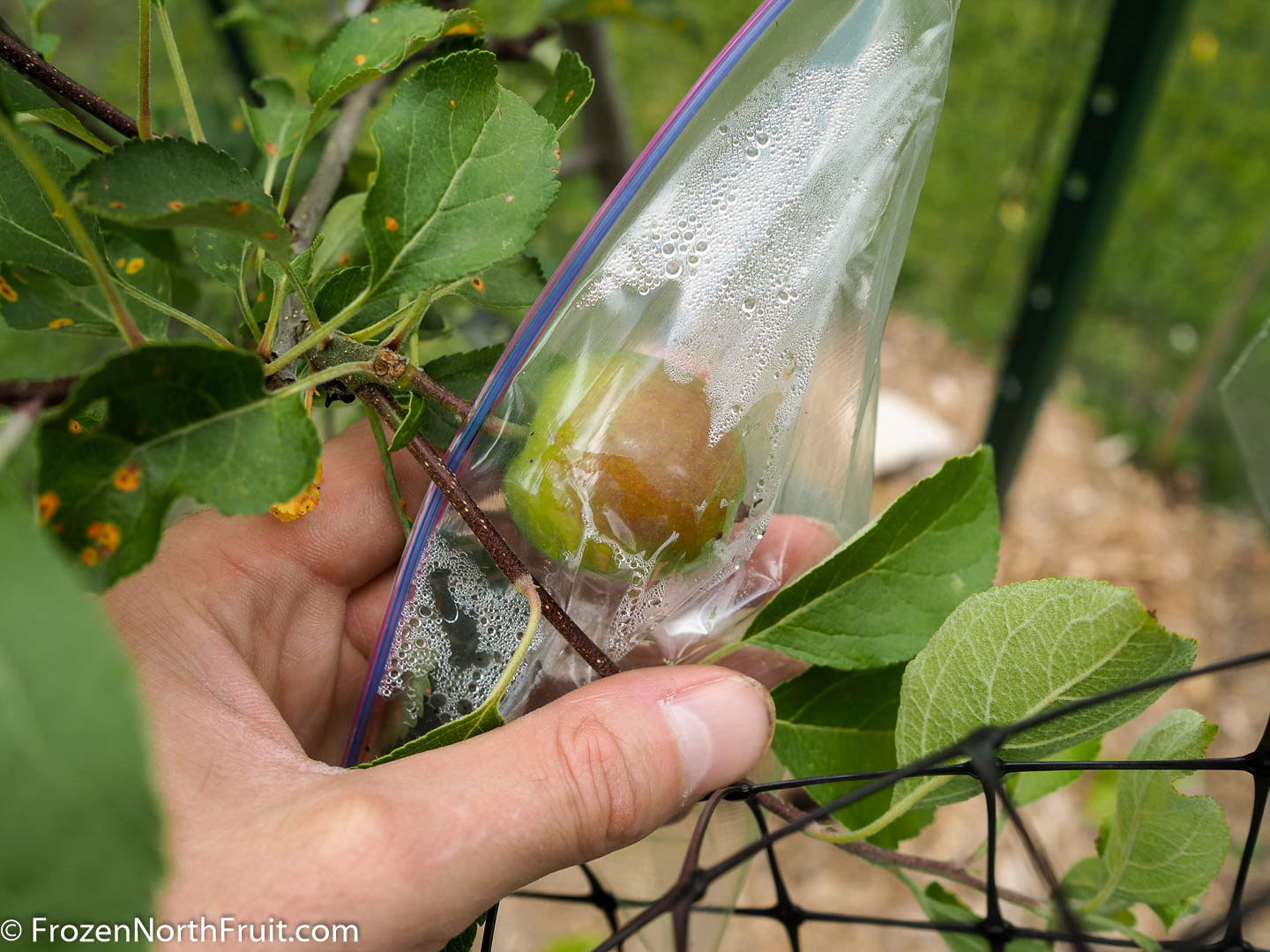
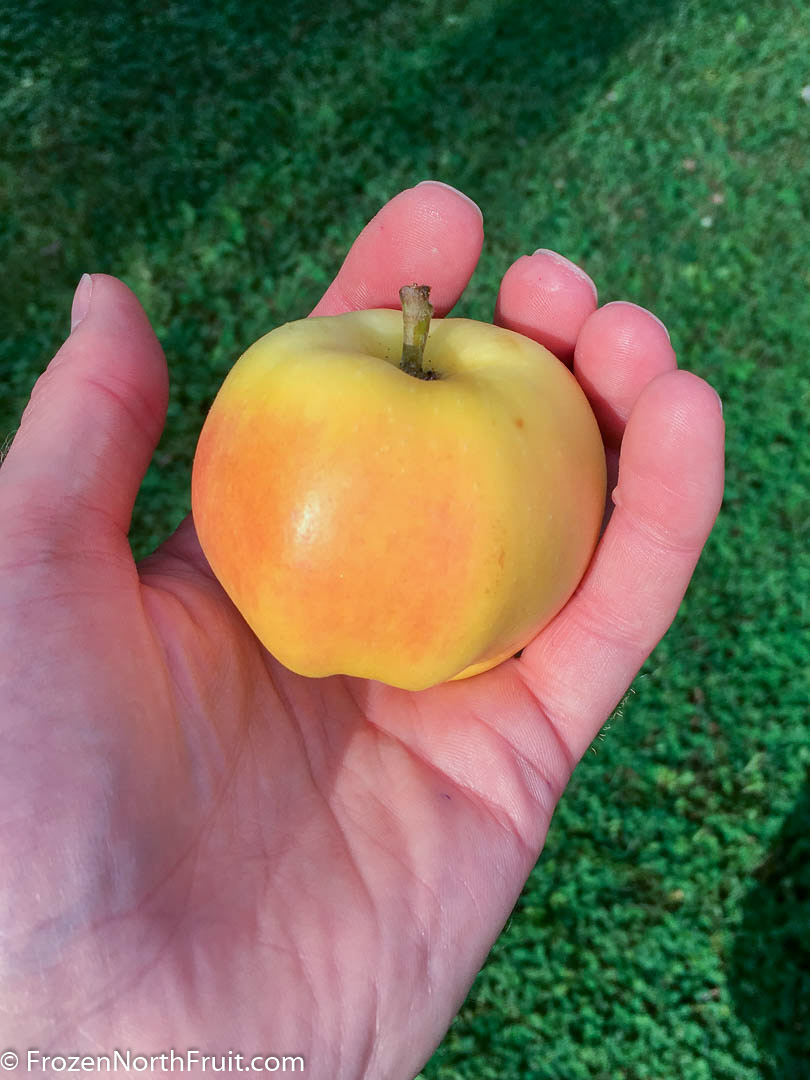
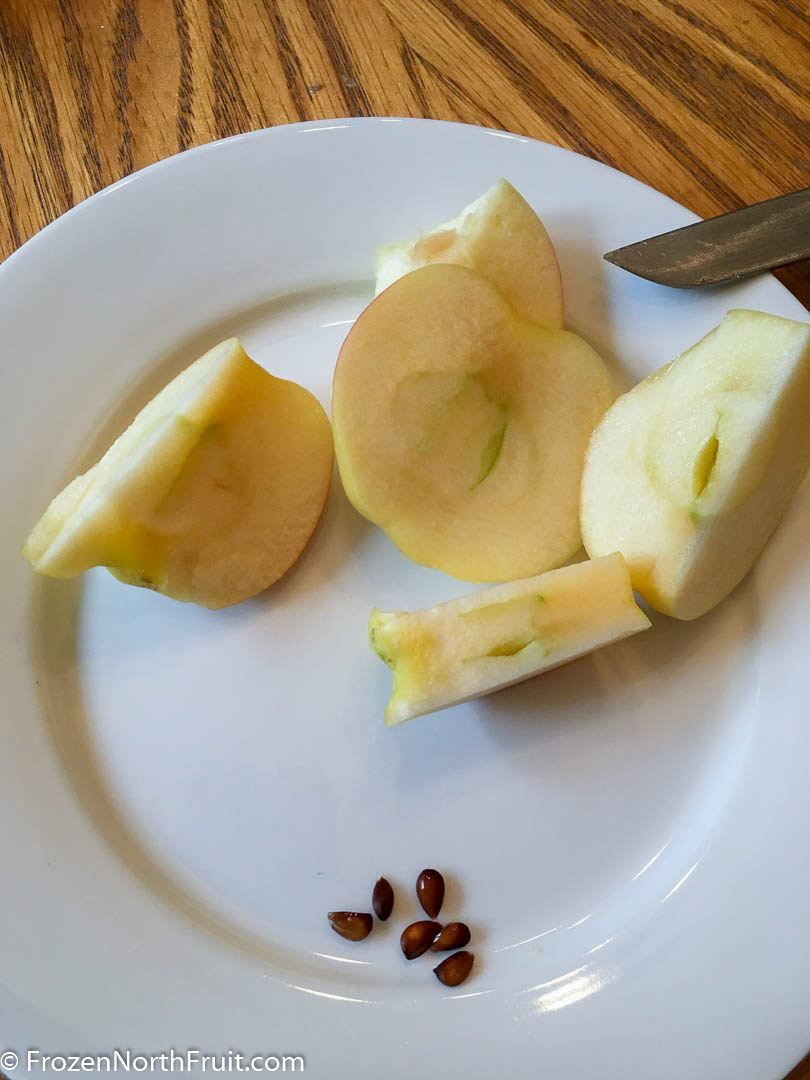
Apple – Redfree Bud9- DR (Planted May 2015 from Whiffletree) – Survived. No dieback. Flowers started May 23 and finished June 8. Fruit harvested from August 18 to September 1. Nice red apples averaging around 160g each. Earlier they were crisp and juicy with mild apple flavour and not much acid. The September apples were softening despite seeds being only about 70% brown. I liked them best when seeds were mostly white and flesh was crisp. A bug eaten one reached 16 brix but the average was 11-12 brix. (last year 110 days, this year 94-106 days from flower to fruit).
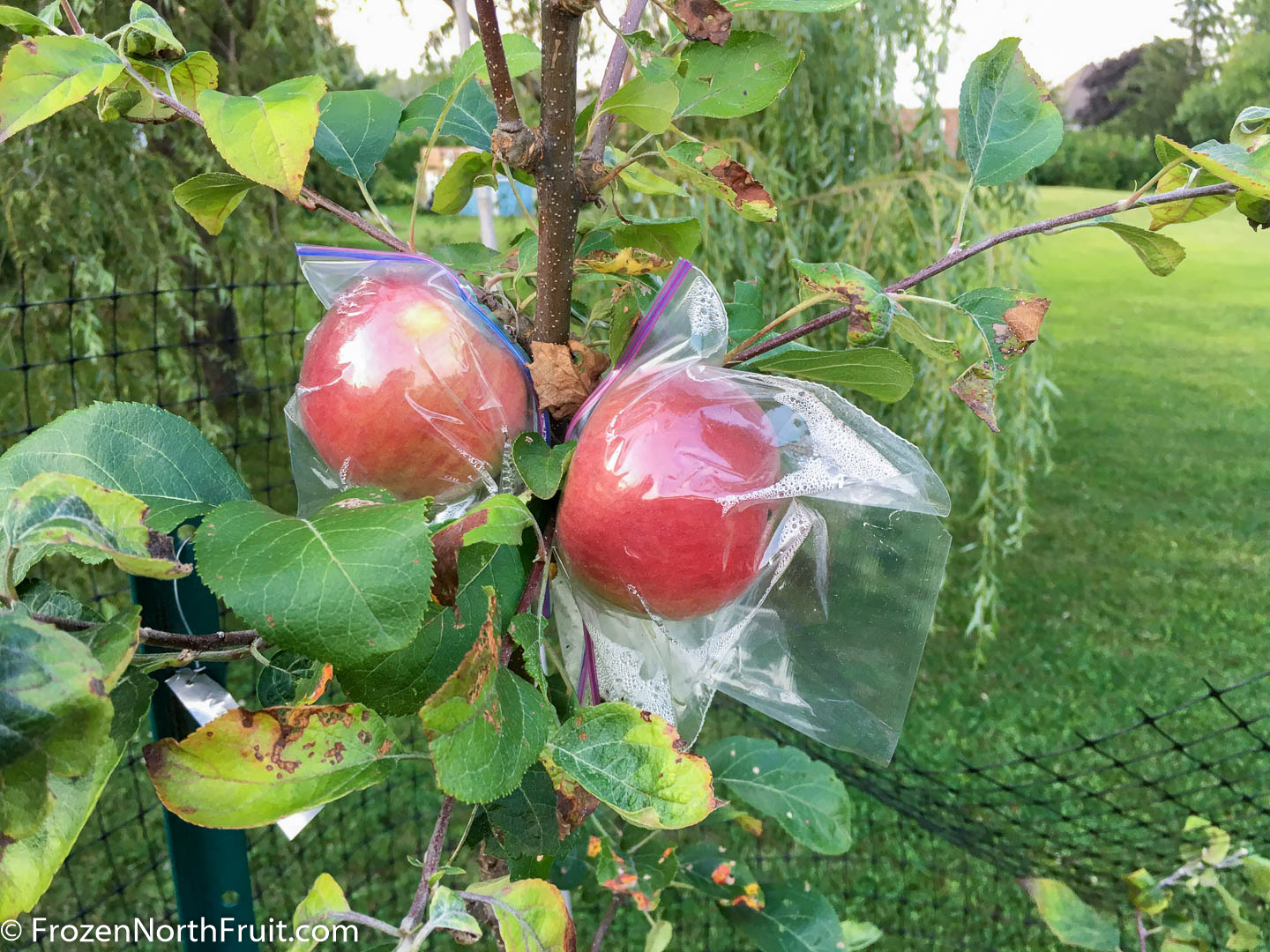
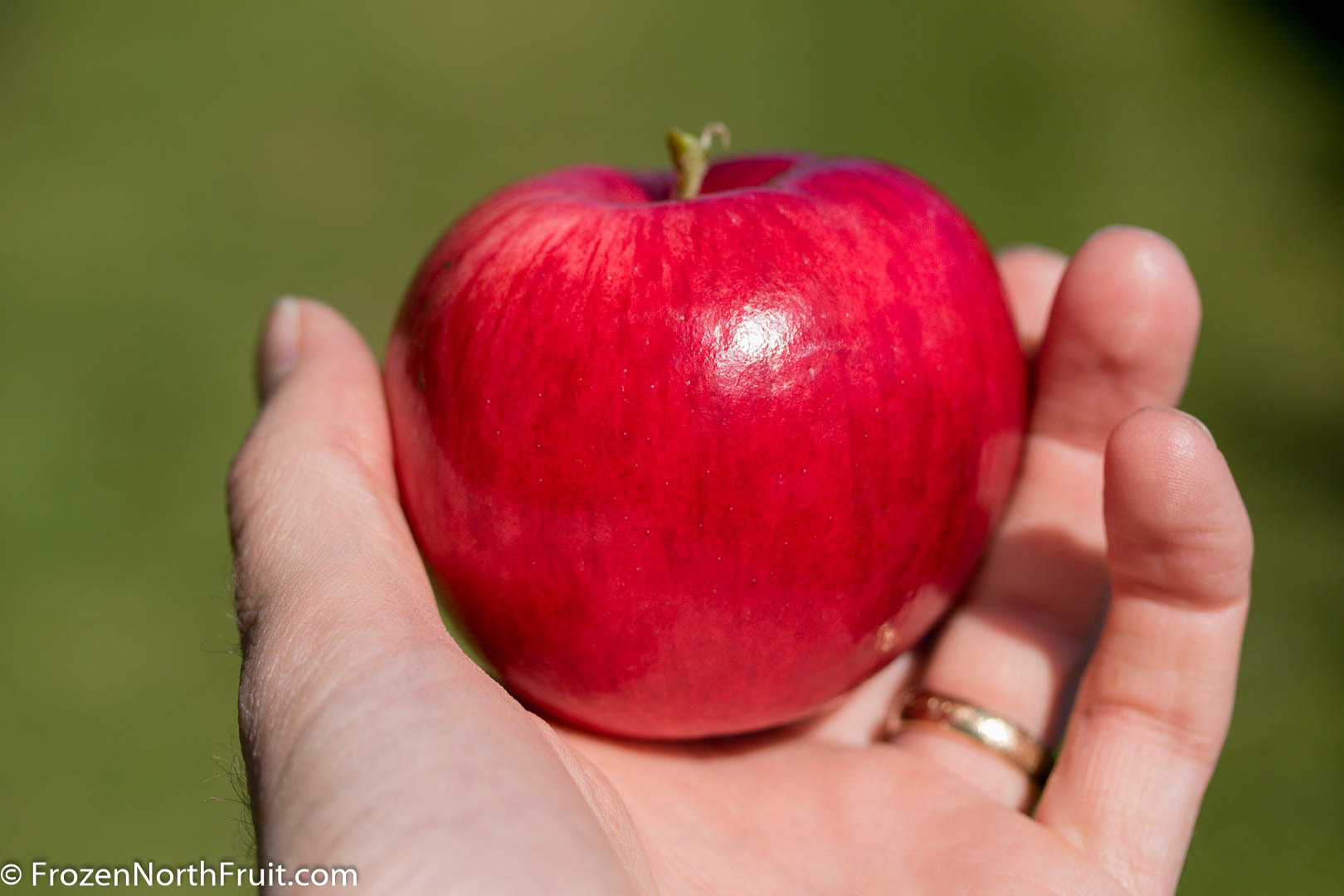
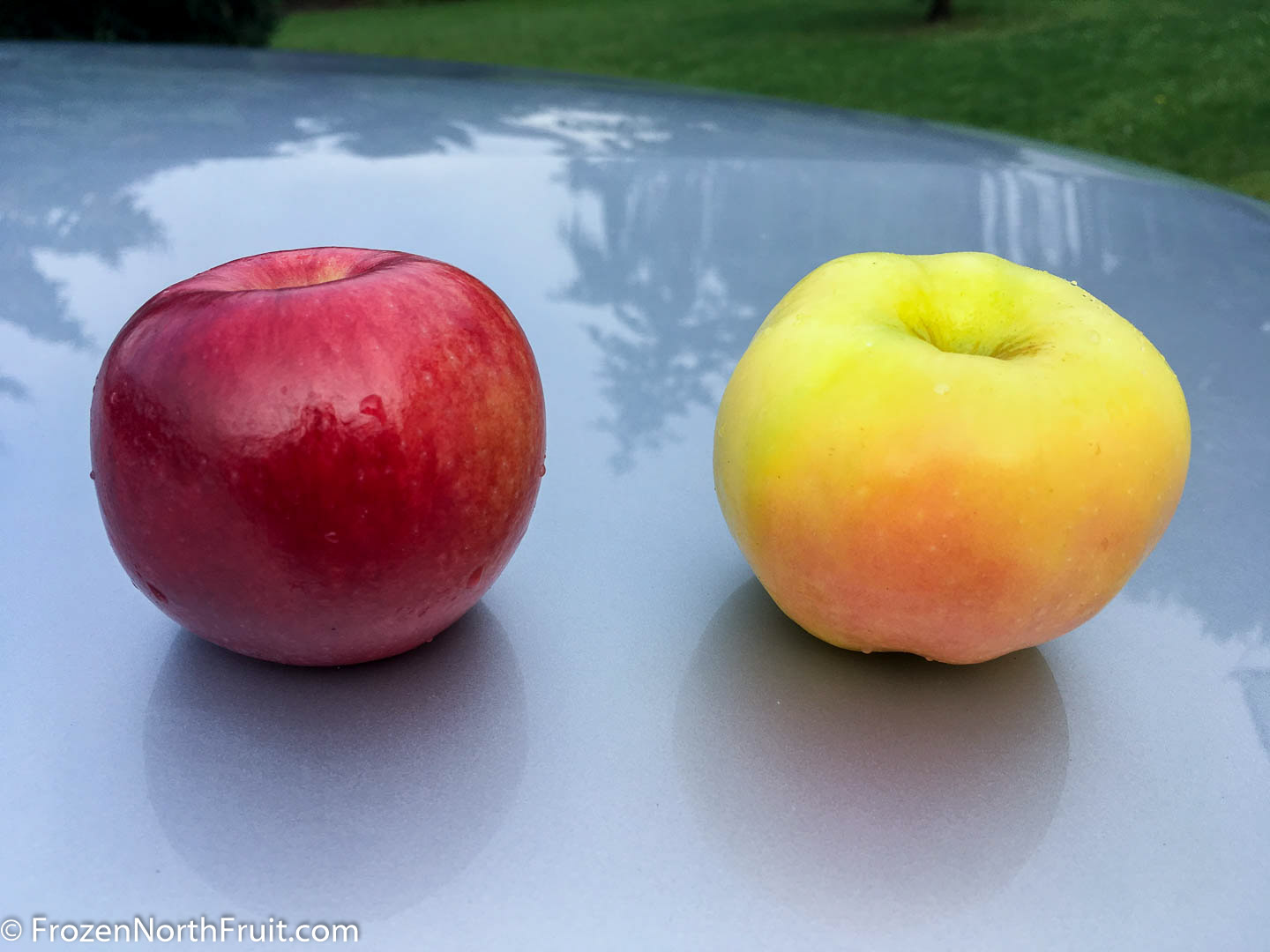
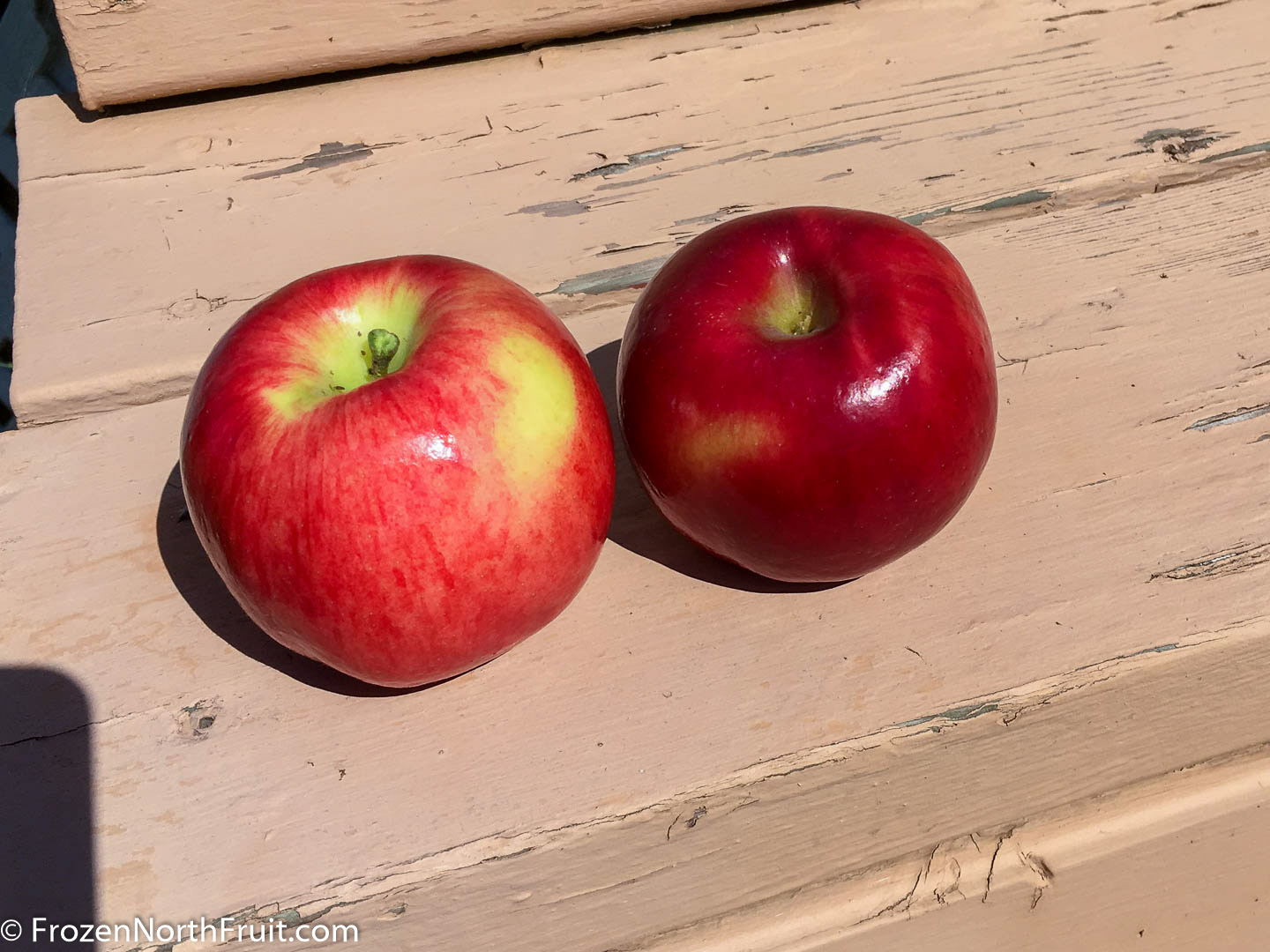
Apple – Crimson crisp Bud9- DR (Planted May 2015 from Whiffletree) – Survived. No dieback. Tons of flowers and flowers last a LONG time. Flowers started May 23 and finished June 9. Amazing red apples, my favourite so far. They are smaller apples averaging around 140-160g and look like small red delicious apples but have flavour, juice and crunch. Edible as of September 13 with a brix of 12-13 and seeds light brown but the apples hold extremely well onto the tree and I harvested the last apple October 26 with the seeds dark brown and 16 brix. 6 weeks hanging on the tree just fine! The flesh is extremely firm particularly in September but it softens slightly into October but keeps a nice crunch. Flavour is amazing with a slight acidity and amazing sweetness that increases as time goes on. My favourite by far. (123 days last year from flower to fruit and 113-156 days this year– tasty as of around 120 days).
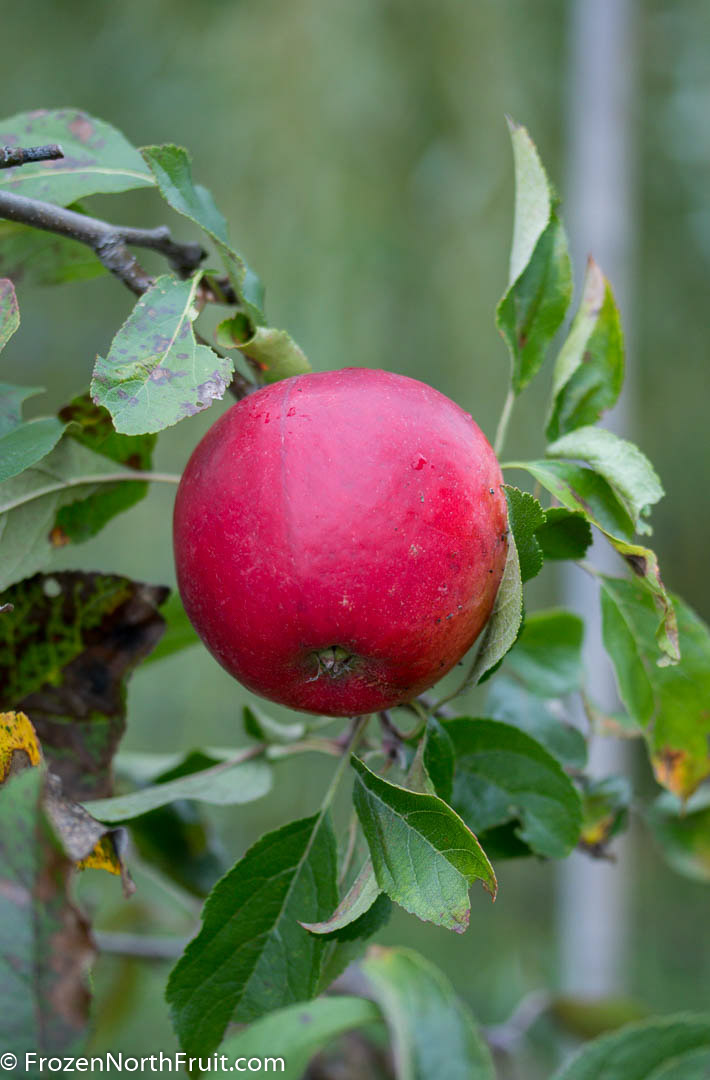
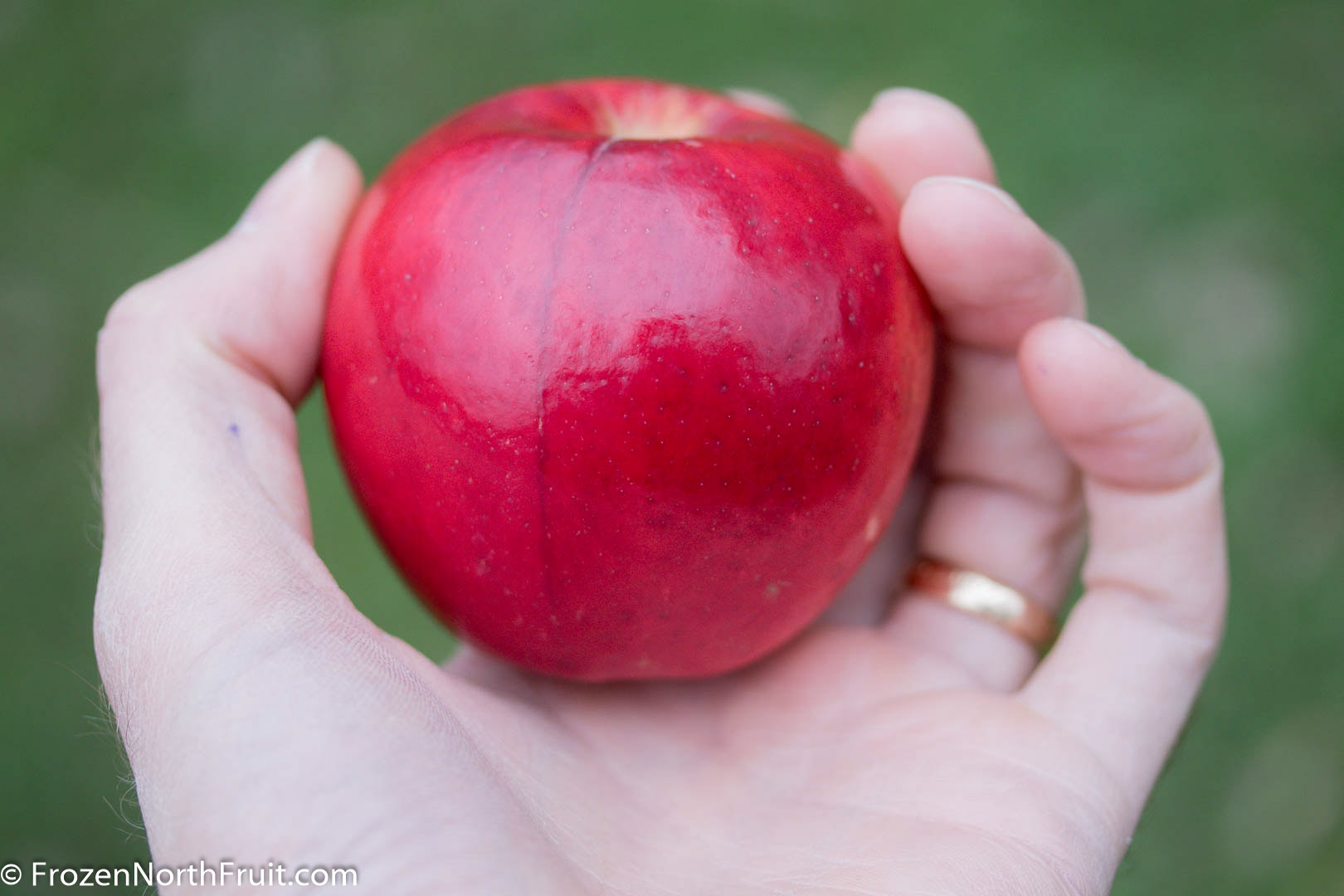
Apple – Liberty M27?- DR (Planted Fall 2012 – Green Barn) – Survived. No dieback. Much fewer flowers this year and only 4-5 apples – looks like I over cropped last year and sent it bi-annual. Flowered from May 19 – 30. First fruit tasted September 13 but only 30% brown seeds and was sour and dry. Peak ripeness September 27 with seeds 75% dark brown and 12 brix. Definitely a McIntosh type apple that has a lot of acid. Tart with not much sweetness. Very juicy. Flesh on the softer side. Around 140g. (140 days from flower to fruit last year and 131 this year)
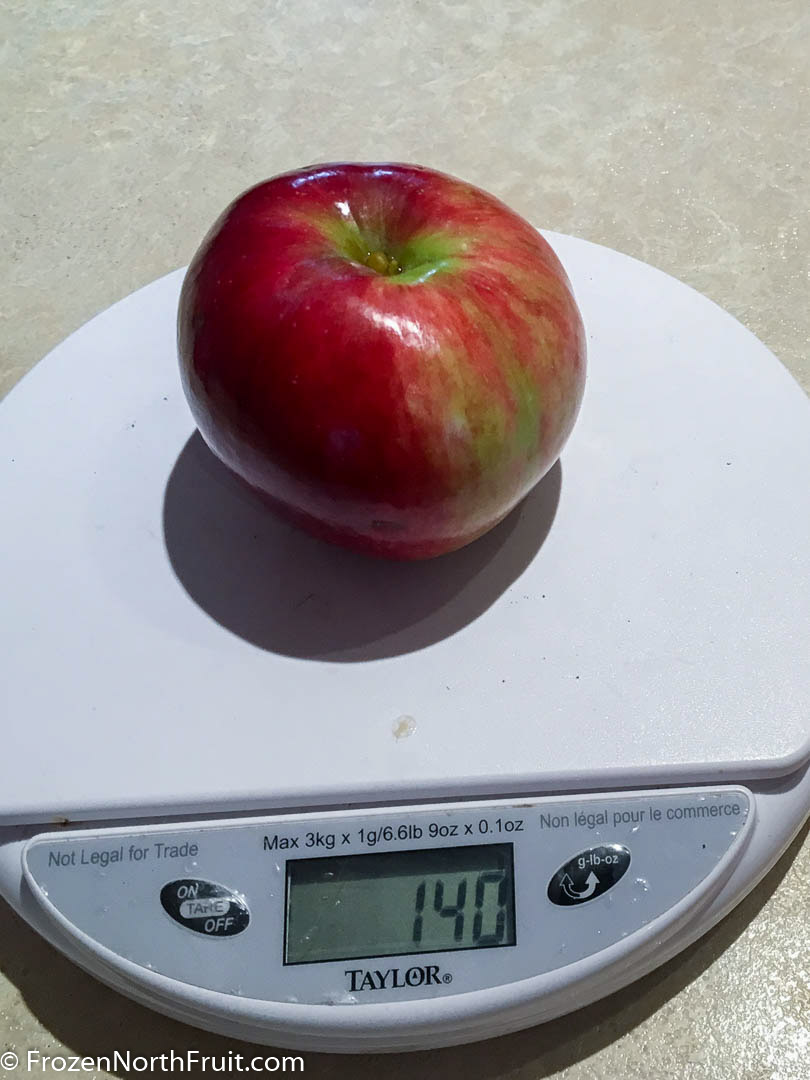
Apple – Egremont russet Bud9- H (Planted May 2015 from Whiffletree) – Survived. No dieback. Flowered from May 19 – 30. First fruit tasted October 10 and was 19 brix! Seeds were 90% brown. Flesh dense but not crisp, cleaves easily. Very sweet with slightly nutty notes. Some juice but somewhat dry. Peak was probably around October 18-25 when was much more juicy with a bit more floral notes. Brix 18. Last picked Nov 3 and would release extremely easy from tree. At this point a bit more drying (tannic?) and much more floral and I preferred flavour a bit earlier. Size ranged from 99-170g with average around 140g. (159 days from flower to fruit)
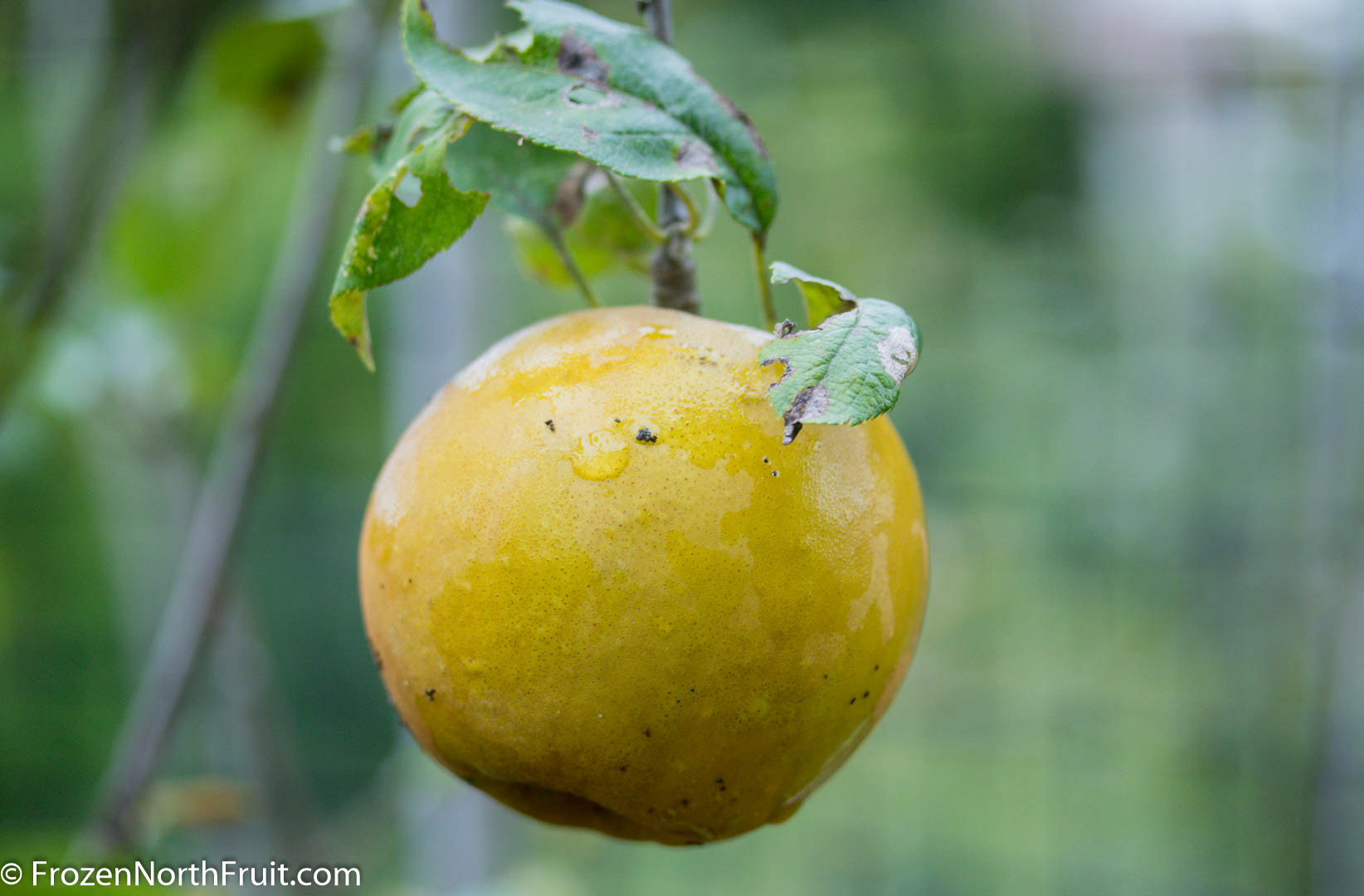
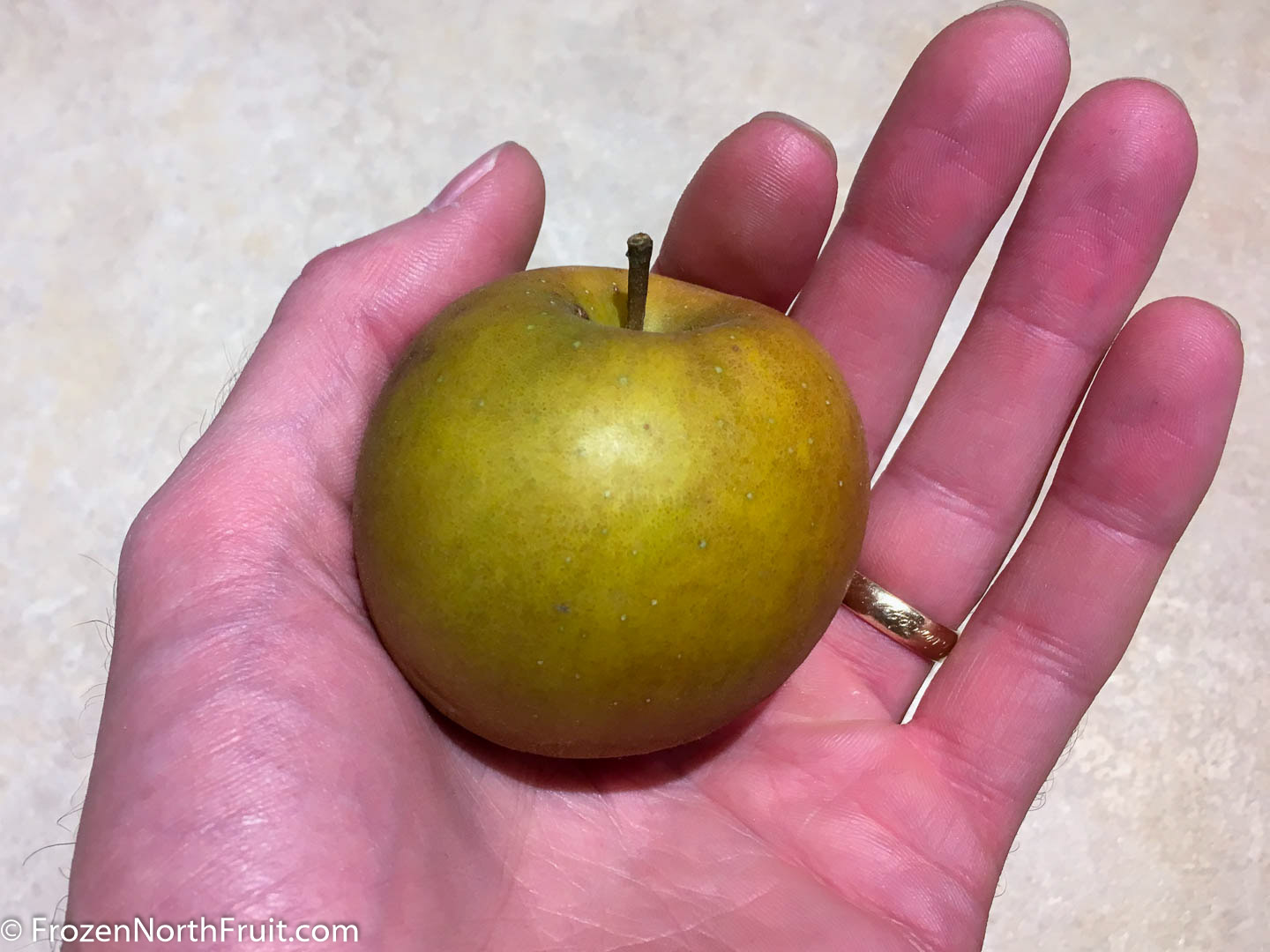
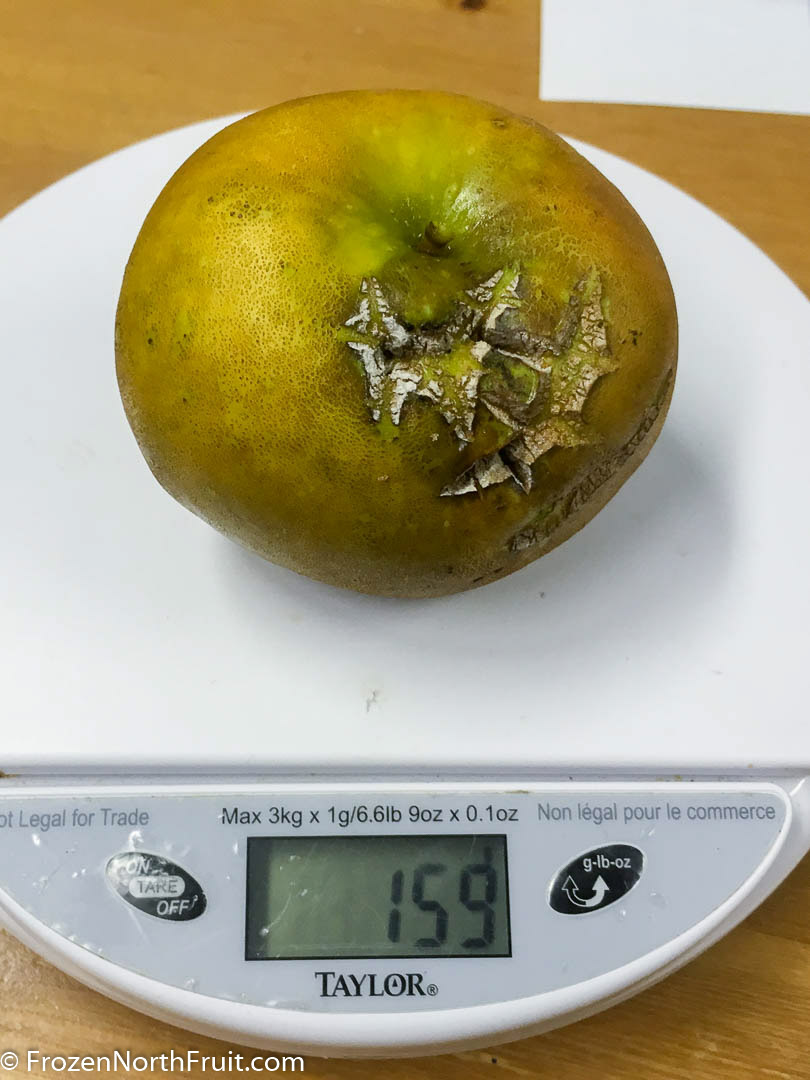
Apple – MacFree pretty sure on M7- DR (Planted Fall 2012 – alive and doing well) Green Barn. – Survived. No dieback. This tree is in a quite shaded area so take ripening dates with a grain of salt. Flowered from May 23 – 30. Windfall tasted Oct 18. Very McIntosh like. Acidic. Sweet-tart at 12 brix. Rest were harvested Nov 3 when had much less acid. Juicy and sweet with slight acidity and crisp when eaten from the tree. Good apple flavour like a McIntosh. 13 brix. My wife preferred the sour/tart mid October flavour while I like the less acidic later version. (140 days last year, 148 days this year).
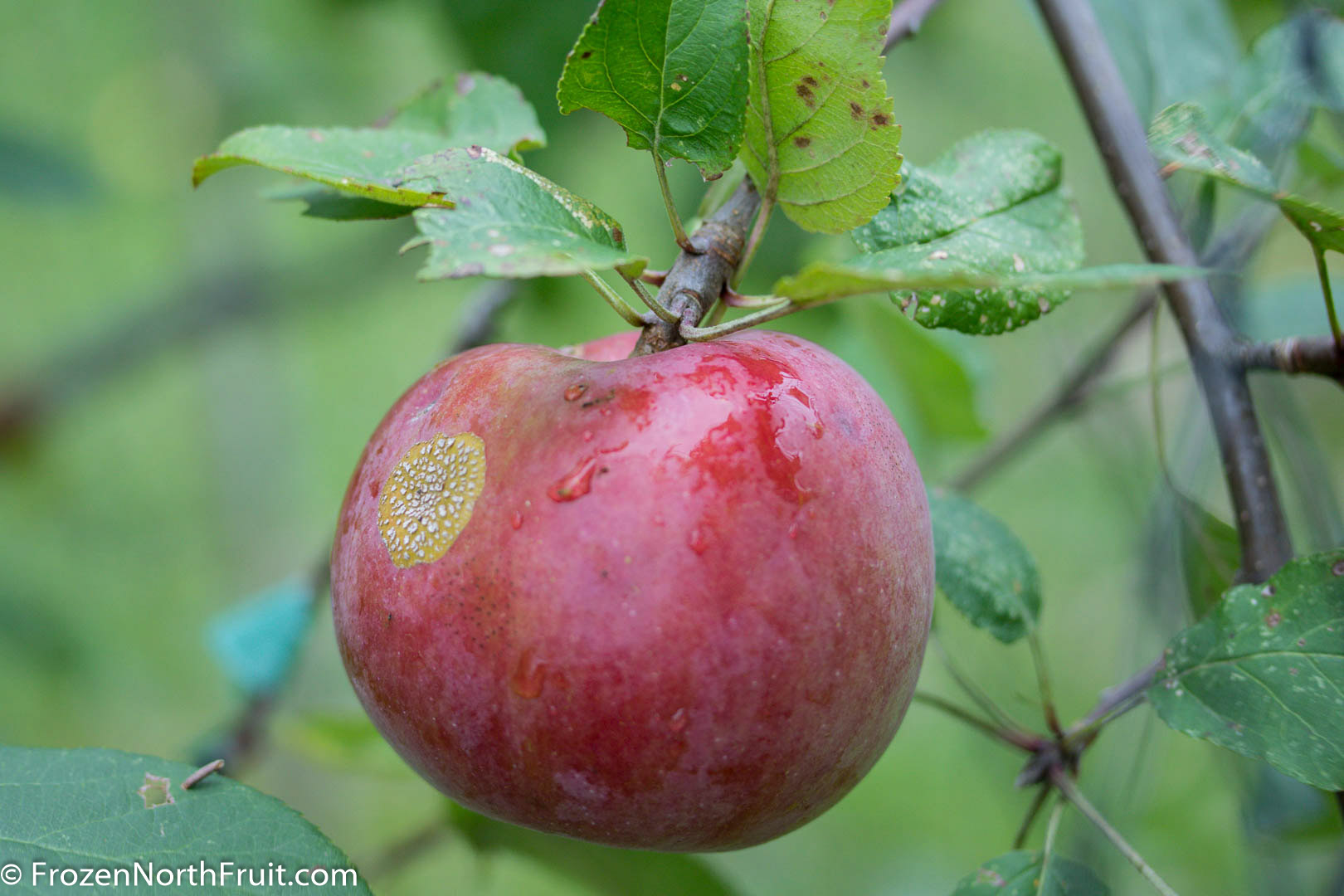
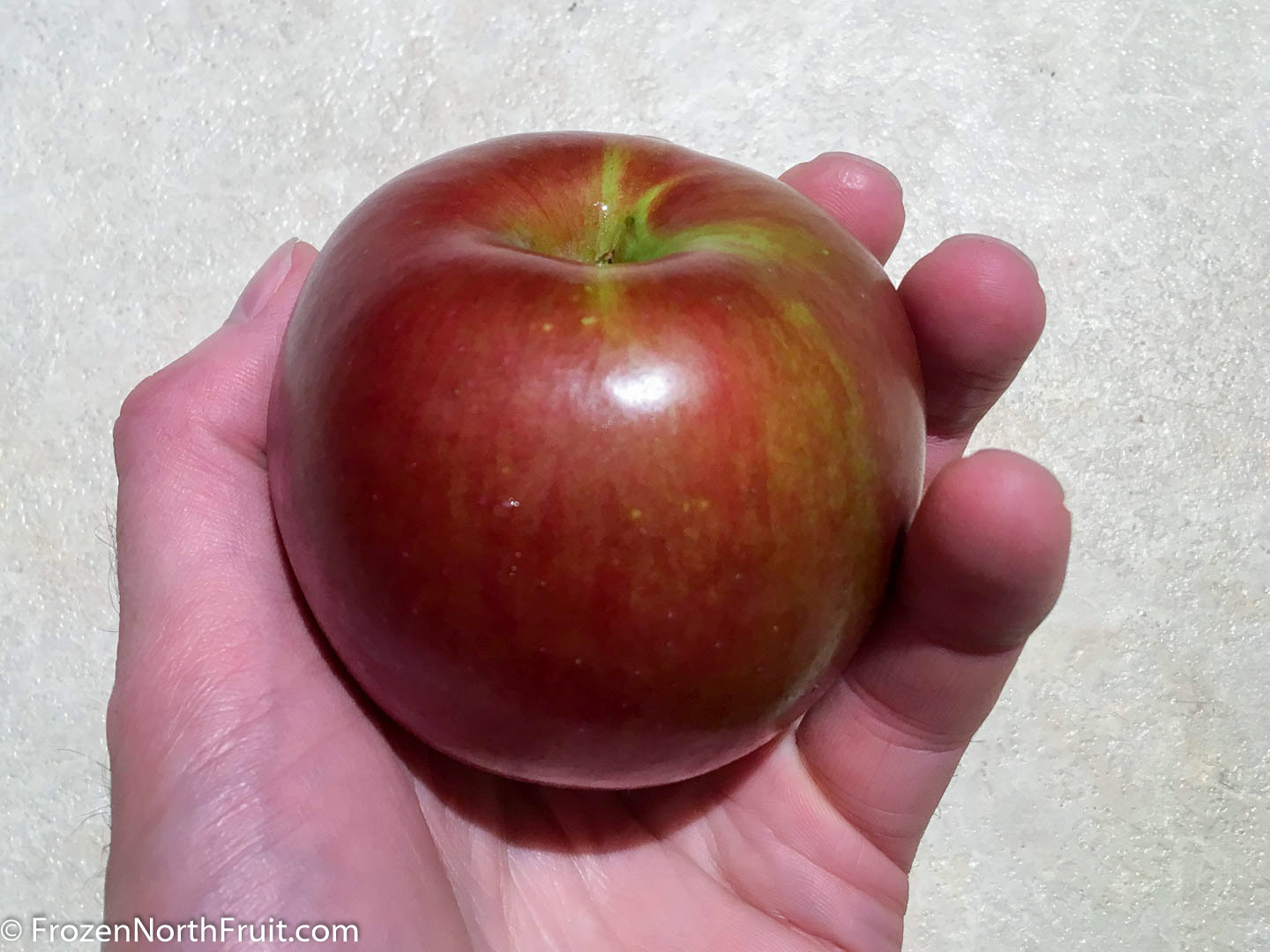
Apple – Goldrush Bud9 – DR (Planted May 2015 from Whiffletree) – Survived. No dieback. No flowers.
Apple – Enterprise M7 – DR (Planted May 2015 from Whiffletree) (M7 is shipping error, it should have been Bud9) – DIED after a long, cold wet winter when the Bud 9 to each side have survived fine. I have this re-grafted onto Antonovka rootstock in the same place.
Apple – M360 (Grafted 2016) – Survived. No dieback. Small graft. Later blooming, 50% at May 27. Only 1 apple picked September 19. Very attractive apple. Red with pink striations. Possibly a bit over ripe as seeds were dark brown. Flesh soft with some watercore. Nice sweet apple flavour.
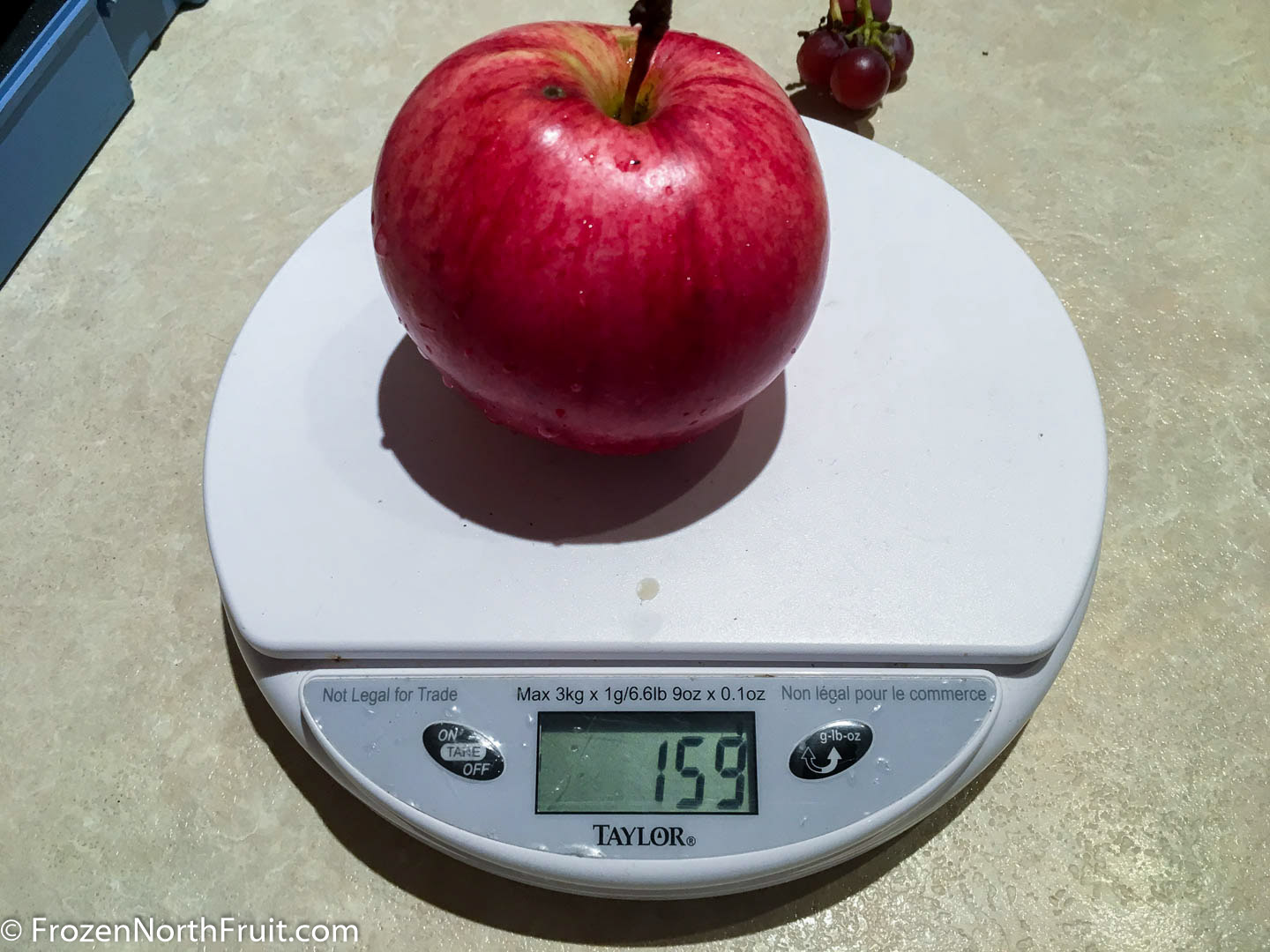
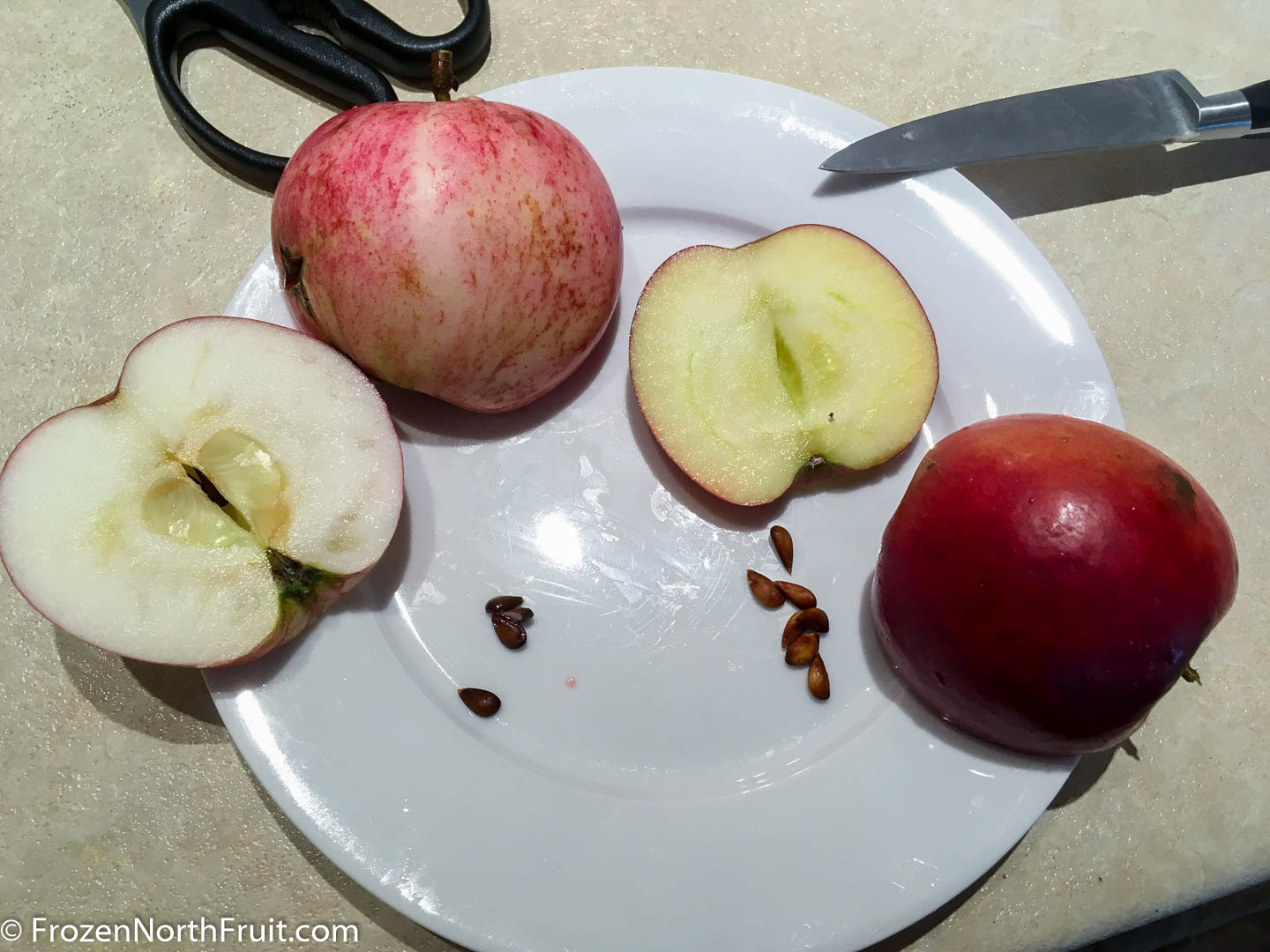
Apple – Prairie Sensation (Grafted 2016) – Survived. No dieback. Small graft. Flowered June 10th I think. No fruit.
Apple – Norkent (Grafted 2016) – Survived. No dieback. Flower May 20-27. The 2 apples were found fallen from the tree September 8. Seems to drop easily. Very dark seeds, perhaps over ripe. Slight crunch. Very sweet with some honey flavors. Not much acid. (111 days).
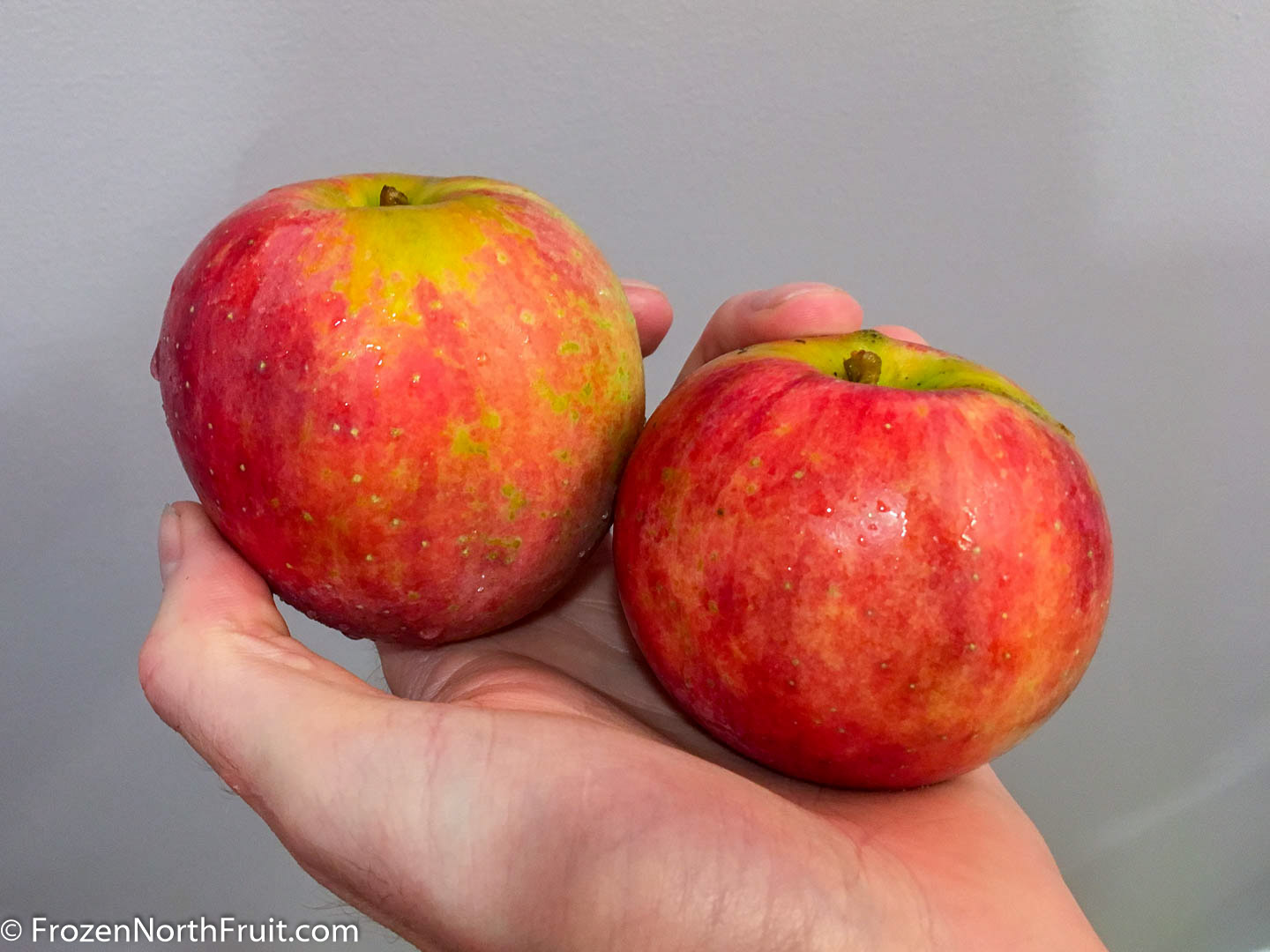
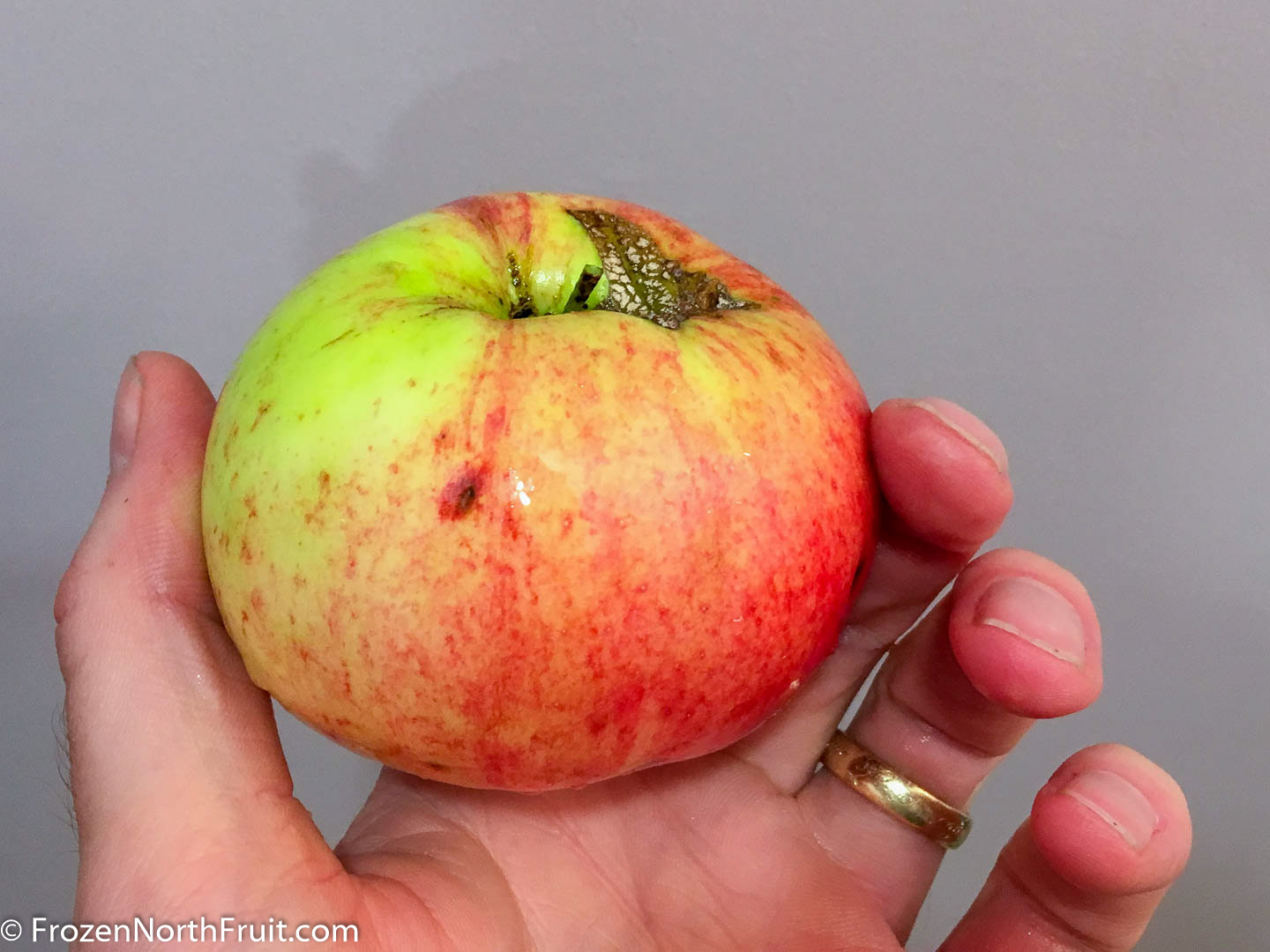
Apple – Ashmeads Kernel (Grafted 2016) – Survived. No dieback. Flowered from May 23 – 30. First fell when touched September 13. Blotchy green apple with russeting. Kind of ugly. Some seeds were brown while others were pure white. Dry. 12 brix. 139g. Other 2 picked fully ripe Oct 11. Dark seeds. Still ugly apple. Slightly more juicy. Mild flavour, bit grassy tasting, somewhat Egremont russet like (but less good) with a medium cruch. 13 brix. I’ll give this a couple more years but so far I MUCH prefer Egremont russet. Perhaps it was amazing for it’s time but if this is the real flavour we have modern varieties that are much better.
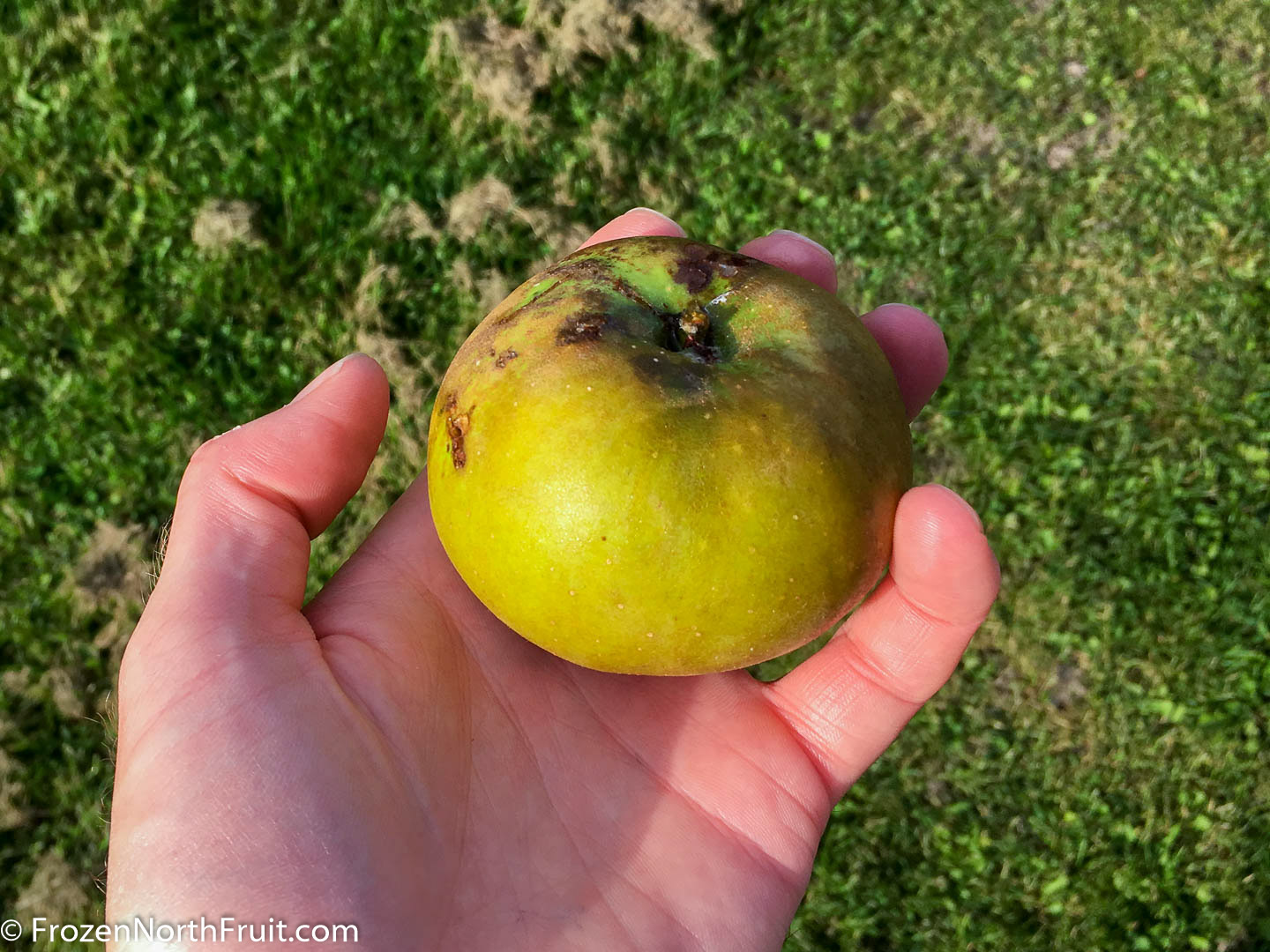
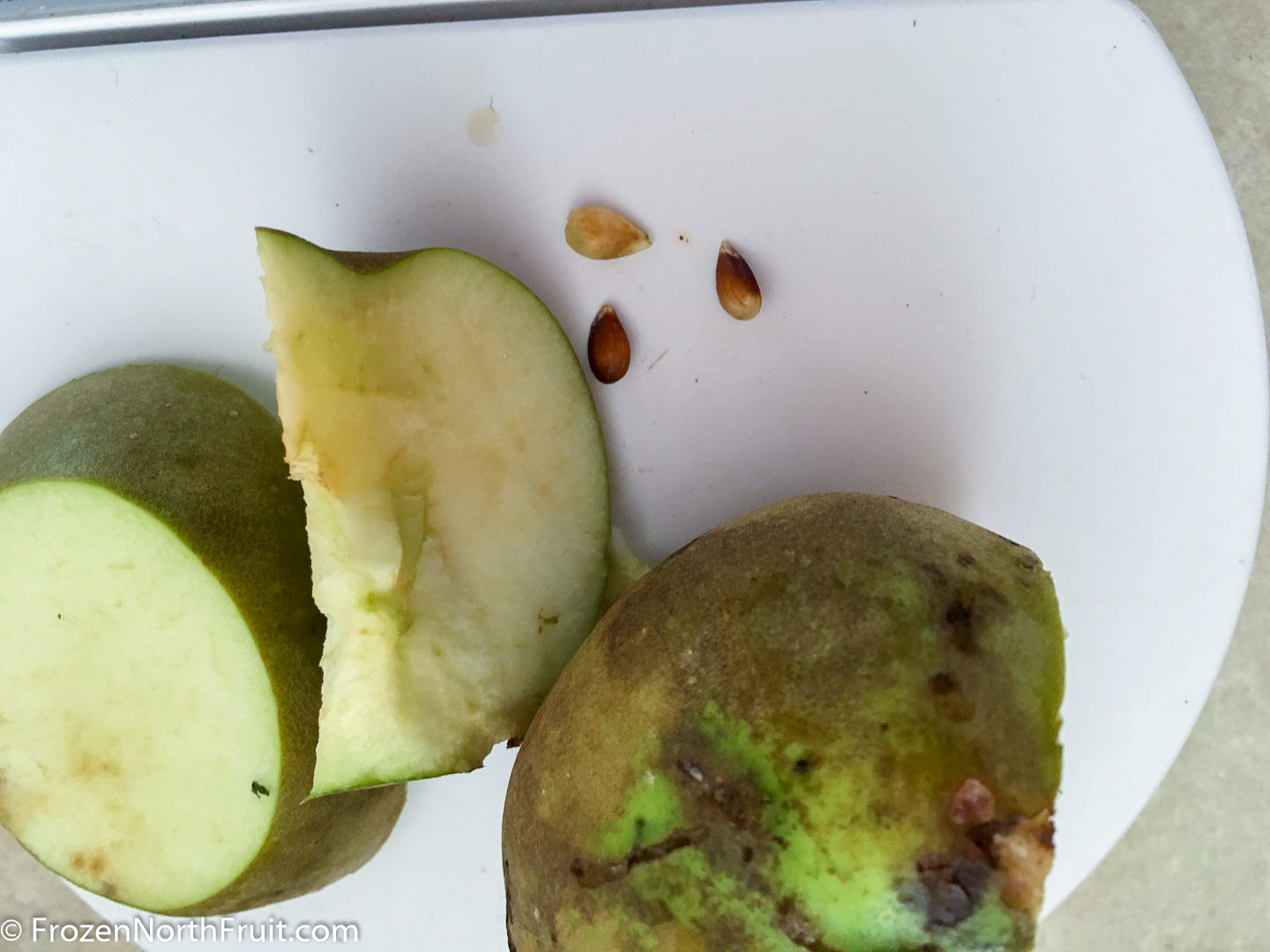
Apple – Williams pride (Grafted 2016) – Survived. No dieback. No flowers.
Apple – Fireside (Grafted 2016) – Survived. No dieback. No flowers.
Apple – Wolf river (Grafted 2016) – Survived. No dieback. No flowers.
Apple – Calville Blanc d’hiver (Grafted 2016) – Survived. No dieback. No flowers.
Pear – Hayatama (Planted May 2014 from pepiniere ancestrale) Die back to graft union in 2015, 2016 and again this year. I will cut it back in spring 2018 and graft something more resistant.
Pear – Northbrite (OHXF 87? Planted Fall 2012 Green Barn). Was struggling but last year shot up to 5 feet tall with a ton of nice laterals. No flowers because I ended up grafting 14 different pear varieties to it.
Pear – Kenko (PYRUS BETULAFOLIA? Planted Spring 2013 Green Barn). Has been dying back each year. In Spring 2018 I will cut back to graft union and graft something else.
Pear – Taylor Apple (PYRUS BETULAFOLIA? Planted Spring 2013 Green Barn) Growth up to nearly 7 feet with nearly 1” trunk last year with some fruiting spurs. I grafted several varieties of asian pears. It flowered May 16 but then began showing what could be fireblight and ended up dying all the way back to the graft. Spring 2018 I will cut back and graft something else.
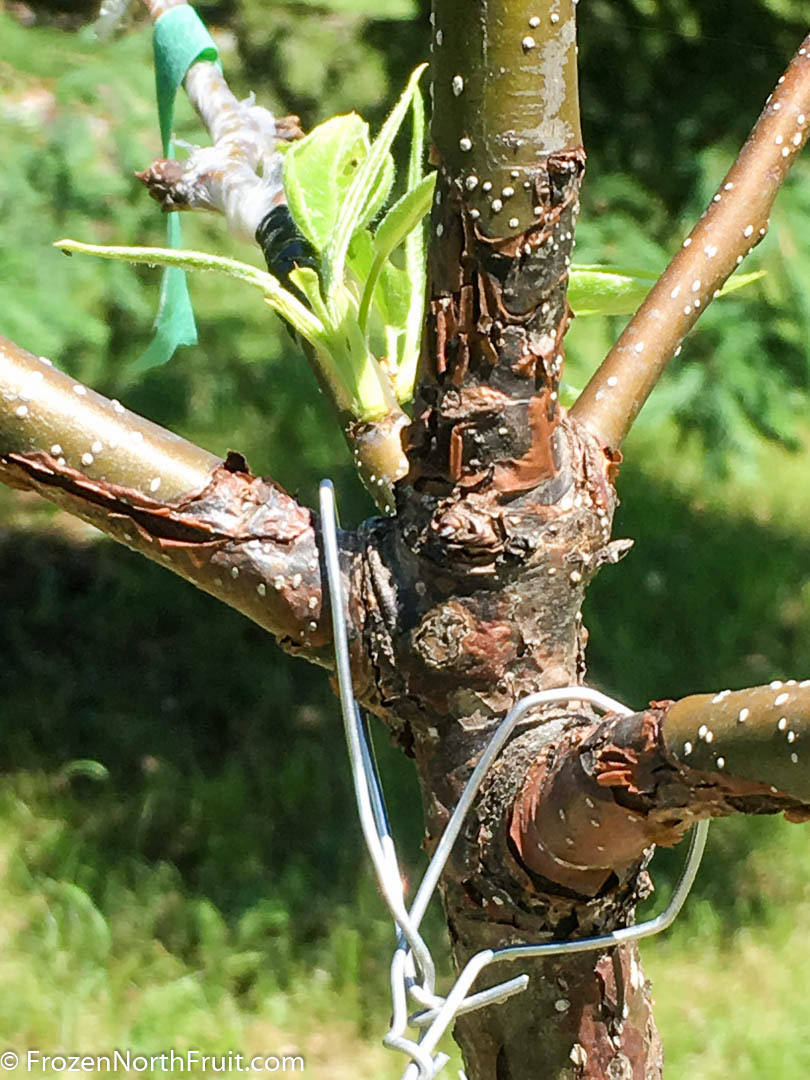
Plum – Toka (myrobalan – Planted May 2014 from pepiniere ancestrale). Survived. No dieback but it is not thriving anything like Superior. Covered in flowers that peaked May 17. 1 fruit picked September 9. Cracked. Small. Not enough to really describe taste. 18 brix.
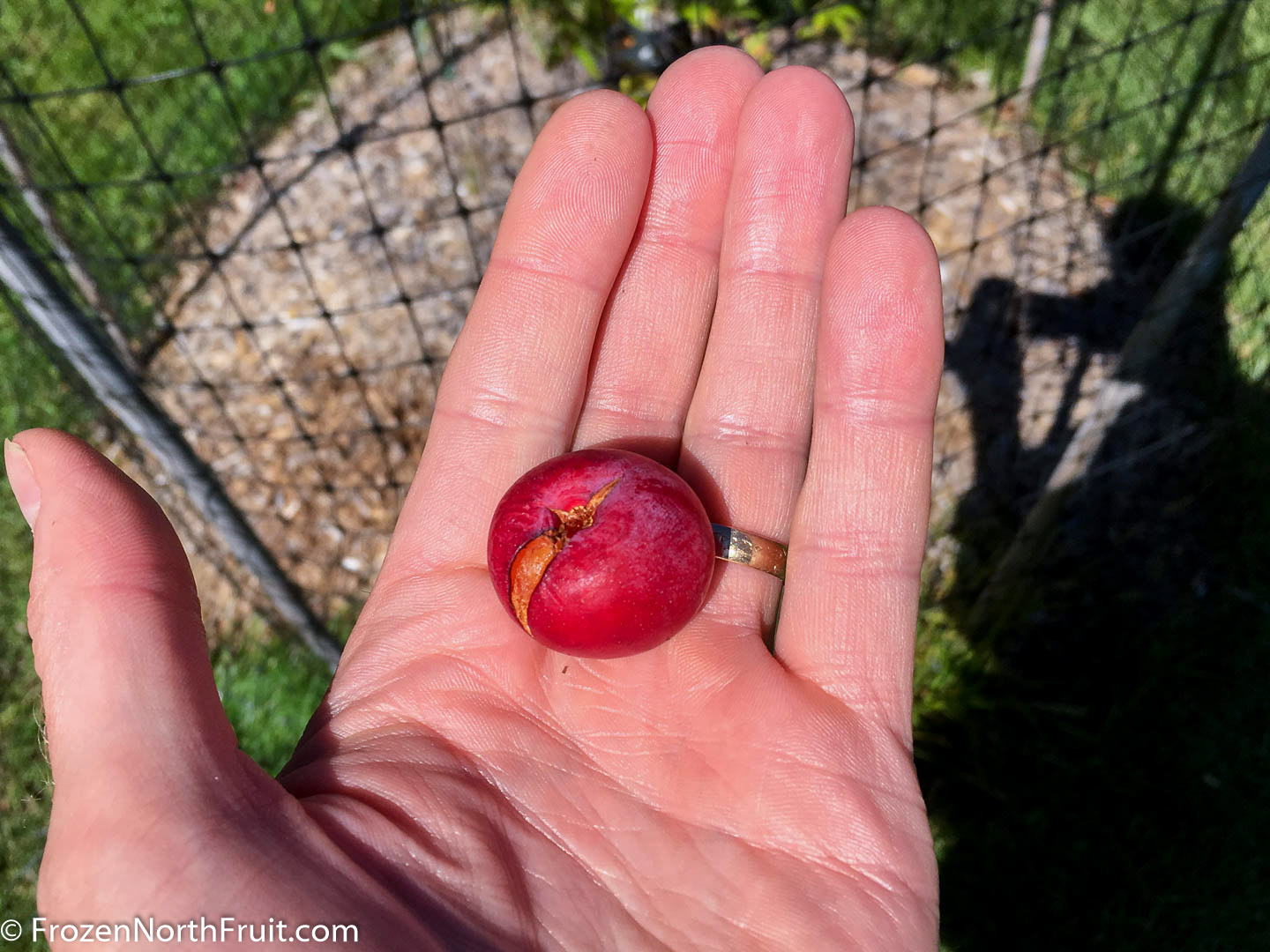
Plum – Superior (myrobalan – Planted May 2014 from pepiniere ancestrale) Survived. No dieback. Crazy vigorous with 6+ feet of grown again this year. Covered in flowers that peaked May 16. Several fruit were set but all aborted unfortunately.
Plum – Kahinta (myrobalan – Planted May 2014 from pepiniere ancestrale) Survived. No dieback. Again 5+ feet growth this year. Covered in flowers that peaked May 16. Several fruit were set but all aborted unfortunately.
Plum – Black Ice (Planted May 2015 from Whiffletree). Survived. No dieback. No flowers. Might have a borer as I have seen some leaking sap on the trunk.
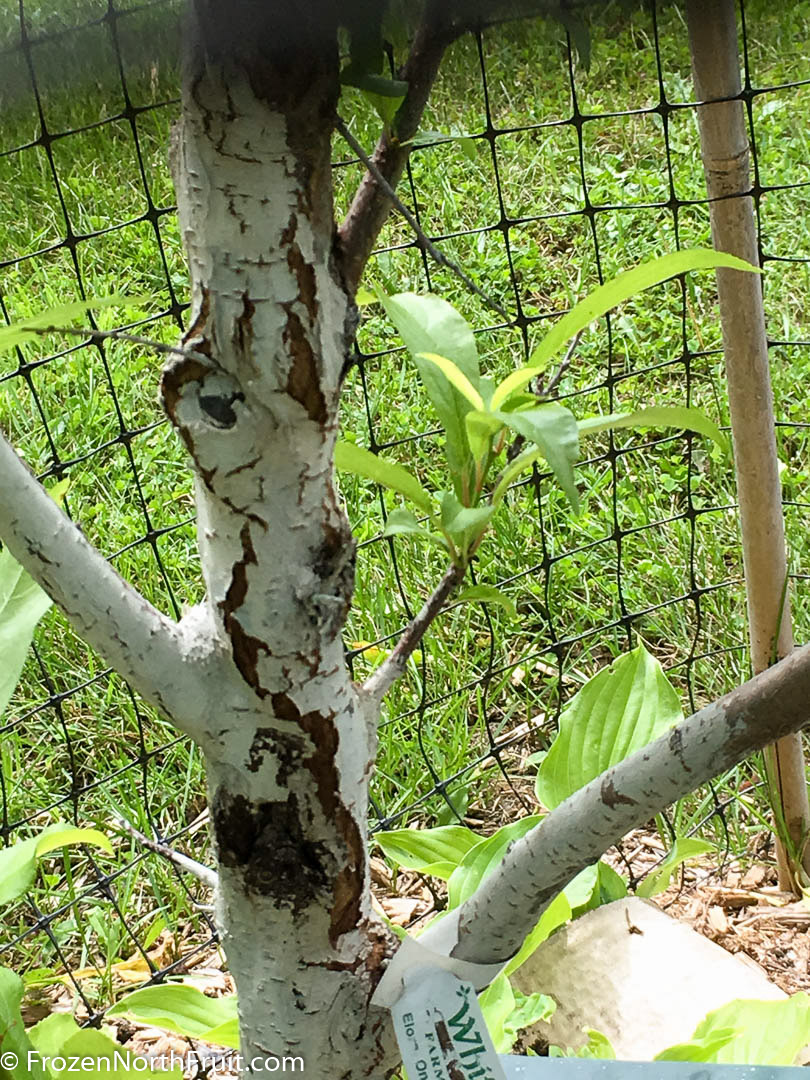
Again, these plums are all planted in the wettest area of my clay yard. Standing water late fall and spring. I tried hand pollinating the flowers this year and forced some American plum branches to flower by keeping inside and then placed in a vase under each tree but fruit set was less than 2-5% for all trees.
14 new varieties of plum were grafted this year.
Chum – Kappa (Planted Fall 2012 – Green Barn) Survived. No dieback. Tons of flowers that peaked May 18. I tried hand pollinating the flowers this year and forced some American plum branches to flower by keeping inside and then placed in a vase under each tree but fruit set was less than 2-5%. First fruit August 7 with rest harvested August 25. Around 16g each. Nearly black flesh. 17 brix. Majority had severe cracking. Not edible, mouth puckering, dry and tannic. In total lost majority of fruit to abort and/or plum curlicue.
Chum – Sapalta (Planted May 2013 Green Barn) Survived. No dieback. Tons of flowers that peaked May 18. I tried hand pollinating the flowers this year and forced some American plum branches to flower by keeping inside and then placed in a vase under each tree but fruit set was less than 2-5%. Many fruit aborted and/or were hit by plum curlicue. Only 5 fruit survived and all suffered severe cracking and were harvested August 24. 12g each. 19 brix. Flesh deep red and somewhat sweeter than Kappa and less tannic.
I was surprised how poorly the Chums were pollinated with all the other plums flowering and my attempts and hand pollinating. There was severe plum curlicue damage and severe cracking later summer. I will keep another couple years to see what happens and will get my license to spray with Surround WP but so far I am not impressed.
Haskasp
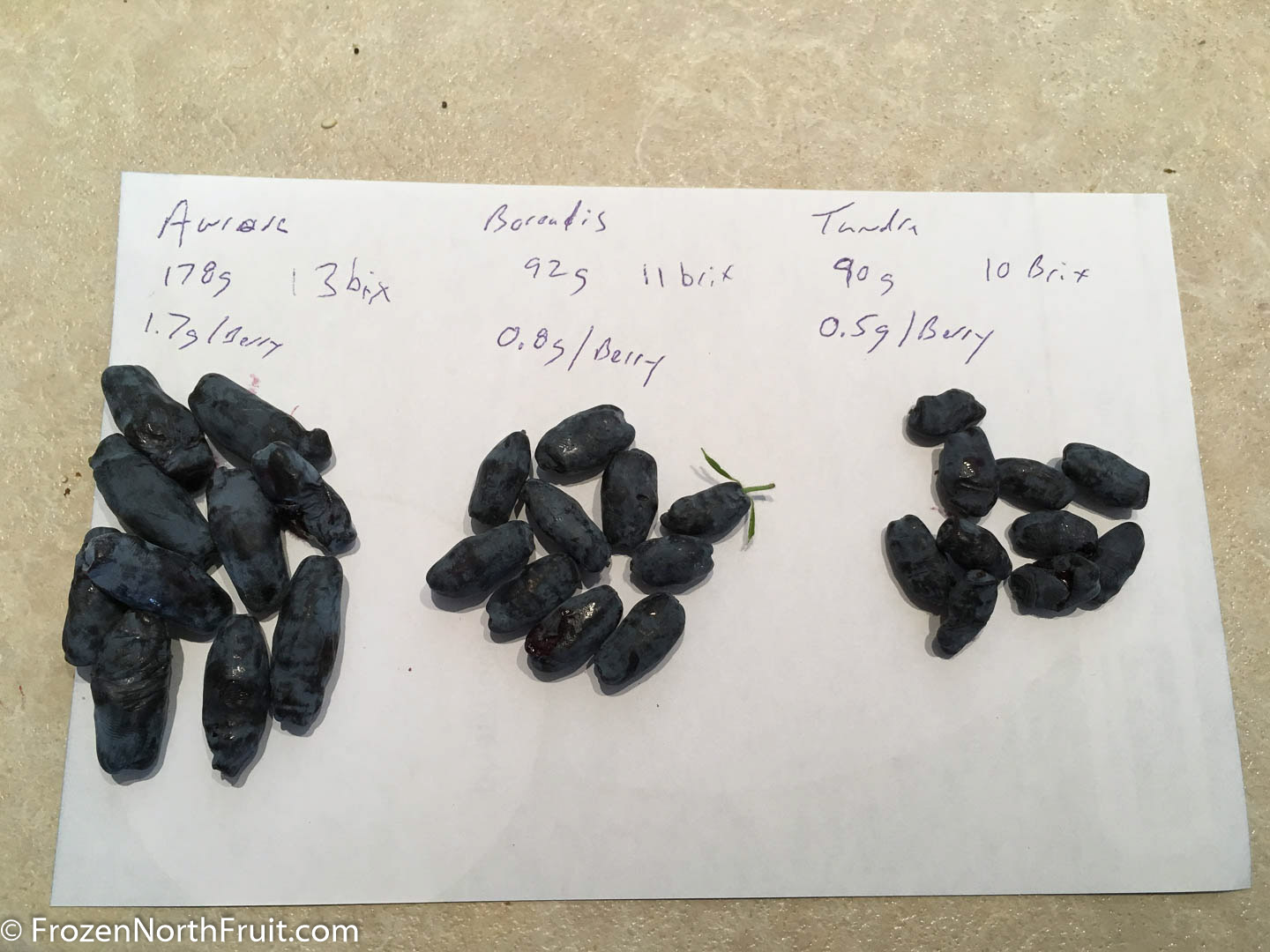
Haskasp – Tundra (Planted Fall 2013 from prairieplant.com 7) Survived. No dieback. Tons of flowers. Flowers started May 1 and peaked May 13. The bumblebees LOVE Haskasp flowers. Peak ripeness berries July 2. 0.5g/berry. 10 brix.
Haskasp – Aurora (Planted Fall 2014 from Whiffletree) Survived. No dieback. Tons of flowers. Flowers started May 10 and peaked May 17. The bumblebees LOVE Haskasp flowers. Peak ripeness berries July 2. 1.7g/berry. 13 brix. Definitely the sweetest of the 3 and the only one that I deem edible fresh.
Haskasp – Honeybee (Planted Fall 2013 from prairieplant.com 7) Survived. Not tasty last year so pulled out.
Haskasp – Borealis (Planted Fall 2013 from prairieplant.com 7) Survived. No dieback. Tons of flowers. Flowers started May 6 and peaked May 13. The bumblebees LOVE Haskasp flowers. Peak ripeness berries July 2. 0.8g/berry. 11 brix.
Haskasp – Boreal Blizzard (Planted spring 2017 from Whiffletree). Supposed to be later blooming and bearing. Needs Boreal Beast to pollinate.
Haskasp – Beauty (Planted spring 2017 from Whiffletree). Supposed to be later blooming and bearing. Needs Boreal Beast to pollinate.
Elderberry
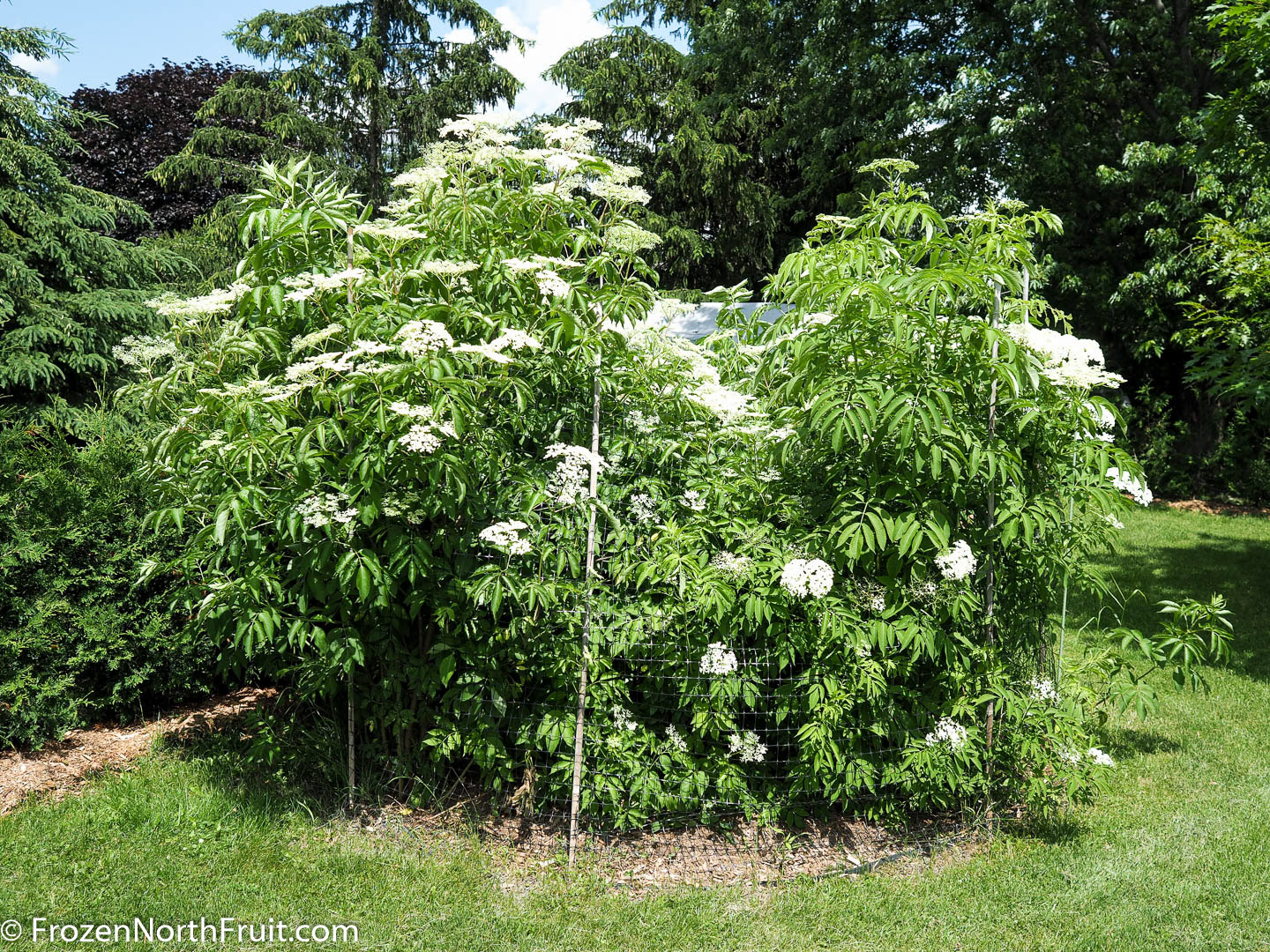
Elderberry – Wyldewood (Planted May 2015 from Whiffletree) Survived. No dieback. Massive plants. They can now send up 6-8’ shoots in 1 year. Flowering June 28 with peak July 9 with some flowers continuing until late July. Started having ripe fruit last week of August and is continuing to stagger ripening into mid September.
Elderberry – Bob Gordon (Planted May 2015 from Whiffletree) Survived. No dieback. Larger plants than Wyldewood. They can now send up 10’ shoots in 1 year. Flowering a bit later than Wyldewood starting July 7 and peaking July 13. Started having ripe fruit last week of August with bulk of fruit ripening at once.
Total yield from 4 plants were 2308g in 2017 vs 1238g in 2016. I also tested covering the bunches of berries with organza bags and that resulted in 75% more berries due to being protected vs the birds. Inedible fresh. Instead made into a syrup for ice cream and for adding to sparkling water as a refreshing drink. Delicious. Blackberry flavours. I also harvested the flowers to make an Elderberry flower cordial which was AMAZING and you don’t have to fight the birds like you do for the berries. Next year I will probably harvest 50% of my flowers to make cordial.
Elderflower Cordial Recipe:
15 full heads makes 3.5-4 cups worth of flowers
6 cups of sugar
4 cups of water
30 ml of granulated citric acic
1 lemon (unwaxed). Zest then sliced into rounds.
Pluck the flowers from the stems and put aside. (some say to wash but I did not, simply picking out any visible bugs because I did not have that much. The flavour is in the pollen and I did not want to wash any away and it was a relatively small batch. The sterilization process will kill anything nasty. If you don’t want to pick the flowers off the stems or are doing large batches you probably want to rinse.) I have tried not plucking the flowers and leaving on the stems but the resulting cordial was more bitter and vegital tasting. I have also tried with lower sugar concentrations and it was not as good either.
Boil 4 cups of water and disolve 6 cups of sugar. Allow to cool.
In a non-reactive bowl add the sugar water, 30 ml of granulated citric acid and the lemon zest and slices then the flowers.
Cover the bowl with a dishtowel and place in a cool place. Allow to sit for 2-3 days stirring once per day.
Strain through chesscloth into sterilized jars and then waterbath can as you would any other liquid.
Use 1-2 tablespoons (to your taste) in a glass of sparkling water (works great with Sodastream).
Wyldwood – 20170803 – FrozenNorthFruit – C2017
2017 Wyldwood elderberry in flower – Harvest 2017-08-03
Black Raspberry – ? (Planted Fall 2012 Green barn)
Purple Raspberry – Jewel? (Planted Fall 2012 Green barn)\
Purple Raspberry – Royalty (Planted May 2014 pepiniere ancestrale)
All are doing well. Some dieback at tips of certain canes but only some canes and then only 12-18” on 6 foot tall canes so it is nothing. These are planted right next to either a south facing or a west facing brick wall so there are MAJOR temperature swings during winter and spring and yet they still do fine. Earwigs and Japanese beetles love attacking these. I eat these fresh but also freeze a lot for cereal later as well as canning in a light syrup and using for mixing with carbonated water for a refreshing drink.
Note that even though they say Black/Purple raspberries do not send out runners THEY DO! I would not plant them mixed with your regular garden where they could spread everywhere. Instead plant in rows next to grass where your regular mowing will take care of any runners.
Both started around July 17 and finished after 2 weeks. Total yield 8.61 kg in 2017. Up from 7.4 kg in 2016 but still lower than 9.8 kg 2015.
Black Raspberry Royalty – 20170728 – FrozenNorthFruit – C2017-2
2017 Black raspberries to left and Royalty purple raspberries to right – Harvest 2017-07-28
Grapes.
So I am growing my grapes for cold climate. They are multi-trunk (aiming for 4 trunks each), on a Geneva double curtain trellis (trunk 1 left wire south, truck 2 left wire north, trunk 3 right wire south, trunk 4 left wire north). I have been trying 2 different pruning methods. 2 trunks spur pruned, 2 trunks cane pruning. Then I was leaving 2 canes standing all winter (1 cane, 1 spur) and laying down 2 canes for additional protection (1 cane, 1 spur).
This was my first year where I could really see the difference and for sure the 4 trunk system is definitely the way to go in my climate and with my heavy soil. Some varieties had 2 or 3 trunks die back. Others had 50% of the trunks have fruit bud death. BUT this meant I still had 1 or more trunks that survived to produce fruit! I am now growing my plants with 4 principle trunks and then allowing 2 renewal trunks to shoot up as well. I will now lay down all trunks because the trunks left standing had bad bud death. In the spring will wait to see what trunks have survived then if all 4 primary trunks survived I will cut back 1 and replace it with a renewal trunk. This means no trunk will ever be more than 4 years old so they will still be flexible enough to lay down each fall. The 2nd secondary trunk will be available if dieback was worse and I lost other trunks.
The renewal trunks I train into a “J” shape. I try to get them to take off from the base at about 90 degrees (horizontal to the ground) before training them upwards to the trellis. This makes lying them down in the fall easier without tearing at the junction. If I let them shoot straight up I find the junction angle at the base is too acute and fragile and when trying to lie some down in the fall I have broken them.
This year the bagging grapes did NOT go well. We had a TON of rain. Deluge levels. Through the summer the weather was cool with most days having one or more showers. And for the first time this means FUNGUS. Pretty sure it is downy mildew. My Reliance, Valient and Somerset grapes were hit severely with Vanessa having moderate strikes. Seedless concord (or it might be concord), Catwaba, Bluebell and Trollhaugen were unaffected. All my bunches were bagged just after grape formation and these worst affected plants were spur pruned so they were on the overgrown side with ALOT of shoots and leaves. The combination of the organza bags and high amount of leaves probably retarded the ability of the grapes to dry out and so the fungus exploded. I pulled off the bags, removed infected bunches and only put the bags back when the grapes started to change color. I lost 50% of my somerset, 60%+ Vanessa, and nearly 90% Valient and Reliance! Doh!
Grape – Somerset (Planted Fall 2012 Greenbarn). 4 trunks. Not a very vigorous plant but it is planted under the drip line of a mature tree so it fights with the roots of the tree. No dieback. Flowering June 16. Ripe 3 weeks later this year (September 1) vs August 8 in 2016. Holds well on the vine for 2-3 weeks but begins shrivelling at the end. Best in the first 10 days. Very small, dense bunches of grapes and small berries but AMAZING spicy strawberry flavour. Fully seedless. Cling skin. Nice crunchy flesh. The BEST tasting grape I have ever had so I planted a 2nd vine. 21-23 brix.
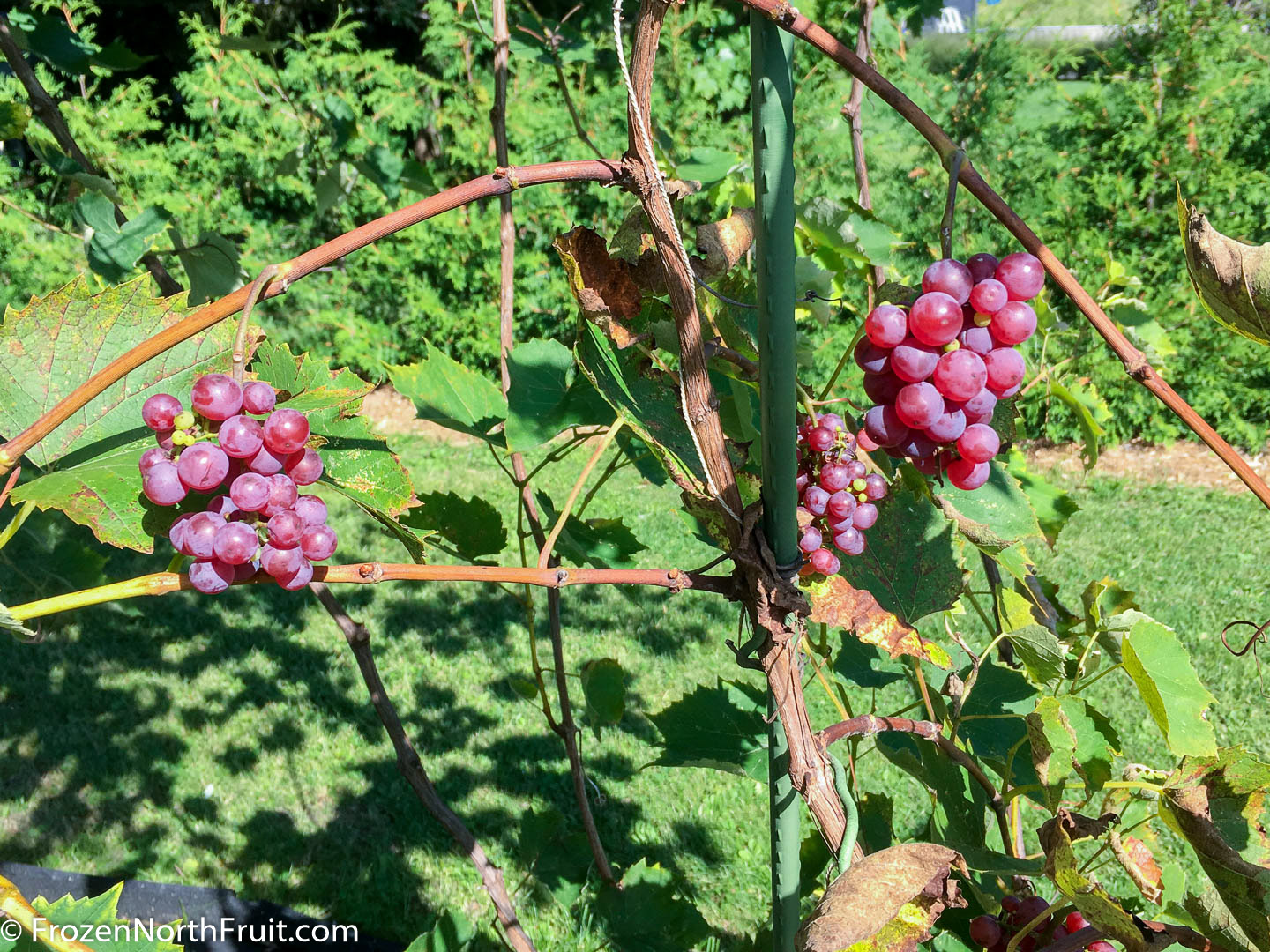
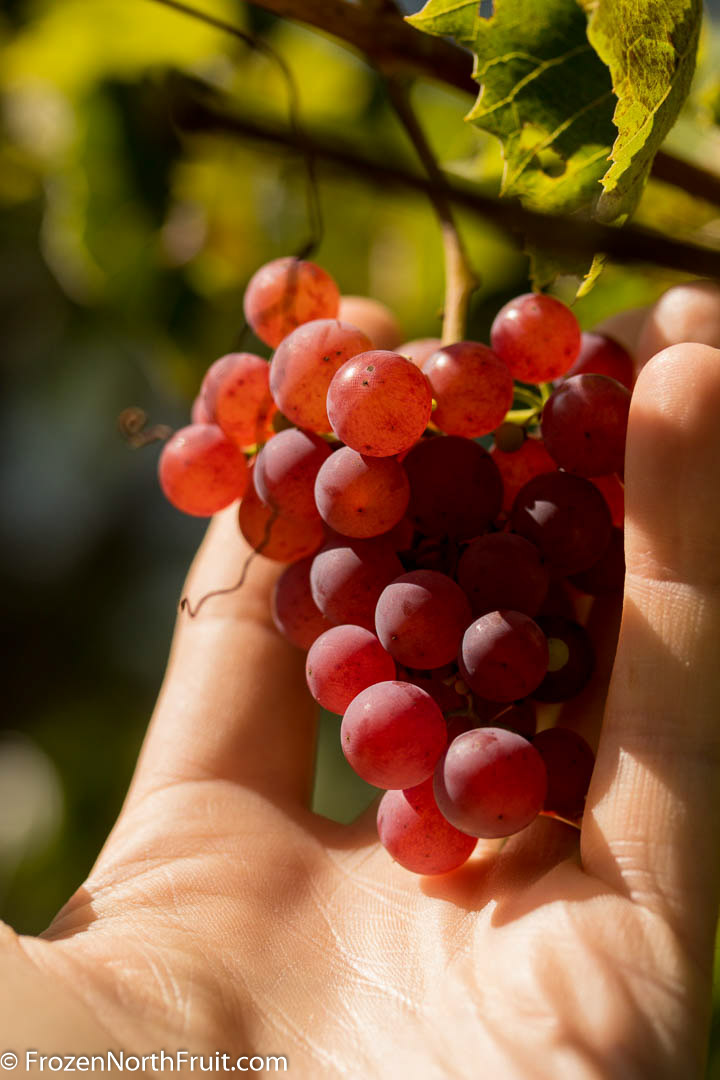
Grape – Vanessa (Planted May 2015 from Whiffletree). Moderate dieback with many lost buds. Vigorous plant with 10’+ growth. Too vigorous for spur pruning as I had problems with fungus (not as bad as Reliance) due to the dense canes and leaves so will cane prune from now on. Bunches are longer and more stringy. Did not need to be brushed as they were not dense by the end of season. Started harvest September 13 and final October 1 when some started to shrivel. Cling skin. Seedless. Good crunch. Floral notes but less prominent than Somerset. 19 – 20 brix.
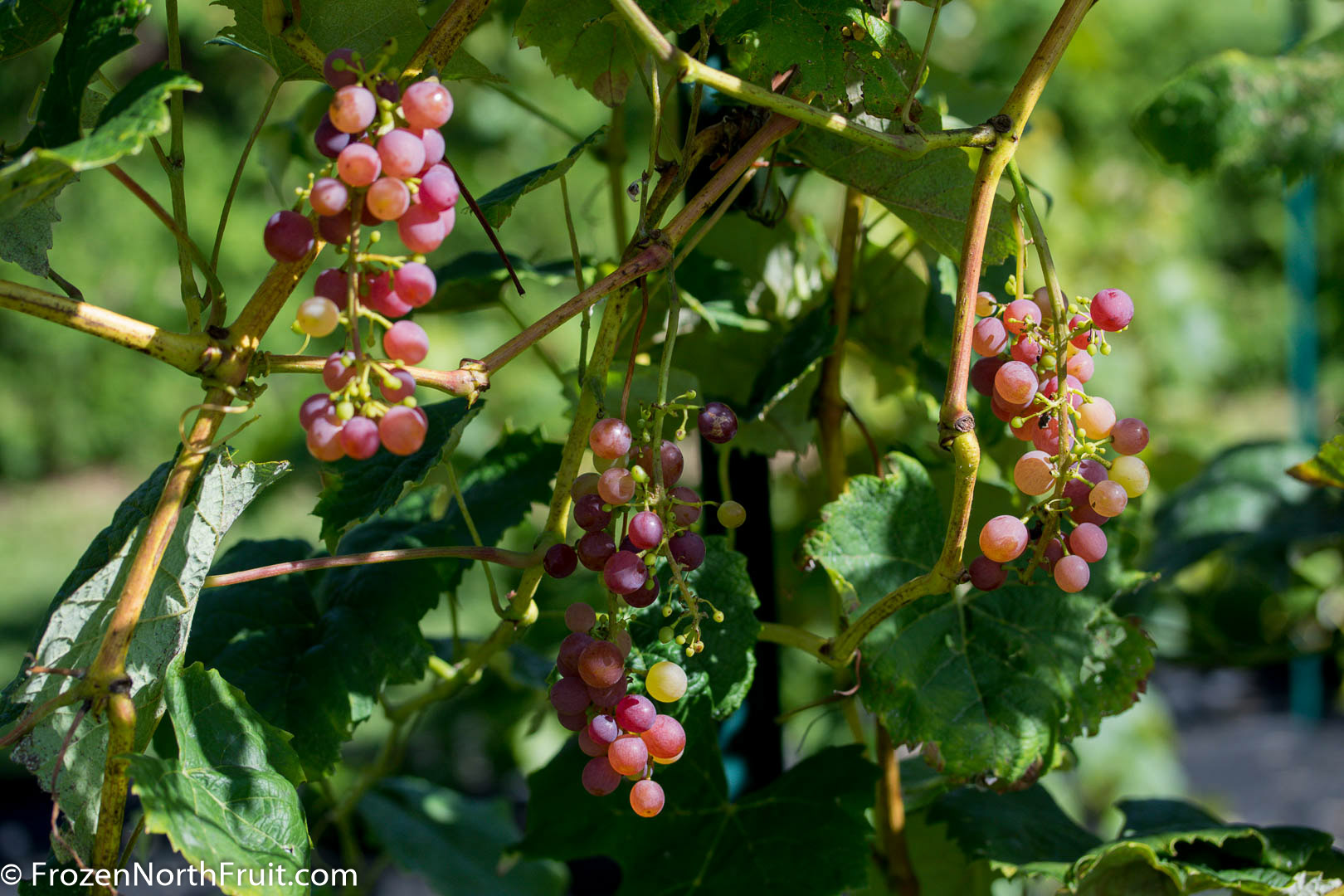
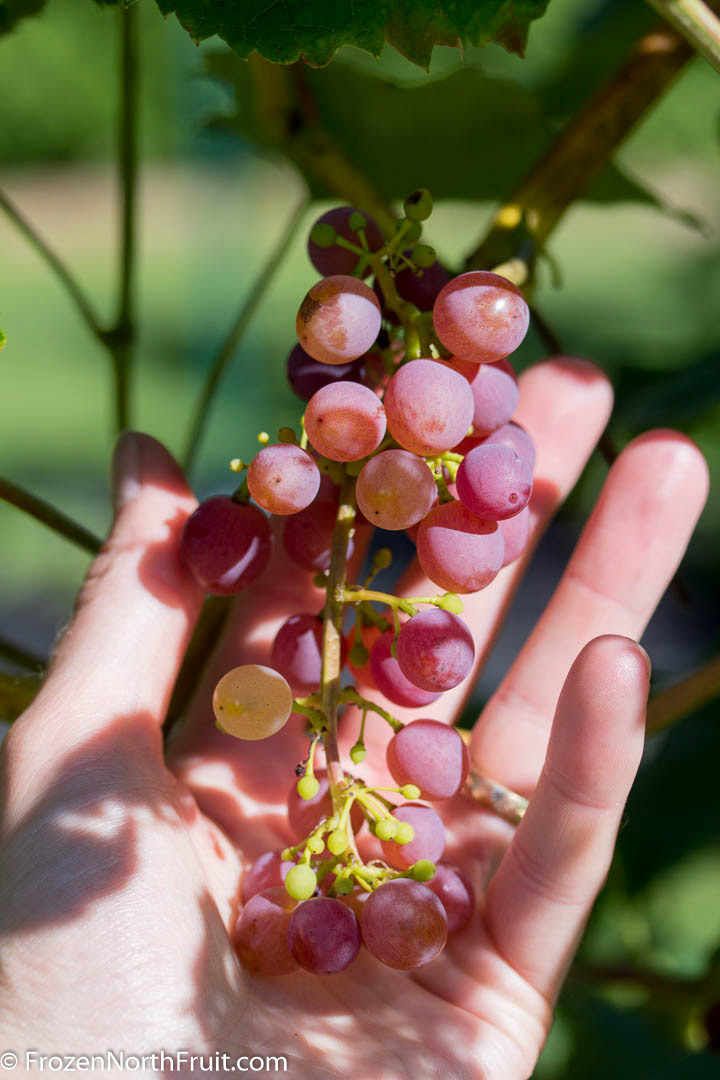
The above photos of Vanessa grapes were from 2017-09-09 while belwo you can see them on 2017-10-01 where they are much darker but some are starting to shrivel up.
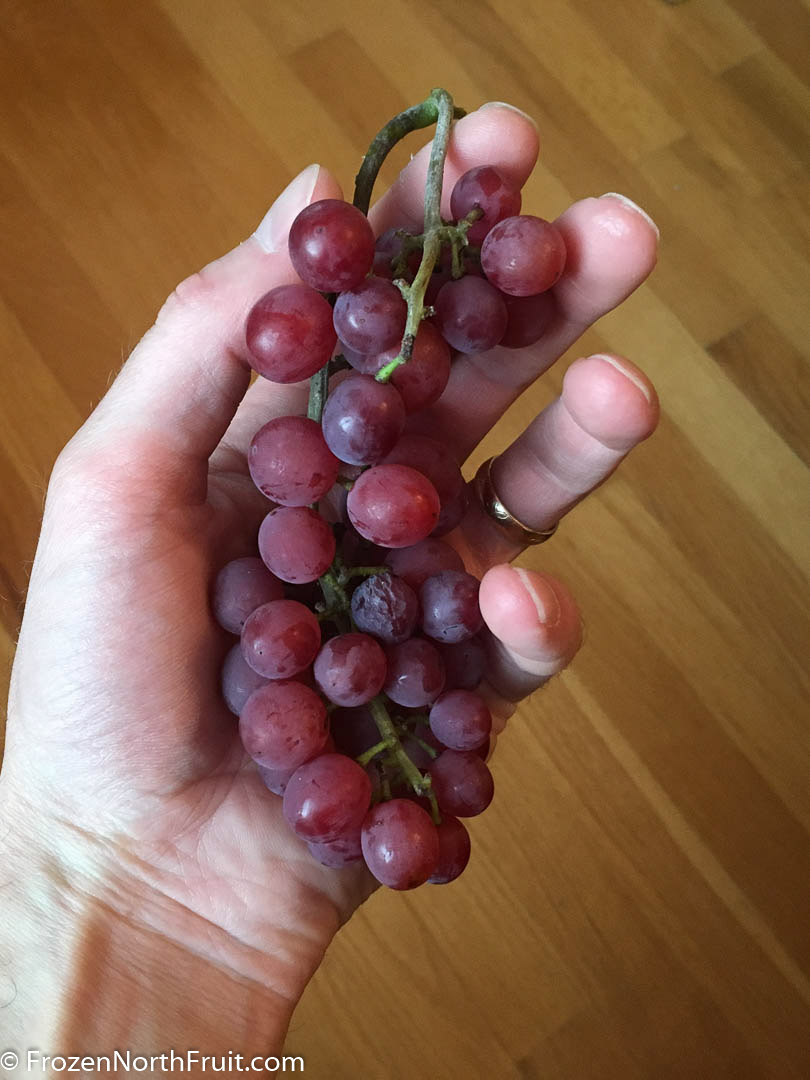
Grape – Reliance (Planted May 2015 from Whiffletree). Moderate dieback with many lost buds. Very vigorous plant with 10’+ growth. Too vigorous for spur pruning as I had huge problems with fungus due to the dense canes and leaves so will cane prune from now on. Larger bunches of grapes and more densely packed – benefited from brushing the bunches to decrease density. Fruit began to be ripe September 13. Peak more around September 21 and began shrivelling September 27. Mixed cling/slip skin. Seedless. Softer than Vanessa. Floral, somewhat similar to Somerset (but not as good). Sweeter and more pleasing flavour than Vanessa. 24 brix.
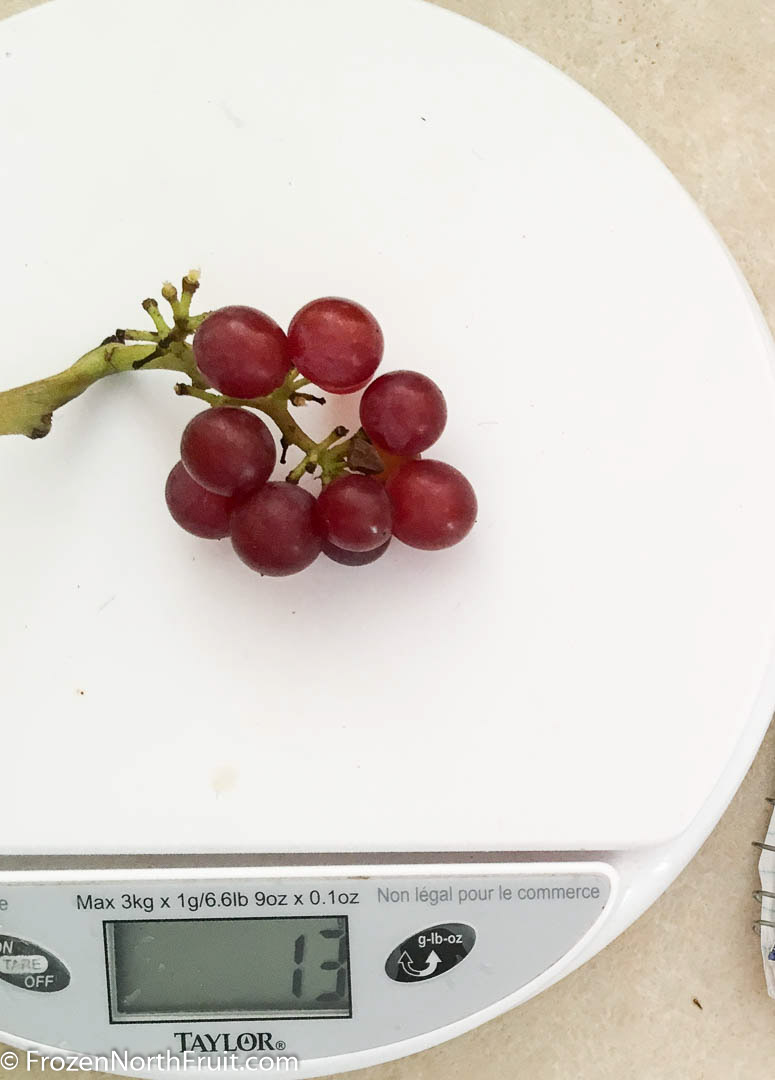
Grape – Pink Pearl BUT IT IS NOT (Planted Fall 2012 Greenbarn). Mislabelled. I believe this is Trollhaugen. No dieback and no evident dead buds. Vigorous plant with 10’+ growth. Tight, dense clusters –benefited from both brushing and pinching the end of the bunches. Started September 13 and finished September 23 which was actually left too long. Slip skin. Small soft seed remnants. Soft flesh. Sweet with a nice concord like taste when peak ripe. Some problems with bunch shatter. 19-21 brix.
Grape – Catawba (Planted May 2015 from Whiffletree). Severe dieback with majority dead buds – only surviving below snowline. Only started turning color Sept 16 still not ripe Oct 13 after a couple frosts and leaves browning. Grapes and bunches slightly smaller than Concord. There is a reason Concord supplanted this grape in popularity. Pulled out fall 2017.
Grape – Concord seedless (but think it is regular seeded concord)(Planted May 2014 from Whiffletree). No dieback but 2 western facing trunks had no bud survival while 2 eastern facing trunks had complete bud survival. Always has seeds to think might be actually be Concord but they say in some climates the seedless grapes can actually have seeds. Very vigorous vine with 8’+ of growth. Large grapes in loose clusters. Started harvest September 25 with last harvested November 3. Peak flavour from last week of October and still amazing Nov 3. Slipskin with seeds. Juicy, sweet with amazing grape flavour. 19 brix.
Grape – Bluebell (Planted May 2016 from Cornhill nursery). No dieback or bud death. Moderate vigor vine but only it’s 2nd year in the ground so a bit early to tell. Ripe as of September 23 but peak flavour September 29 but by October 1st the skin was tough, dry and somewhat unpleasant. Slipskin with seeds. Juicy and sweet with a milder Concord flavour. Concord is better but Bluebell is ripe 3-4 weeks earlier. Same size grapes and bunches as Concord. 19 brix.
Grape – Valliant (Planted May 2016 from Cornhill nursery). No dieback or bud death. Moderate vigor. Small bunches and small grapes. Very large seeds – feels like takes up 30-50% of the grape. Ripe as September 9 but peak September 19. Grapey flavour but nothing in compared to Bluebell, Concord and the like. With the flavour and the seeds there is NO reason to grow this grape if you can grow Trollhaugen, Bluebell, Sommerset, Concord and the like. I would only grow this if I had no other choices. 19 brix. Pulled out fall 2017.
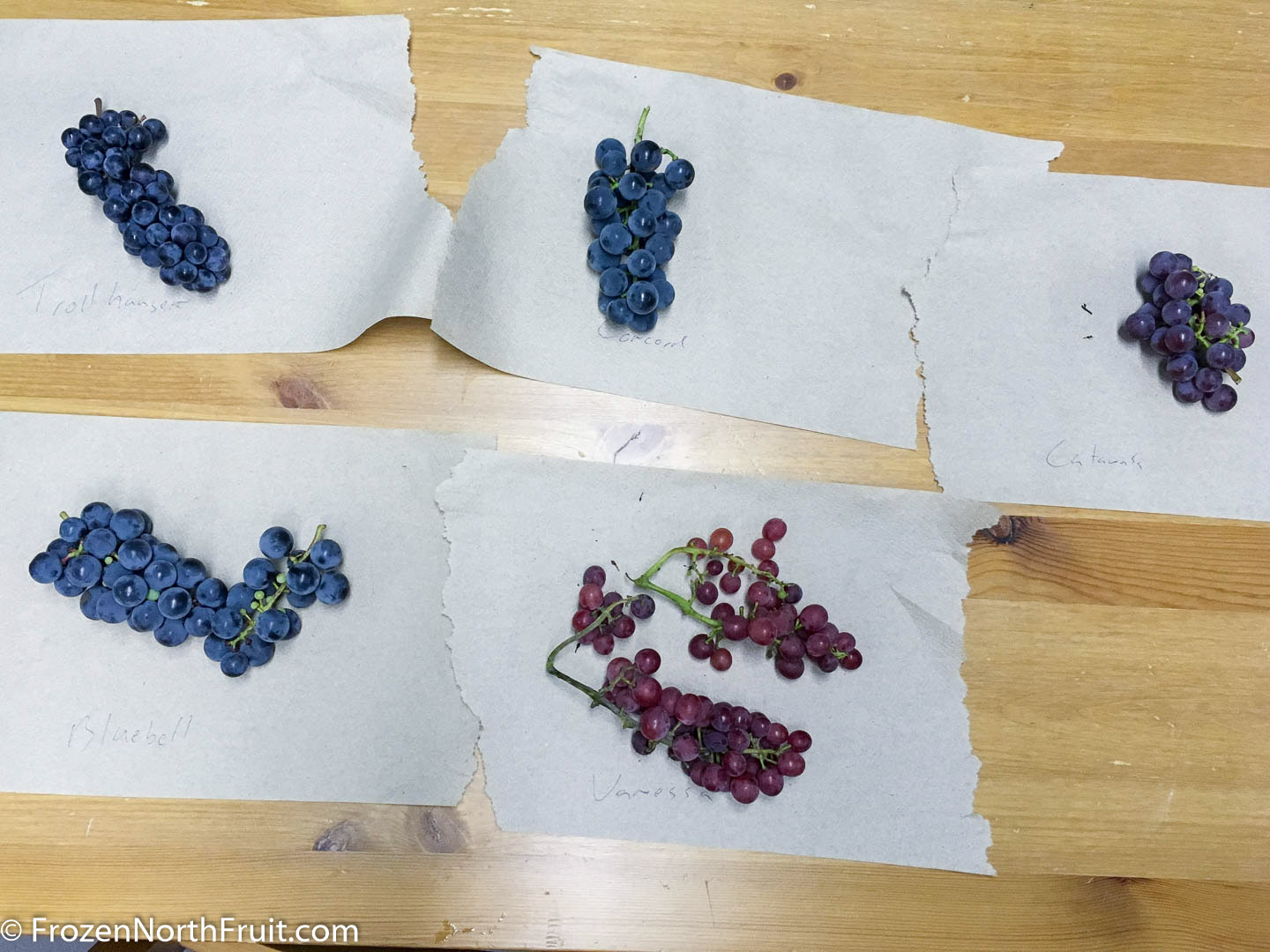
Grape – Swenson Red (Planted May 2016 from Cornhill nursery). No dieback but was small and fully covered by snow. Just planted this spring. It was a small plant so to early to say about vigor. Has not reached the 6’ wire.
Grape – Brianna (Planted Spring 2017 from Vignes chez soi)
Grape – Roland (Planted Spring 2017 from Vignes chez soi)
Grape – Swenson White (Planted Spring 2017 from Vignes chez soi)
Grape – Montreal Blue (Planted Spring 2017 from Vignes chez soi)
Grape – Himrod (Planted Spring 2017 from Vignes chez soi)
Grape – Candice (Planted Spring 2017 from Vignes chez soi)
Grape – Petite Jewel (Planted Spring 2017 from Vignes chez soi)
Grape – Kay gray (Planted Spring 2017 from Vignes chez soi)
Grape – Earliblue (Planted Fall 2012 Greenbarn) – 2 trunks. Died. Pulled up 2016.
Grape – Polar Green (Planted Fall 2012 Greenbarn) Mislabelled. Think was Trollhaugen. Pulled out Spring 2017.
Grape – Petite Jewel (Planted May 2015 from Whiffletree). Mislabelled as had seeds. Pulled out fall 2016
Blueberries – Chandler (Planted Fall 2012 Greenbarn) Survived. Flowering but not thriving. They don’t like my soil. Pulled out.
Blueberries – Toro (Planted Fall 2012 Greenbarn) Survived. Flowering but not thriving. They don’t like my soil. Pulled out.
Blueberries – Duke (Planted May 2014 from Costco) Survived. Flowering but not thriving. They don’t like my soil. Pulled out.
Cherry – Crimson Passion (Planted Fall 2013 from prairieplant.com 7) – Survived. No dieback. Few flowers starting May 17. Fruit all eaten by worms.
Cherry – Juliet (Planted Fall 2013 from prairieplant.com 7) – Survived. No dieback. Few flowers starting May 17.
Cherry – Romeo (Planted Fall 2013 from prairieplant.com 7) Survived. No dieback. Few flowers starting May 17. Fruit all eaten by worms.
Cherry – Cupid (Planted Fall 2013 from prairieplant.com 7) Survived. No dieback. Few flowers starting May 17 and flowers lasted the longest of the 4 sour cherries. Fruit July 31 but majority were wormy. Slight sour – hard to tell with the small amount. 5g/berry. 14 brix.
Mulberry – Seedling (Planted Fall 2012 Greenbarn) Survived. No dieback. I thought this was a male because it would flower but produce no fruit. This year it actually did produce a couple tiny fruits. Flowered June 12, fruit July 16.
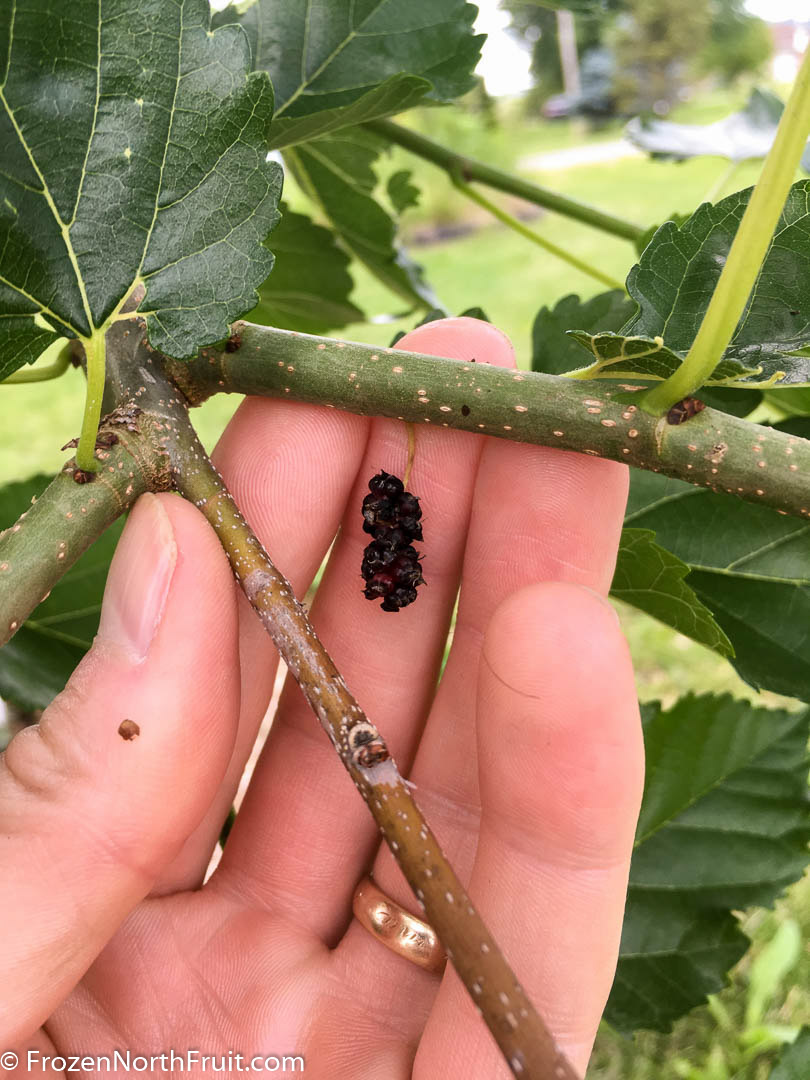
Mulberry – Illinois everbearing. I severely cut back my crappy Greenbarn seedling mulberry and grafted a bunch of Illinois everbearing I got from someone in Ottawa (zone 5a/b vs my 4b). They grew like crazy putting on 6-8’ of growth. The leaves are huge and with windstorm I lost several grafts due to them breaking at the union. That said I got a bunch of fruit! Flowered June 12 and started fruiting July 16 and continued bearing until August 27. Large, sweet delicious fruits that remind me somewhat of blackberries. We will see how well it survives this winter. I grafted some to suckers from the ground and am deciding if I should cut down the tree completely and change over to the sucker from the ground or just topwork the existing tree completely. It has a 4-5” trunk now so I am loath to just cut it down. I will probably give it 1 more year and decide then.
Be aware birds love these. Be careful if you have a concrete driveway, light colored cars or a light house/roof because the bird crap is dark purple and stains!
Illinois Everybearing – 20170815 – FrozenNorthFruit – C2017
2017 Illinois Everbearing mulberry – Harvest 2017-08-15
Plumcot – Taylors Gold (MARIANA 26-24? Planted Fall 2014 from Whiffletree) Survived. No dieback. Apparently NOT a plumcot but a plum that tastes like apricot – another GreenBarn naming special…. Really taking off last year. Heavily cut back and I grafted 24 different plum and apricot grafts to it. Started flowering May 16. Produced some fruit but all aborted from PC attack.
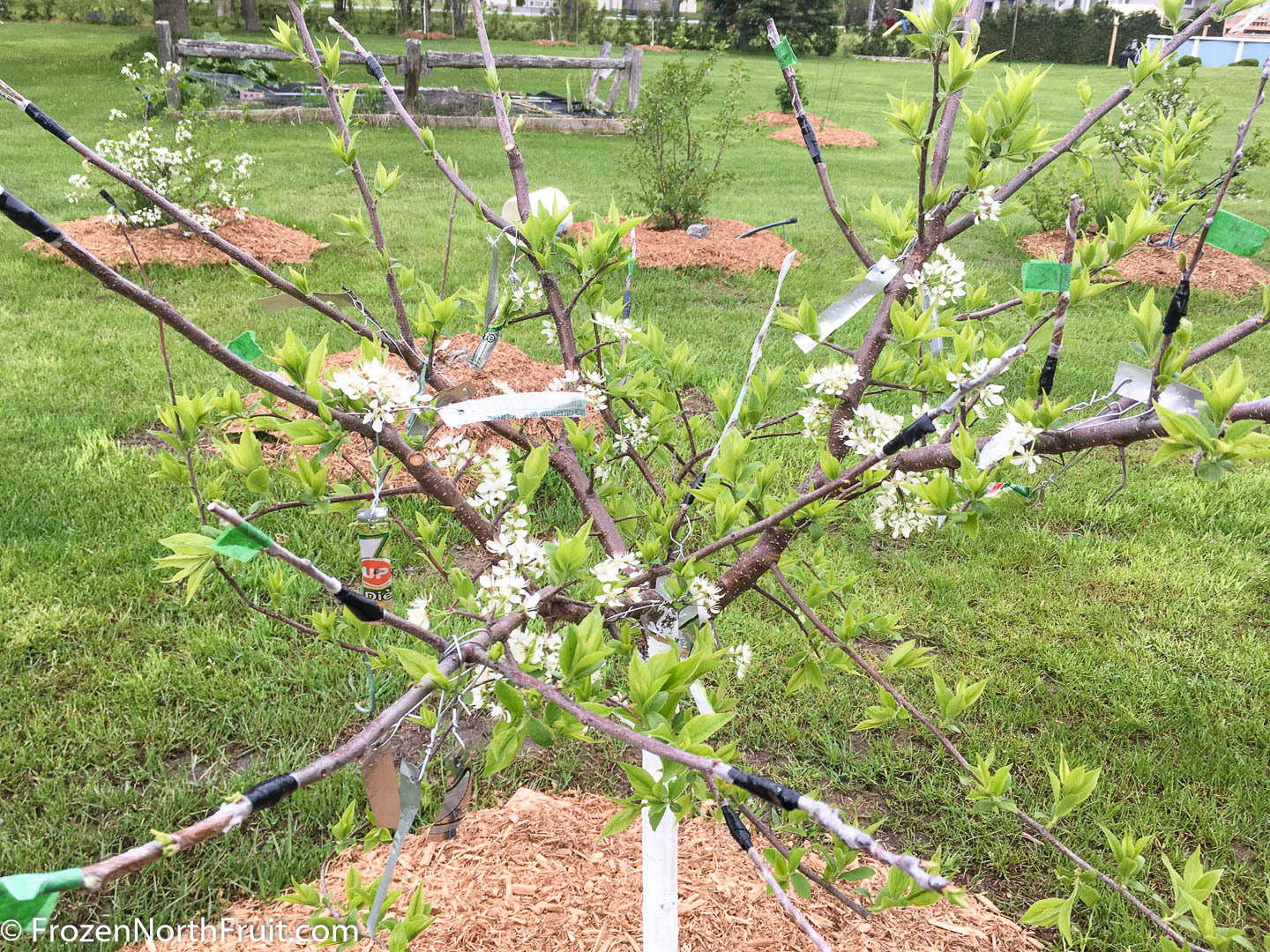
Strawberry – Albion and All Star. They survive over winter but are not happy in my clay soil. The birds get all the berries too. I pulled them out to make a nursery bed for grafted apple and pear rootstocks.
Rubarb – Victoria? (crown has been propagated in family for +80 years over 4 different moves!) Survived and thriving. Crown break April 24 with first ready to harvest May 18 and produces until nearly first frost in late September. Over 10kg harvested. Less than last year but I had enough that I did not harvest any in August or September.
Rubarb – Strawberry Red (Planted May 2014 from Costco) Dead.
Heartnut – Imshu (Planted May 2014 from Whiffletree – did not survive winter 2015) Sending up shoots from roots.
Heartnut – Campbell CW-3 (Planted May 2014 from Whiffletree – did not survive winter 2015) Sending up shoots from roots.
Medlar – Giant Breda (Planted May 2014 from Whiffletree – died back to graft 2015). Struggling along. Probably will die.
Medlar – Royal (Planted May 2014 from Whiffletree – died back to graft 2015). Struggling along. Probably will die.
Heartnut and Medlar are planted on a rural property in quite sandy soil. They got heavily eaten by deer in the fall 2014. Some mice damage over winter 2015. I saw some re-growth from the graft of the medlars last year and they seem to be leafing out this spring from those shoots. The Heartnuts both died down to ground last year but then sent up shoots from the seedling roots. Those shoots appeared to survive this winter and I am letting the grow to see what happens.
Here is a phtoo shot of some small fruits from this year.
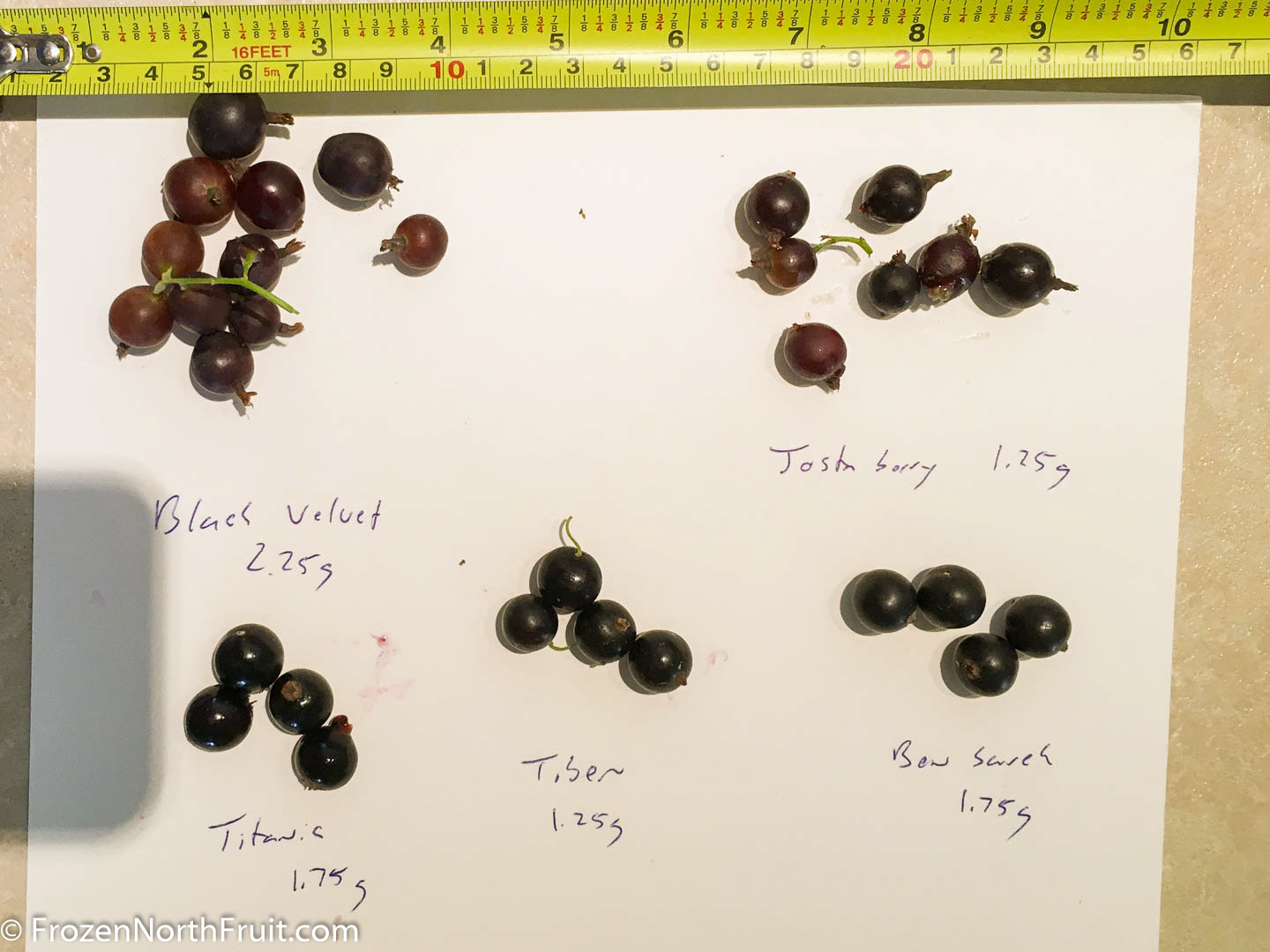
Gooseberry – Black Velvet (Planted Fall 2014 from Whiffletree) Survived. No dieback. Lots of fruit. Small and tart despite reaching 16 brix 4th week of July. Ripens last week of July – 1st week August. To tart for me and my wife for fresh eating but makes a great jam. Need to cover because birds like them.
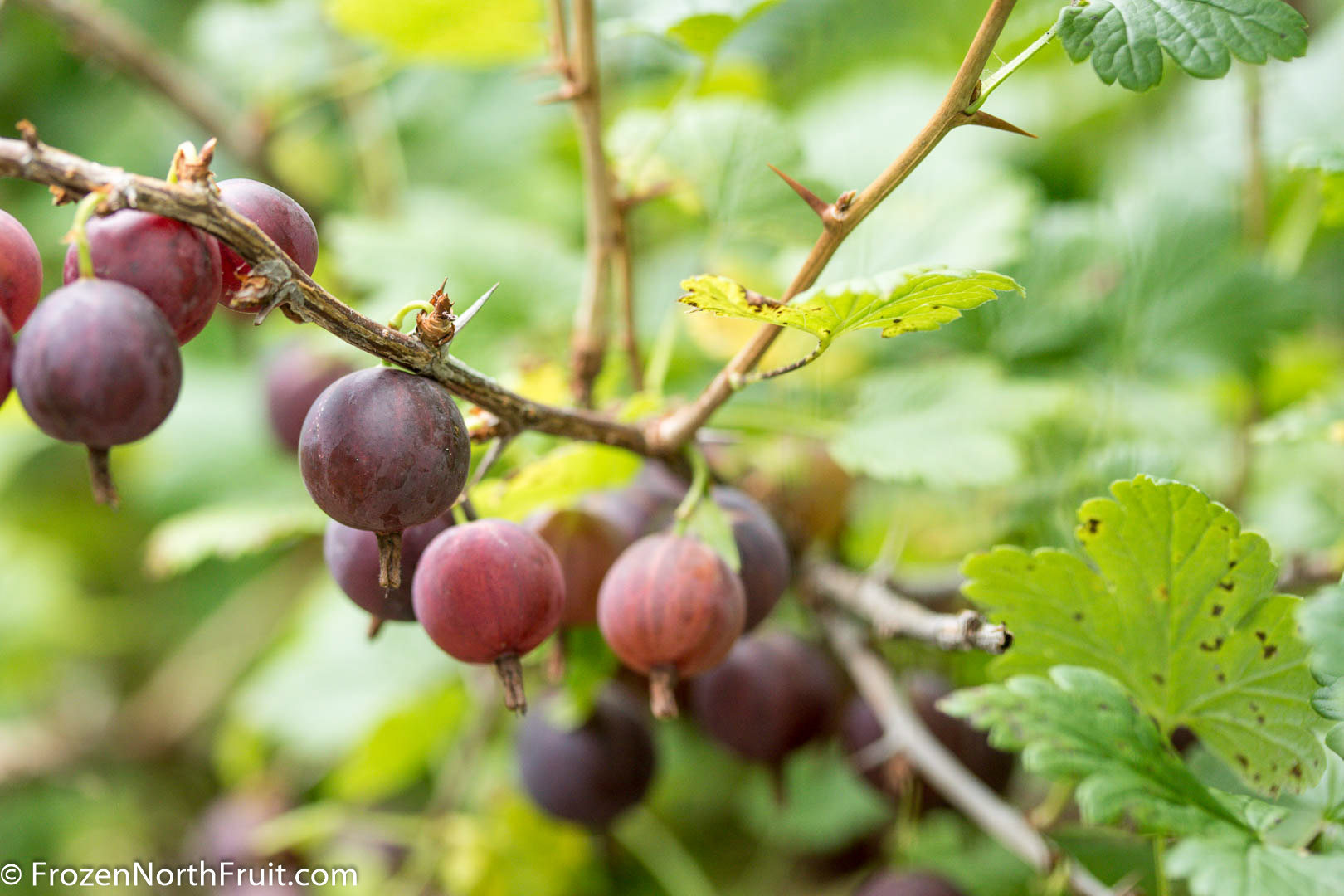
Gooseberry – Tixia (Planted Fall 2014 from Whiffletree) Died back this year. Perhaps the stress from being defoliated by currant worms last year?
Gooseberry – Poorman (Planted Fall 2014 from Whiffletree) Survived. No dieback. Many flowers. Ripens last 2 weeks of July and reached 16.5 brix. Much less acidity and was great for fresh eating. Need to cover because birds and squirrels like them. In fact the day before I planned to harvest them the animals got 90% of them!
In previous years I had issues with curratn worms totally defoliating the pants. I had less problems with currant worms this year. I regularly looked at my leaves and as soon as I say the eggs (small, poppy seed like clusters) I would remove them .
Currant – Ben Cowan (Planted Fall 2013 from local) Survived. No dieback. Many flowers. Harvest began July 12. Total 731g so double from last year. 11 brix. This is a small plant, planted in my clay soil from a crappy potted nursery stock.
Currant – Ben Sarek (Planted Fall 2014 from Whiffletree) Survived. No dieback. Many flowers. This is shorter plant than Titania with a more spreading nature. Harvest started 3rd week July. 597g in 2017 vs 1097g in 2016. Sweeter this year at 16 Brix.
Currant – Titania (Planted Fall 2014 from Whiffletree) Survived and flourishing. No dieback. Tall, upright canes. Needs to be staked/supported or the weight of MASSIVE crop will lay the canes to the ground. 2248g in 2017 vs 2576g in 2016 from 1 plant! Peak harvest 3rd week July with some later ripening in 4th week. 16 Brix. I LOVE this plant!
Currant – Tiben (Planted Spring 2016 from Whiffletree). Only planted last year. I did get some currants but were small and hard, not sure if representative. 922g and 13 brix. Bit smaller berries than Titania.
I LOVE currants. Easy to grow, you can’t buy them in stores and they laugh at early season frosts. They are second earliest fruits ripening just after Haskasps.
Clockwise from upper left. Ben Sarek, Tiben, Cupid, Royalty, black raspberry, Titania.
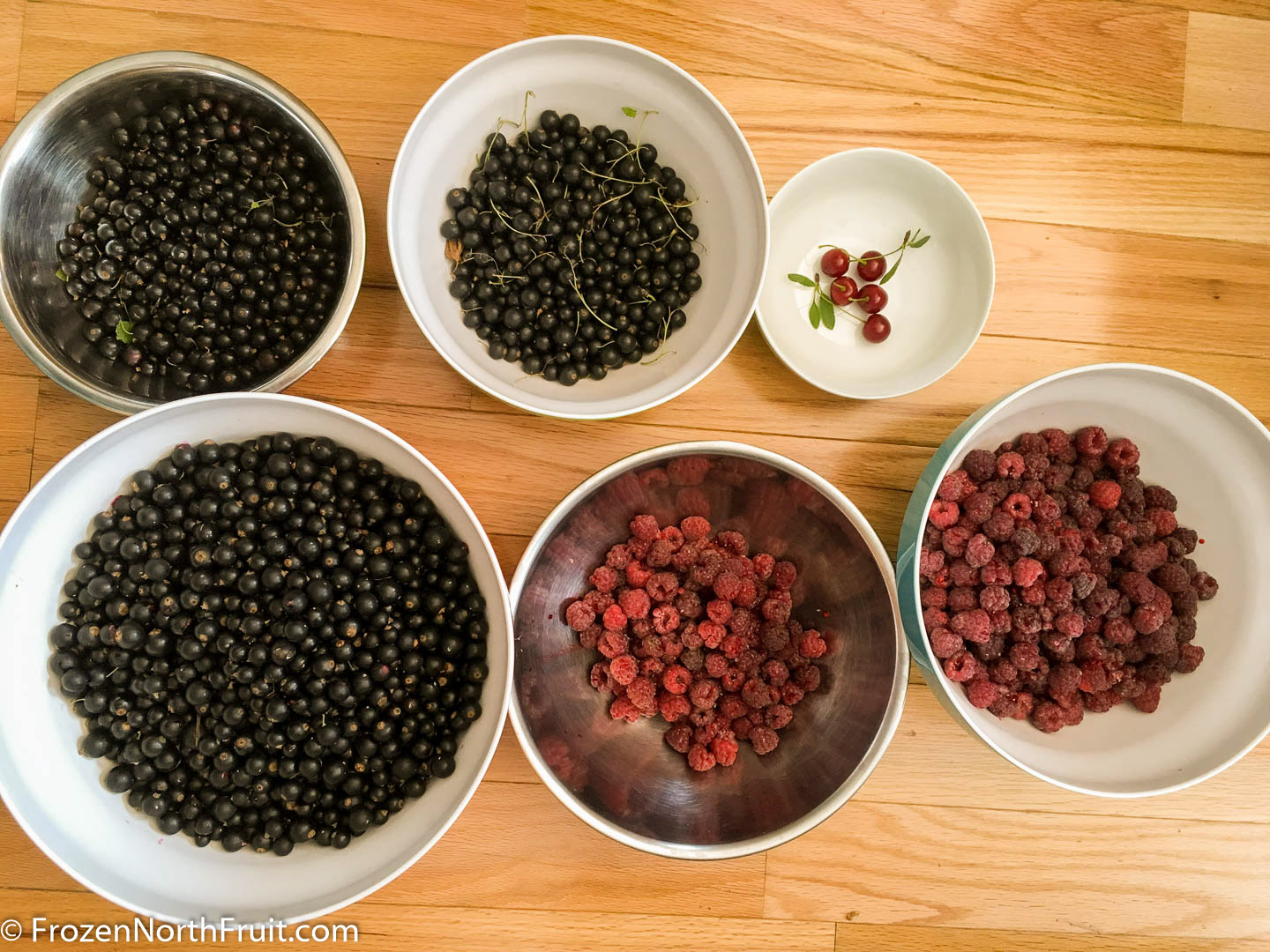
Josta Berry – (Planted Fall 2014 from Whiffletree – survived winter). Survived and flourishing. No dieback. Many flowers but hardly any fruit! I have 2 of these planted. They now spread 5 feet x 5 feet. Each plant takes up nearly 2x the area as Titania but Titania gave me 2.2kg of fruit and each of these gave me under 20 berries! 16 brix. They are right next to Titania, Tiben and Ben Sarek so it can’t be pollenization. The berries produced were only as big as my large Titania berries and not even that good. I tore out these wastes of space to make room for a larger garlic bed and more currants.
Paw Paw – Seedling (Planted May 2014 from Whiffletree) – Survived. No dieback. Really taking off this year. Nice healthy looking plant now reaching 2 feet tall.
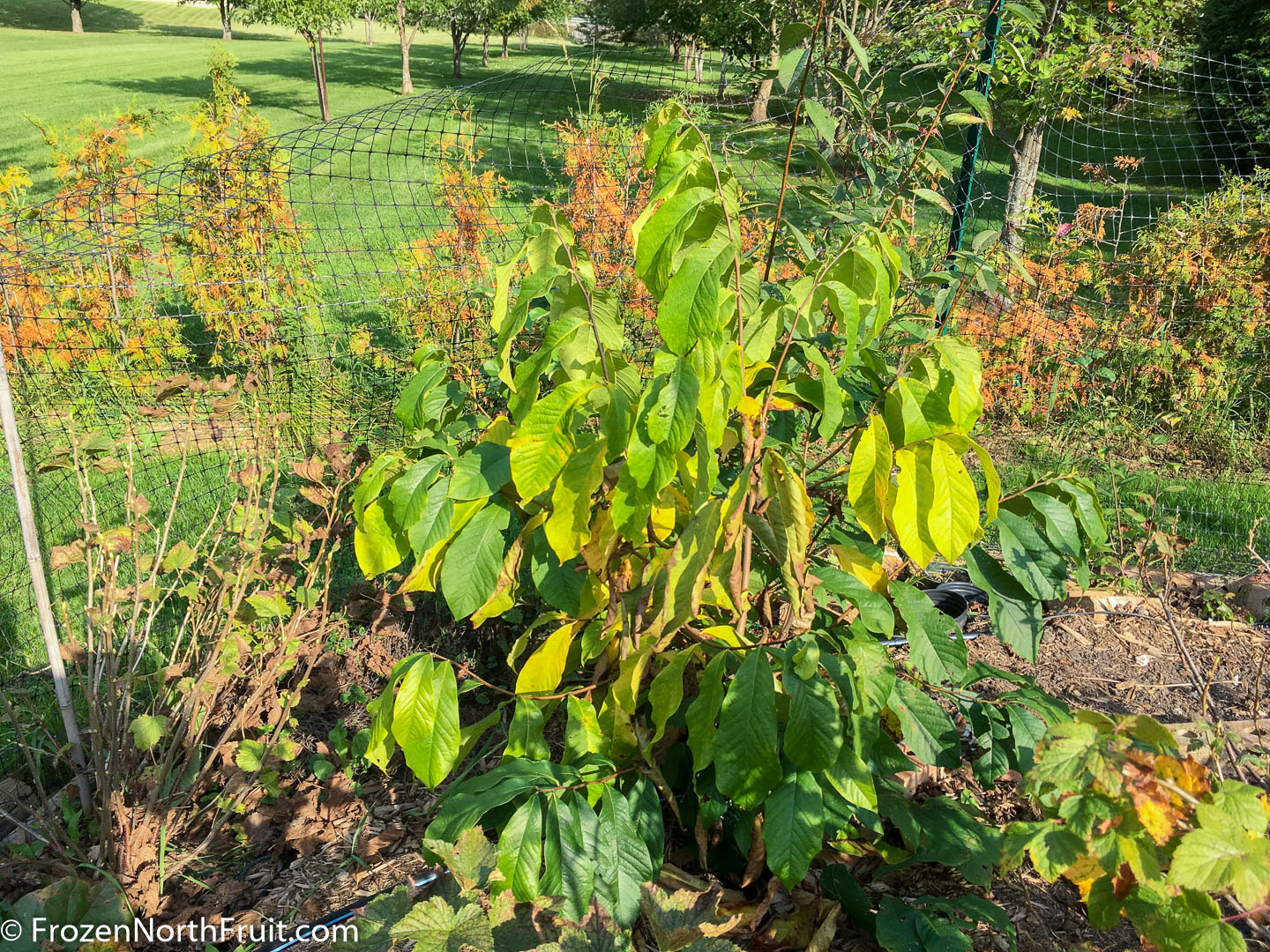
Paw Paw – Campbell NC-1 (Planted May 2014 from Whiffletree) – Struggling. Hardly any growth each year. I am going to try grafting it to some of the branches of my seedling to make sure I have future pollinators.
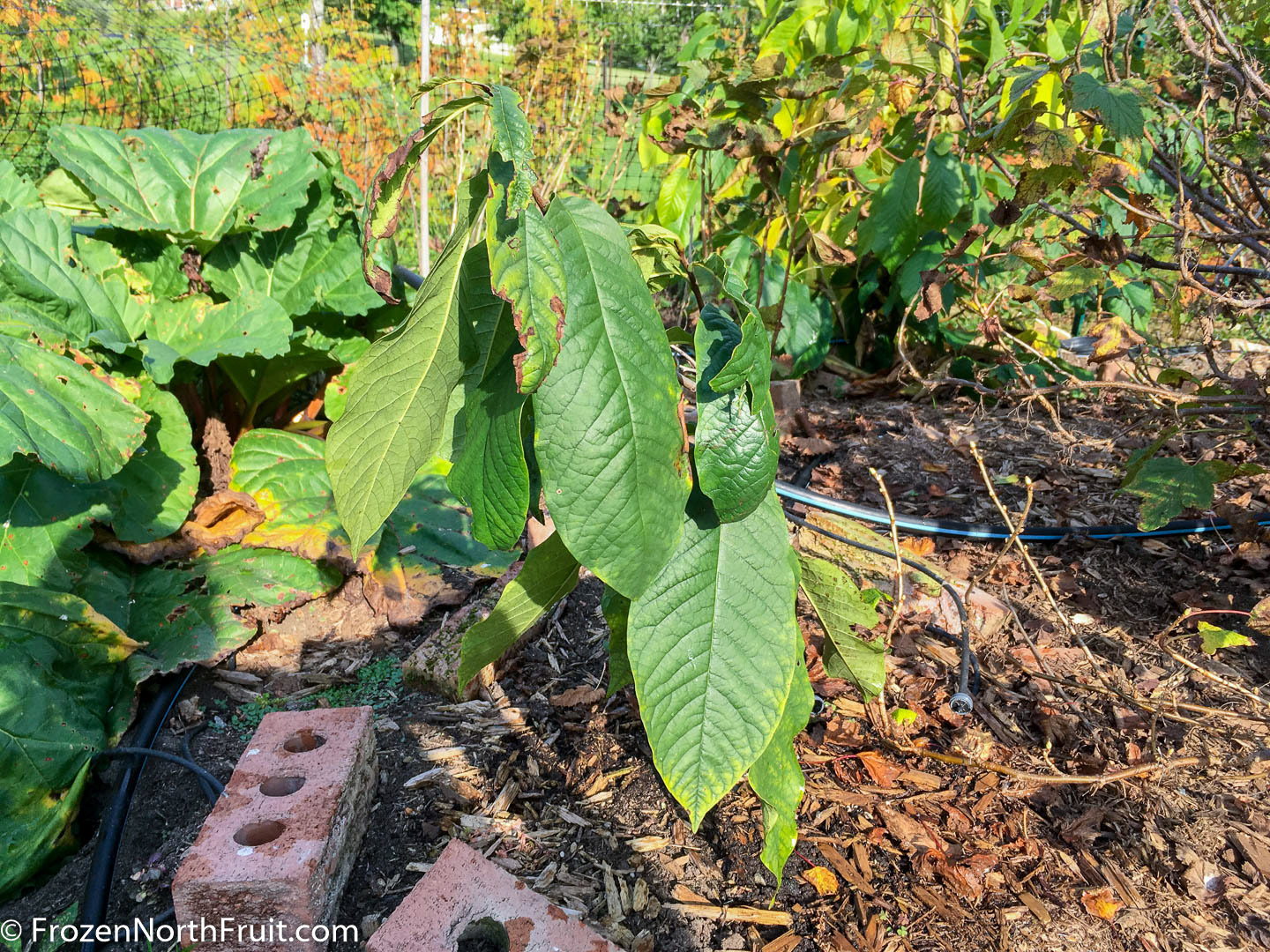
Garlic – Nothing like home grown garlic instead of that no-flavour bulk USA/Chinese garbage. Plant in late fall a couple weeks before frost (I do late September) and harvest in summer when you see 3-4 leaves gone yellow/brown. Hang to dry in a shaded, well ventilated area – beware your basement or whole house will smell like garlic. I hang as a bunches in the garage with a fan blowing on them. Break open your big bulbs in fall and replant (always plant your best bulbs as they will grow even better ones the next year). Yum, Yum!
So to summarize:
Grafted like crazy. See last years write up for my technique with parafilm. I had 95% + success with a mix of Omega tool, cleft and whip grafting. I even had apple grafts that were lost in the mail for 3 weeks take even though they were dry as a bone!
Note that the Omega tool grafts are WEAK and I have lost many grafts even years later due to heavy fruit load or winds. Just stick with whip-tongue for larger diameter scions and cleft for smaller scions or mismatch between sizes. Below you can see my Frankenpear which has a different pear variety grafted on pretty much every single scaffold (you can also see the small black plastic branch spreaders to keep good angles because pears love to shoot UPWARDS.
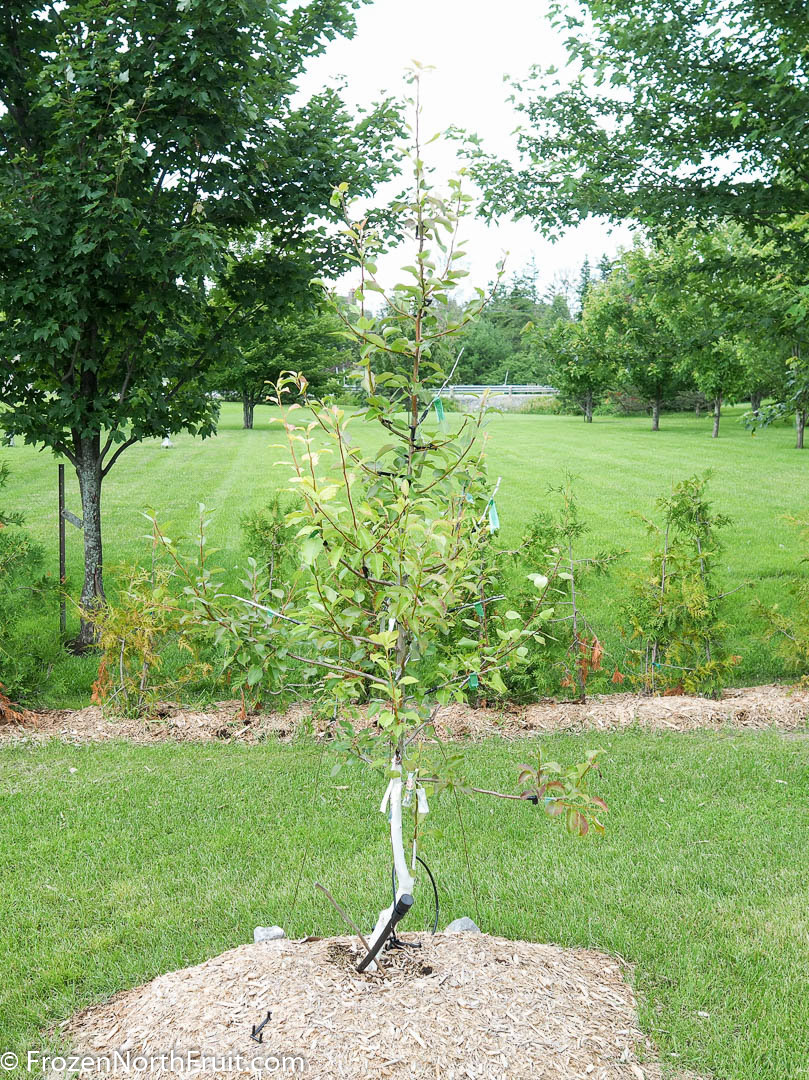
Bagging apples is for sure the way to go for my backyard scale orchard. The fruit was larger and in much better condition. Storing them in the fridge without removing the bags also kept them in better shape for longer with less “fridge” smell. However earwigs do love to get into the bags, they don’t seem to do damage but they and their poop is gross.
Next year I will wait to bag my grapes until they just start turning color. I will also move from spur pruning to cane pruning to try and have a less crowded canopy and better airflow to hopefully reduce fungal pressure.
For my elderberries I will be harvesting 50% of the flowers to make cordial and then leaving the rest for berries.
As an aside, I got a steamer/juicer from Amazon this year. It is much easier than doing a boil/strain. I would get 50-60% of my yield with a 30min steam, then 25-35% yield with a 2nd 30 min steam, then 15-25% yield with the 3rd 30 min steam. So really no need to steam for more than 1 hr. The steaming yields nice, clean juice and I did not notice any taste difference from the boil/strain method. That said my Apple jelly did not set because the steaming did not release pectin from the skin/steam/seeds like I got from boiling. I will have to add pectin next year. Instead I just boiled up to 220 degrees celcius and made it more of an apple caramel type thing.
My yard is full now with no further planting planned. I have some more varieties coming from the Parie Plant Repository of USask. In the next 2 years I should be able to taste most of my grafts and narrow down to what I really like and what works well in my zone.
Looking forward to what 2018 will bring.
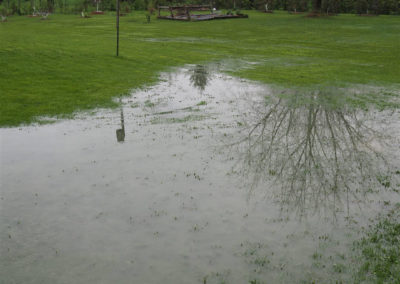
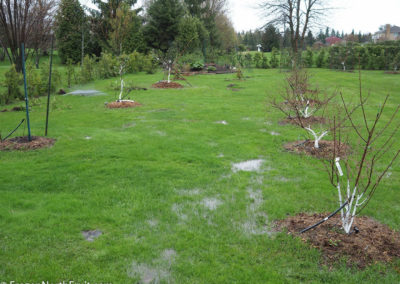
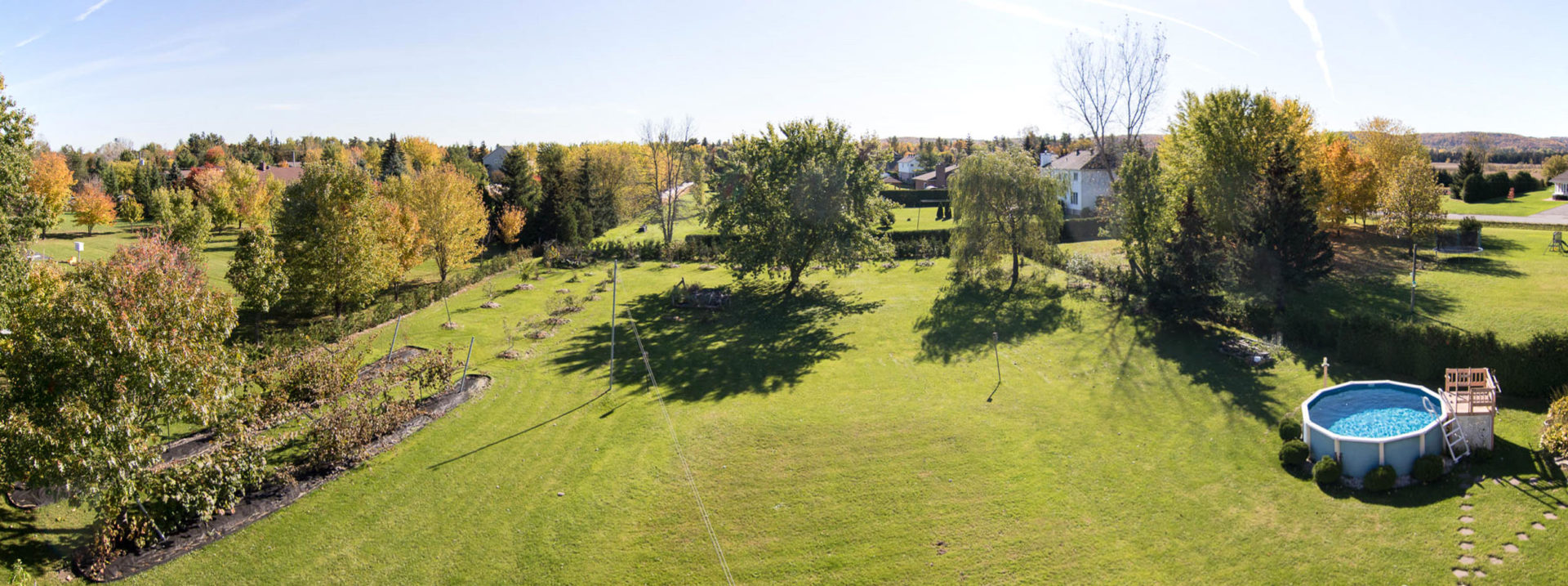
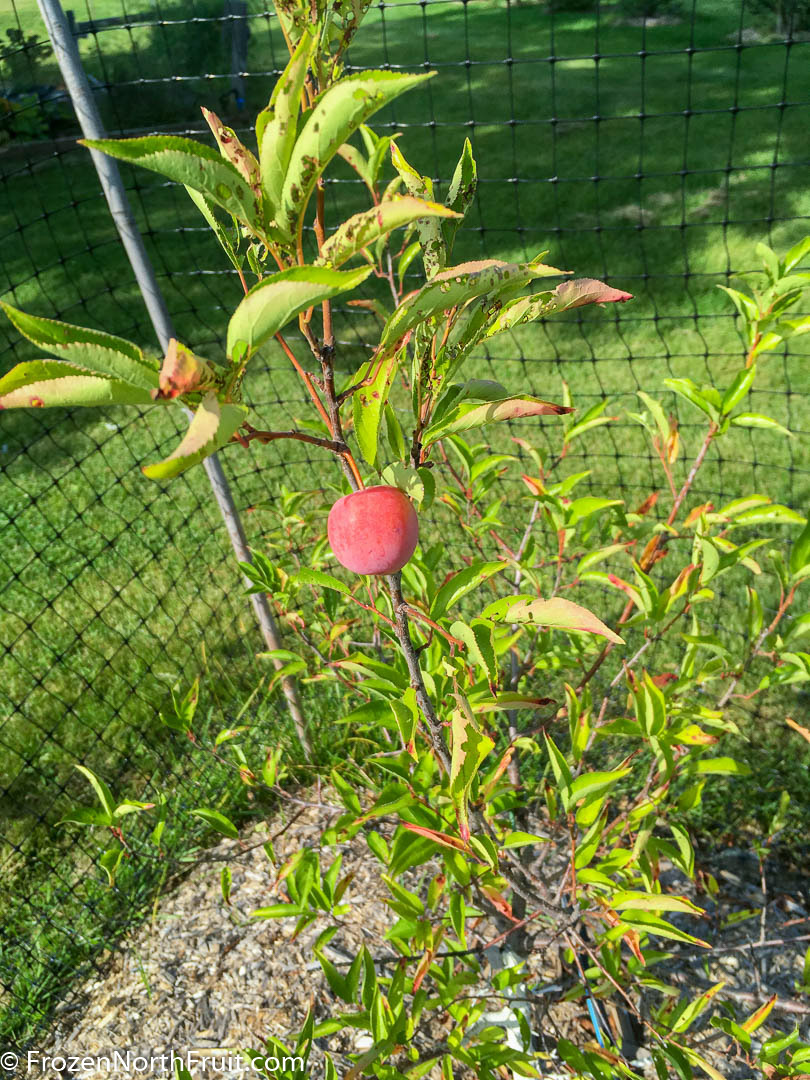
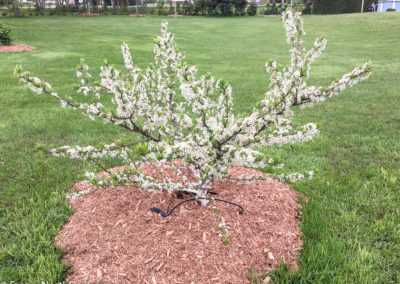
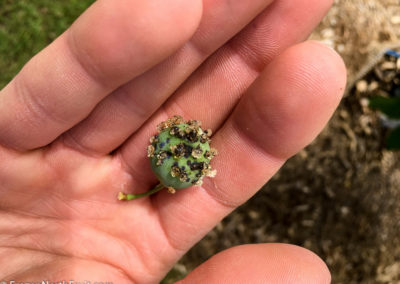

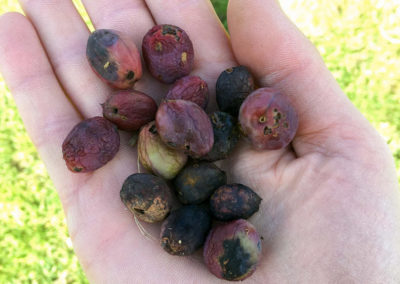
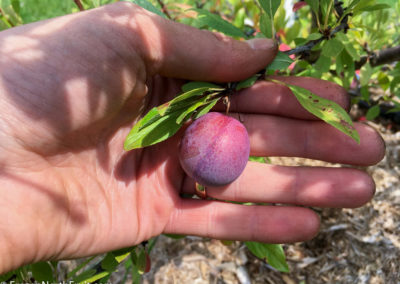
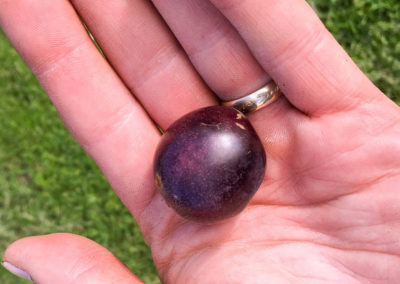
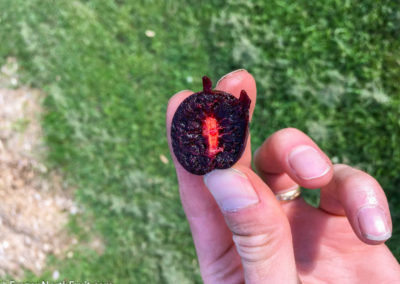
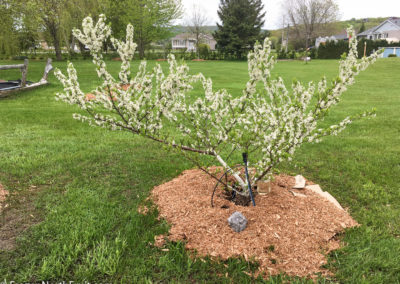
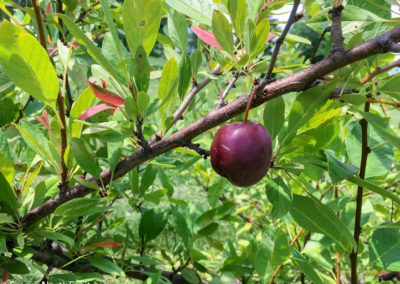
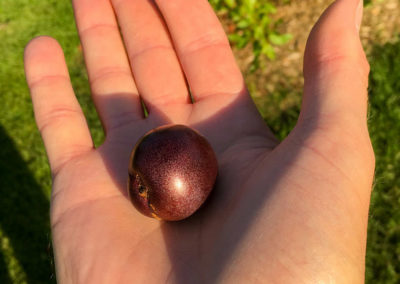
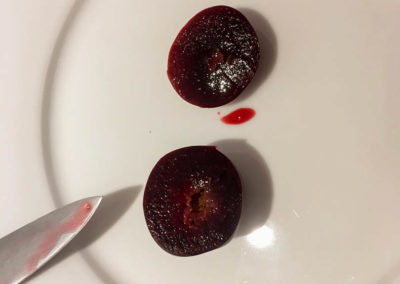
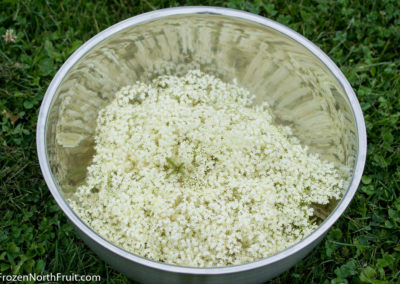
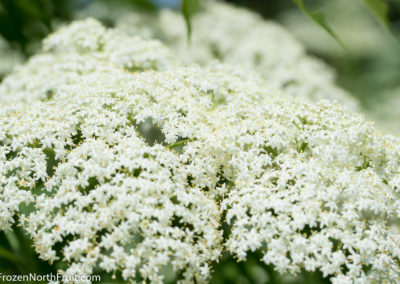
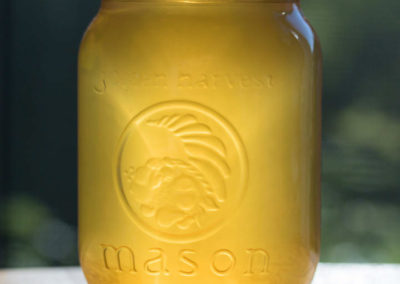
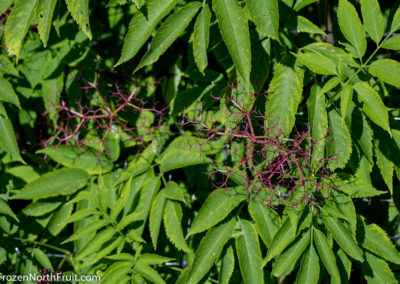
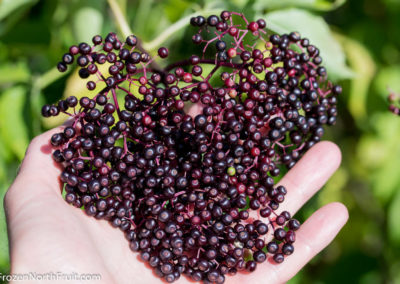
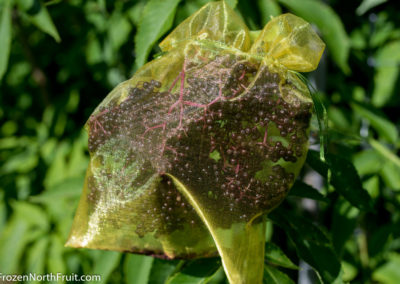
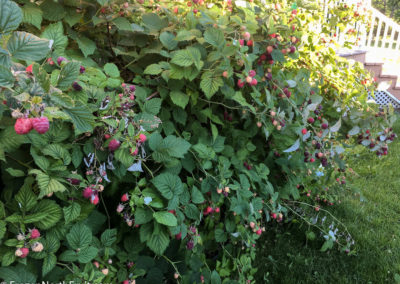
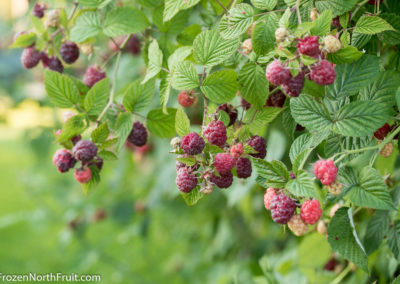
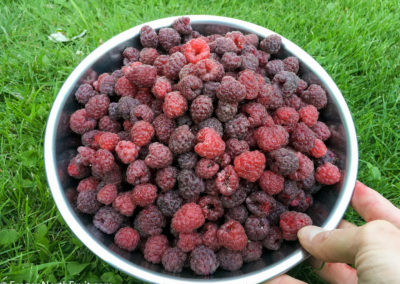
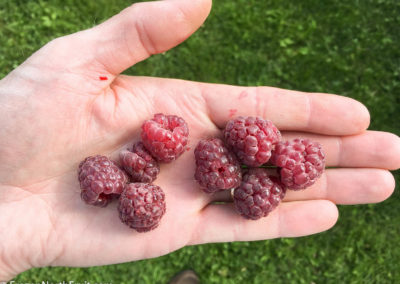

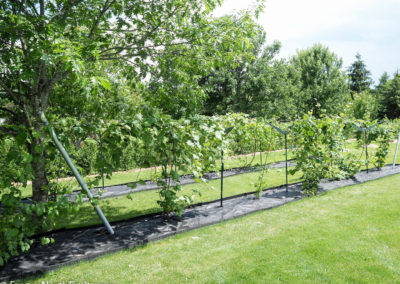
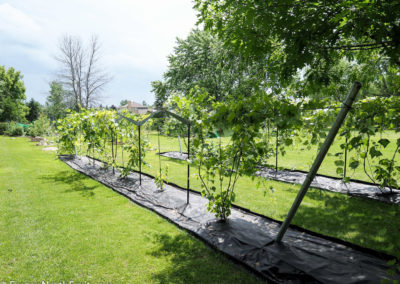
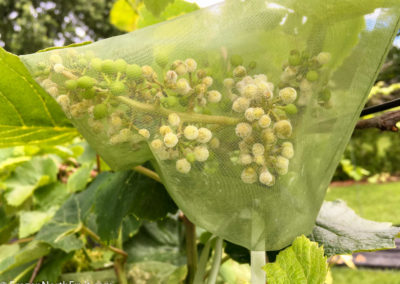
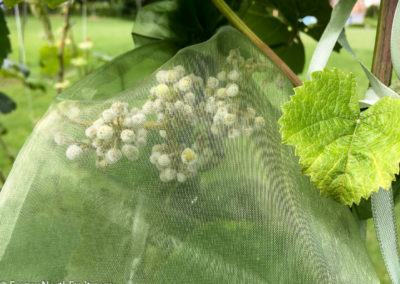
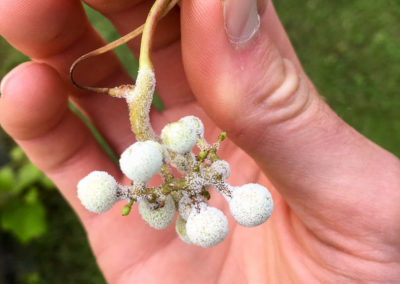
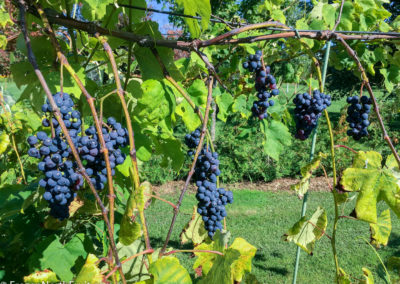
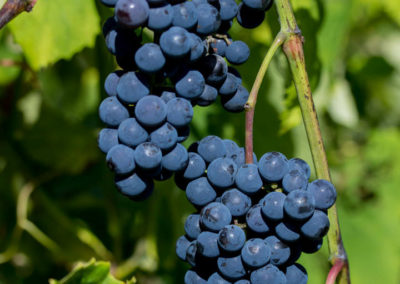
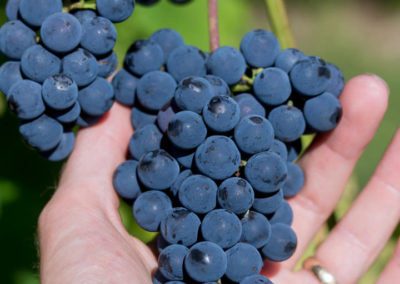
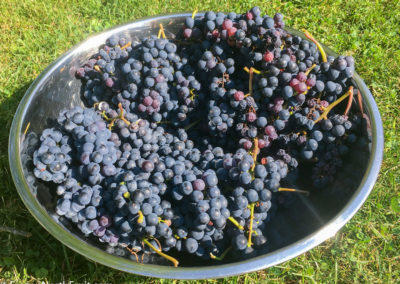
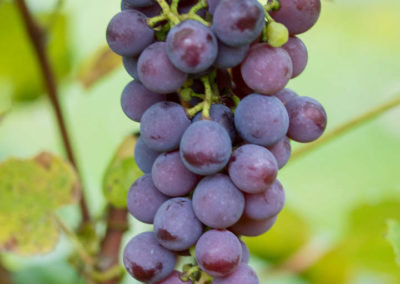
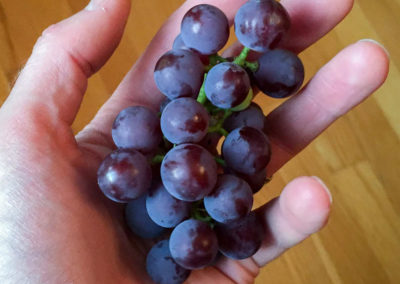
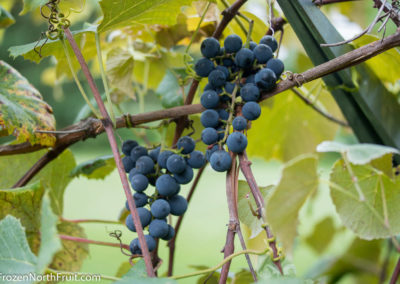
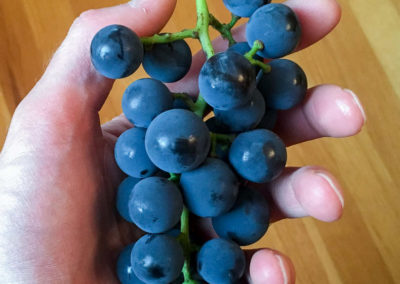
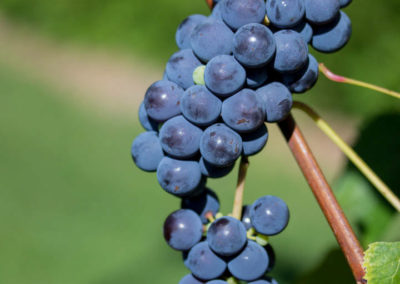

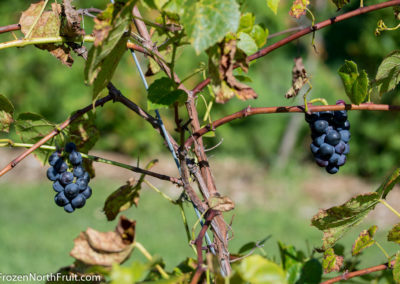

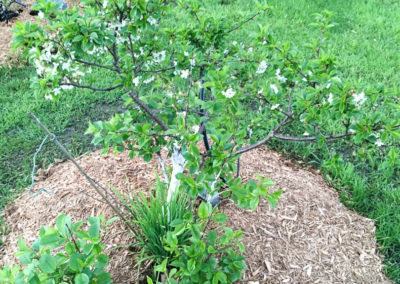
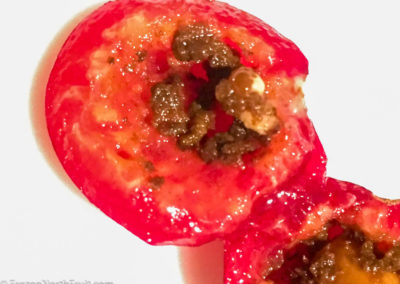
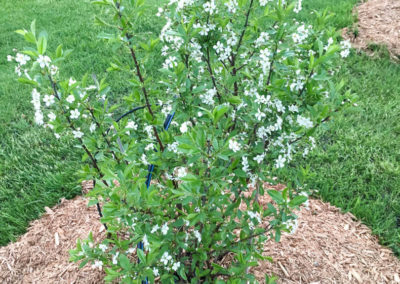
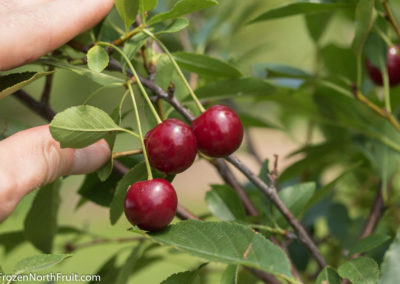

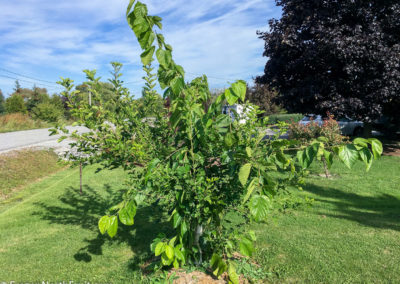
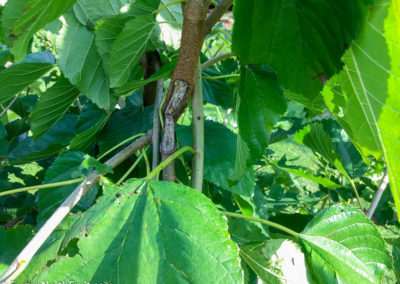

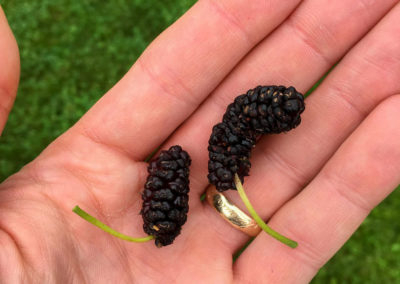
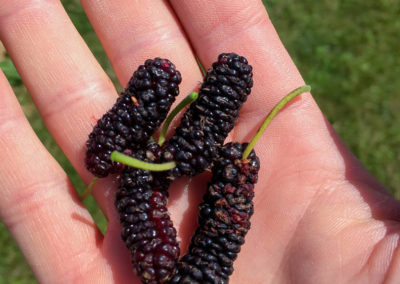
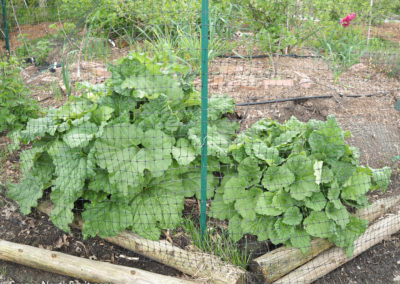
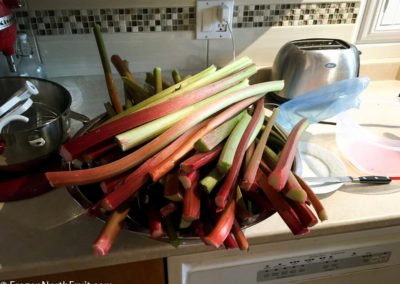
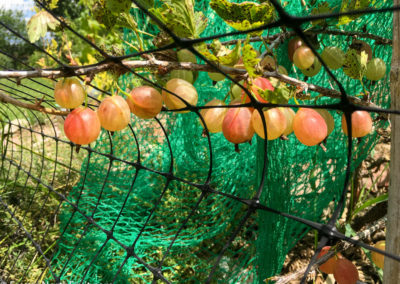
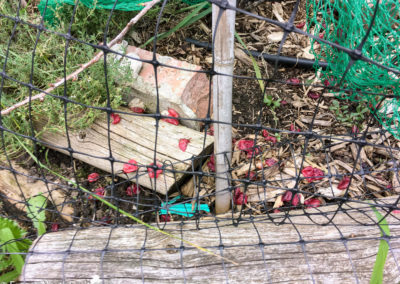

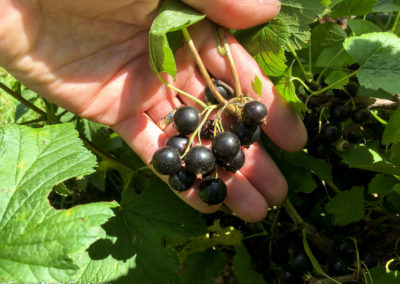
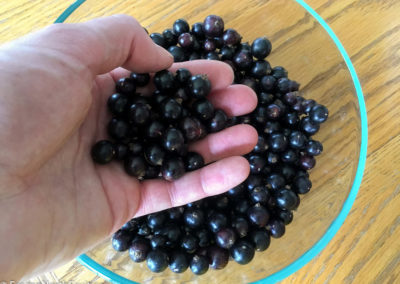
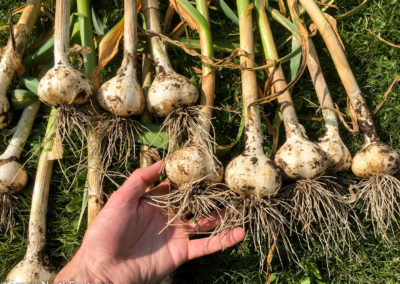
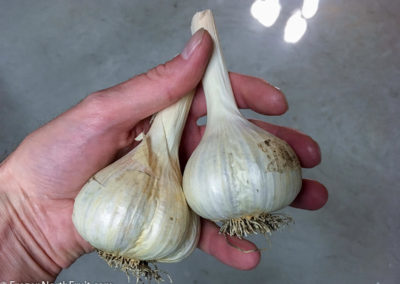
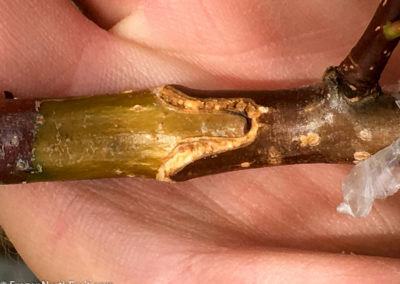
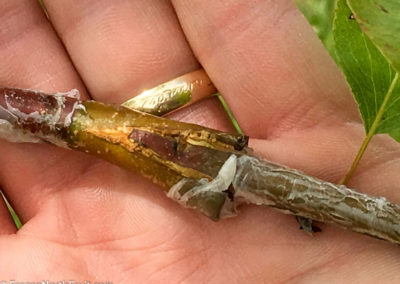
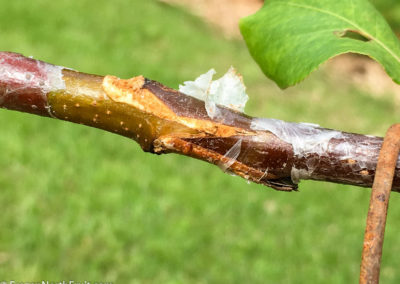
0 Comments